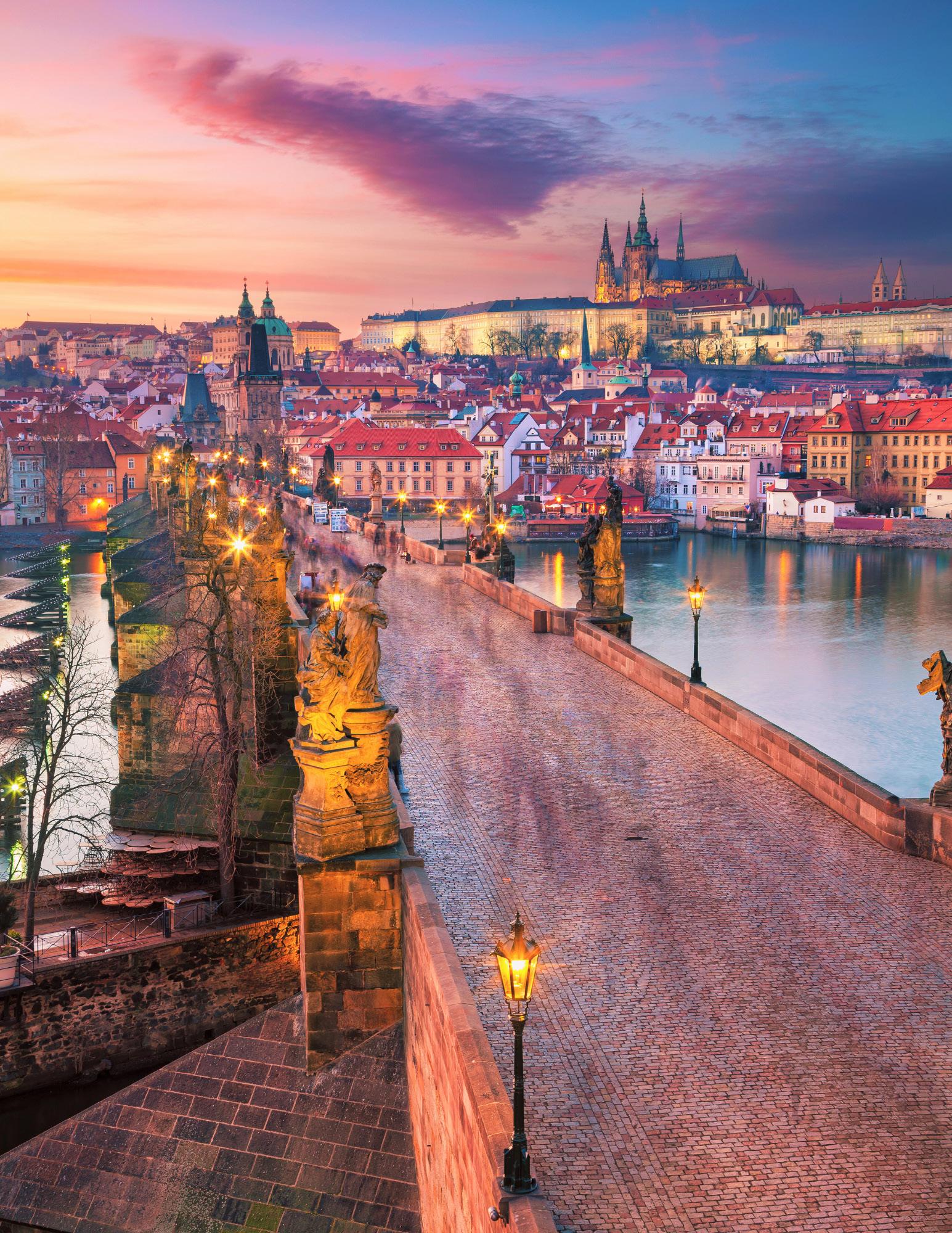
& Destinations

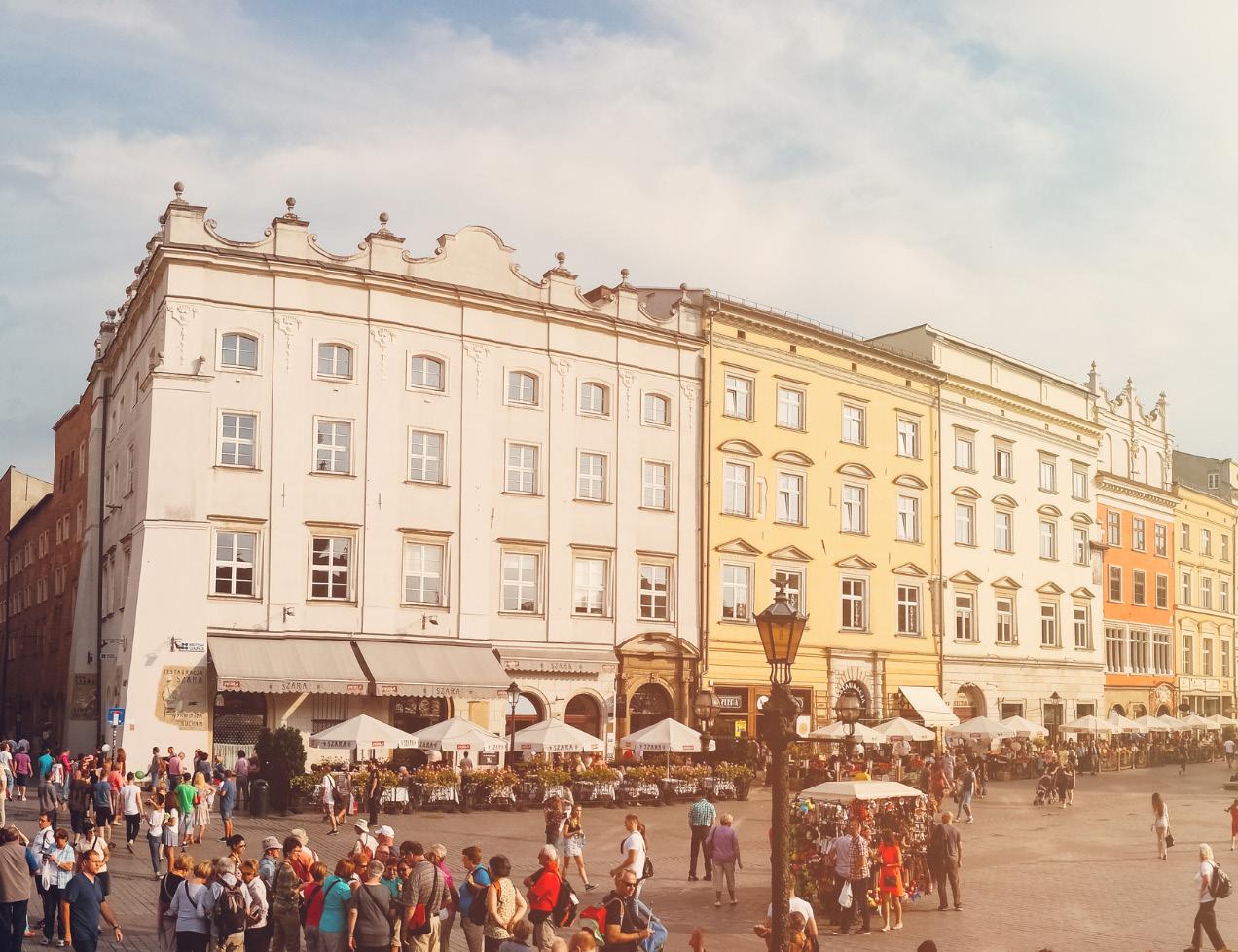
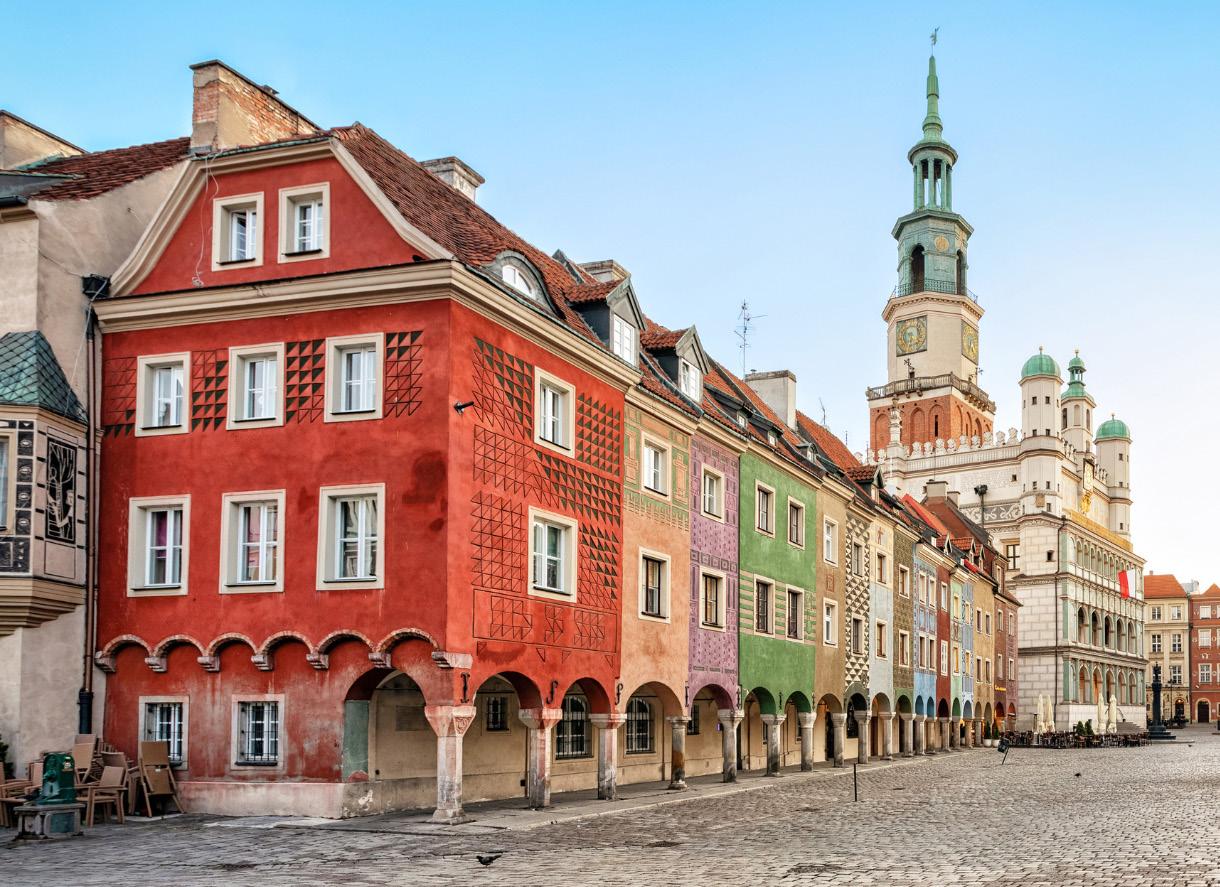





Taking a trip to Poland offers a rich blend of history, culture, and natural beauty that makes it a fascinating destination. As a country with a turbulent past, Poland has seen invasions, partitions, and world wars, yet it has emerged as a symbol of resilience and cultural pride. Visitors to Poland are greeted by cities and landscapes that reflect both its medieval roots and modern revitalization. Warsaw, the capital, exemplifies this resilience. Completely rebuilt after its near-total destruction in World War II, the city is a blend of modern skyscrapers and meticulously reconstructed historic districts like the UNESCO-listed Old Town. Its Royal Castle and the Warsaw Uprising Museum offer insight into Poland’s complex history. Kraków, another must-see destination, provides a glimpse into the medieval heart of the country. Its well-preserved Old Town,
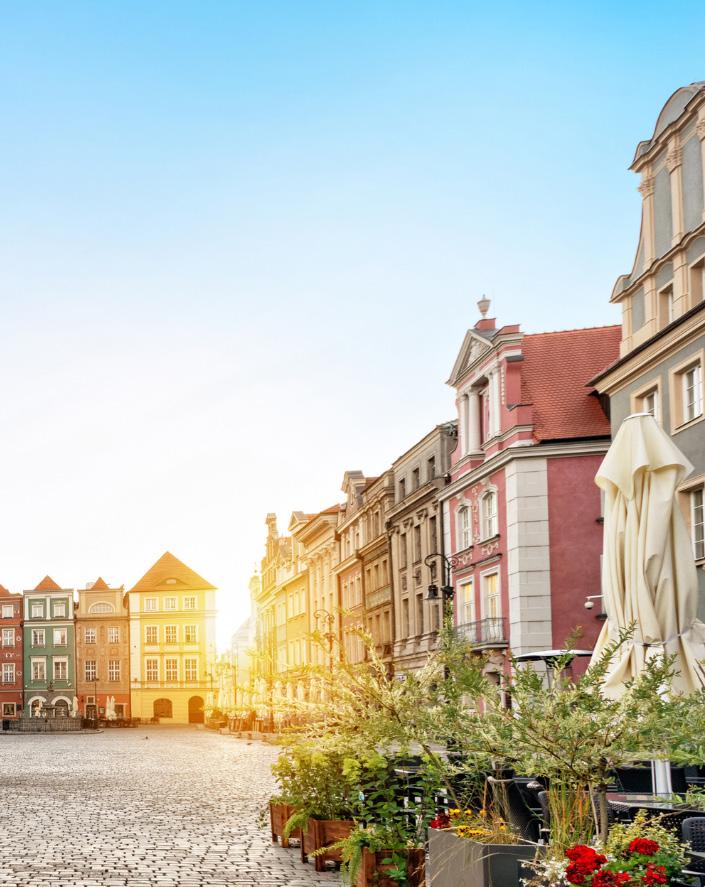
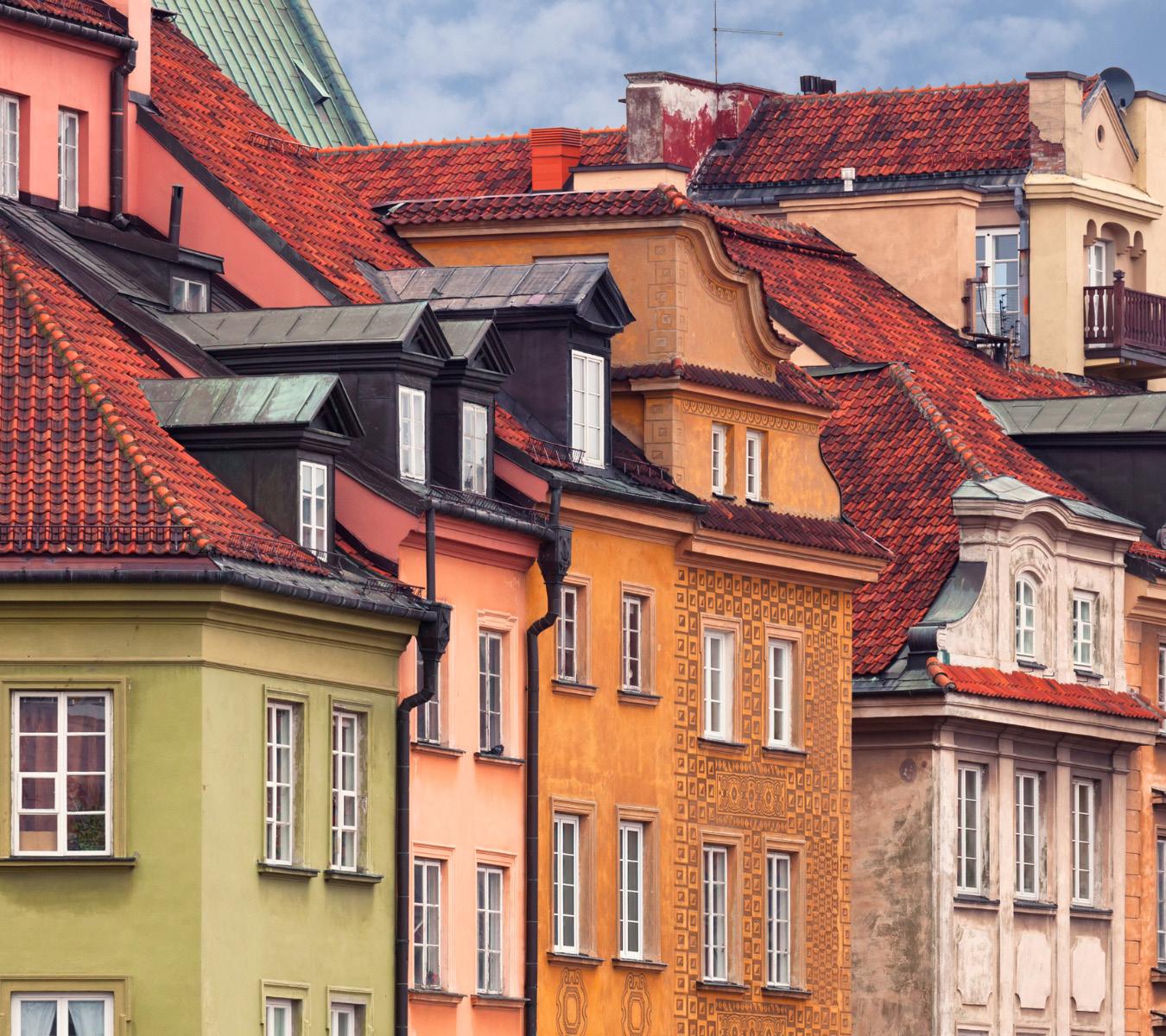
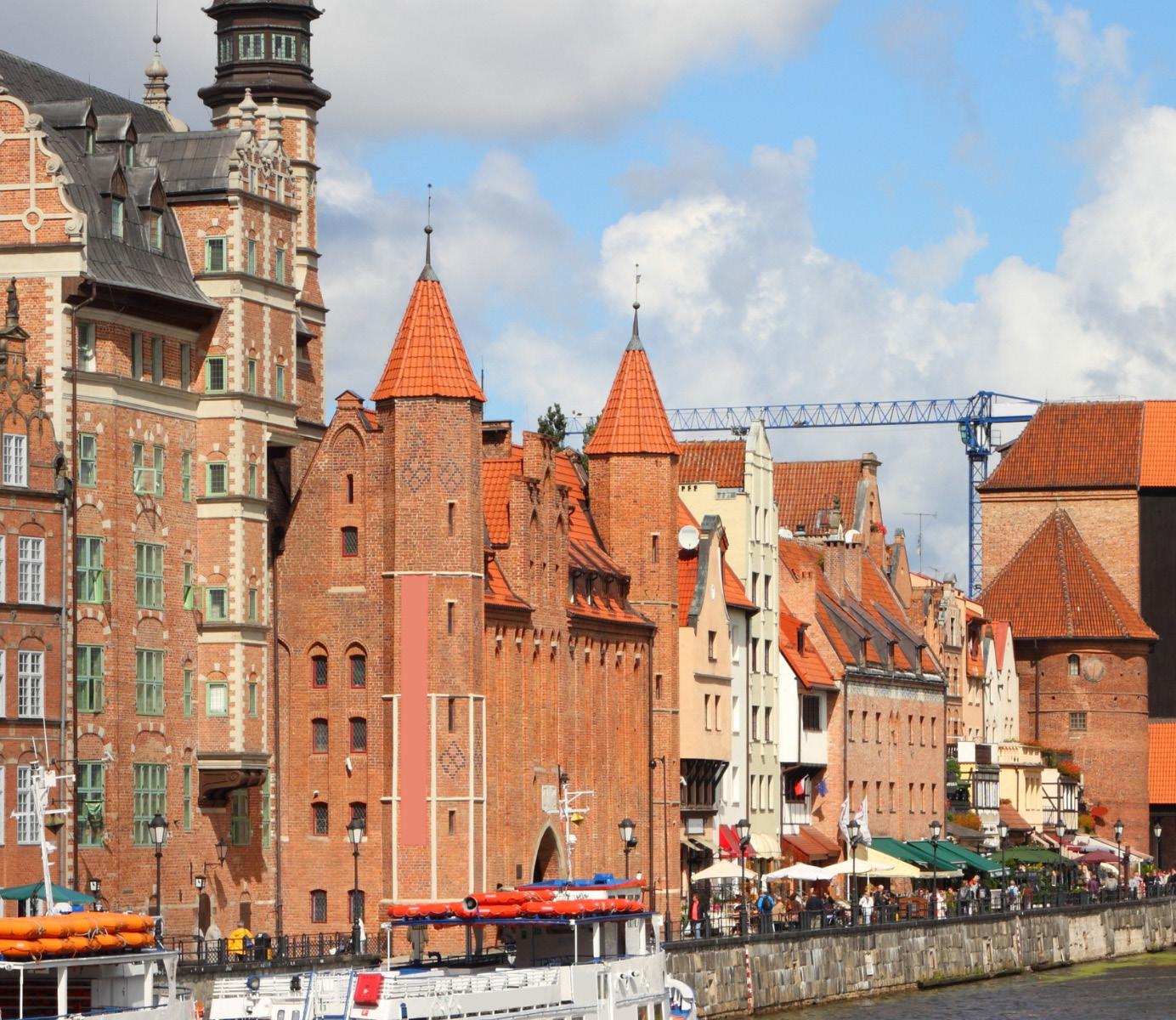
the Wawel Castle, and the ancient Jagiellonian University are surrounded by a lively cultural scene. Nearby, the poignant Auschwitz-Birkenau Memorial reminds visitors of the atrocities of the Holocaust, encouraging reflection and remembrance. Poland is also a place of deep cultural traditions. Festivals such as Easter and Christmas are celebrated with rich customs and colorful folk art. Poland’s cuisine, including dishes like pierogi, bigos, and żurek, is hearty and rooted in centuries of agricultural life. Outside the cities, travelers can explore Poland’s diverse landscapes, from the Tatra Mountains to the Baltic Sea. A trip to Poland is not only a journey through time but also an opportunity to experience a country that treasures its heritage while embracing modernity.
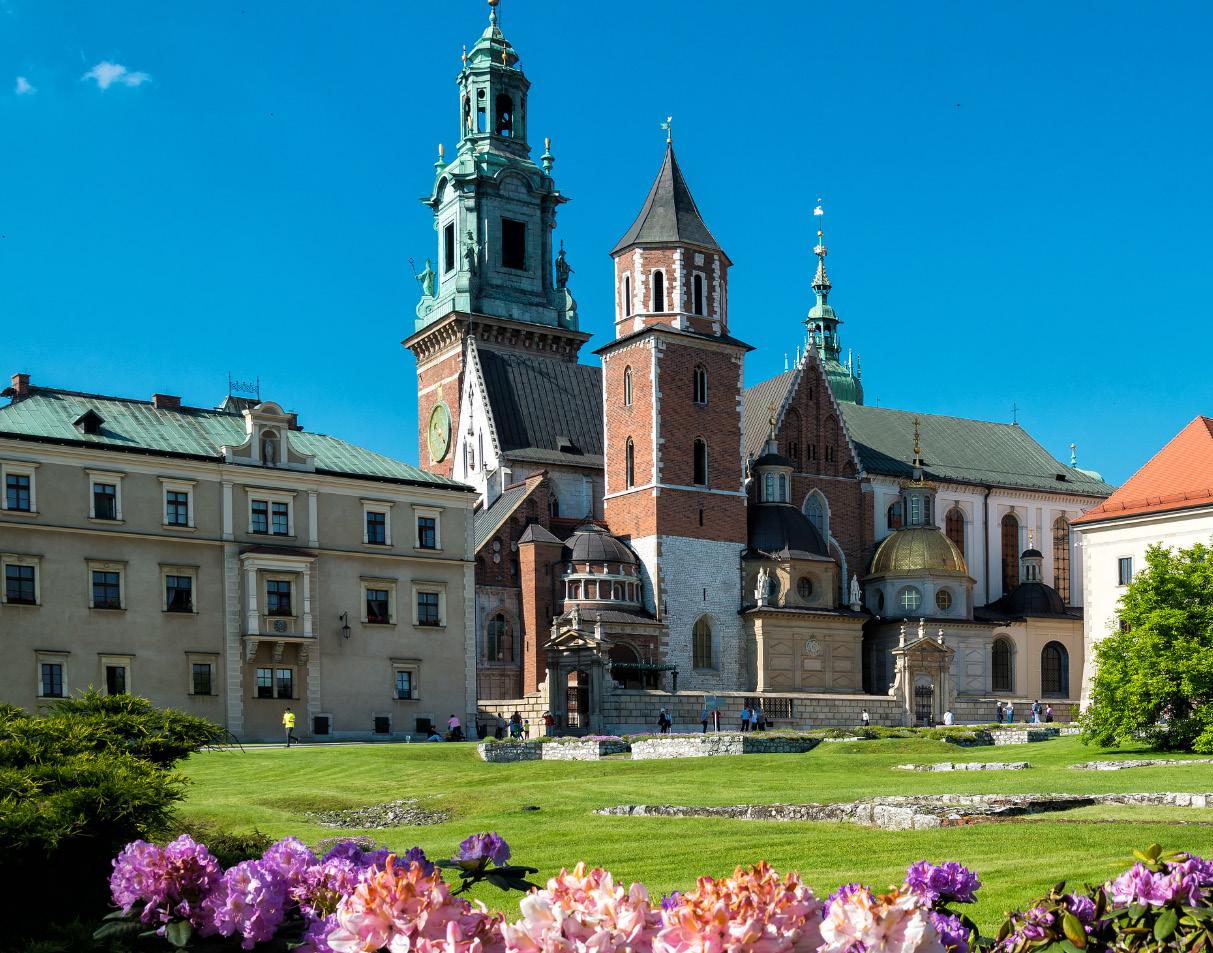
Wawel Castle, perched atop Wawel Hill in Kraków, Poland, is a historic and architectural gem that dates back to the 11th century. It served as the residence of Polish kings for centuries and is a symbol of national pride. The castle’s construction combines Romanesque, Gothic, Renaissance, and Baroque styles, reflecting Poland’s dynamic history and cultural influences. As a royal residence, Wawel Castle was the political and cultural heart of Poland. It hosted important events such as coronations, royal weddings, and diplomatic meetings. One of its most famous kings, Sigismund I the Old, oversaw major renovations in the 16th century, introducing Renaissance
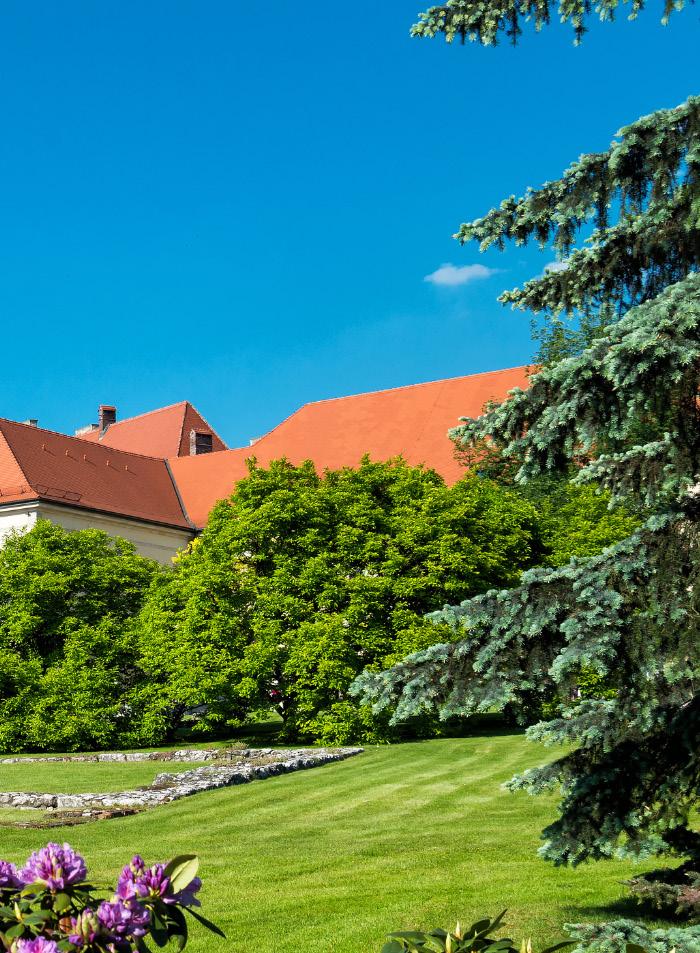
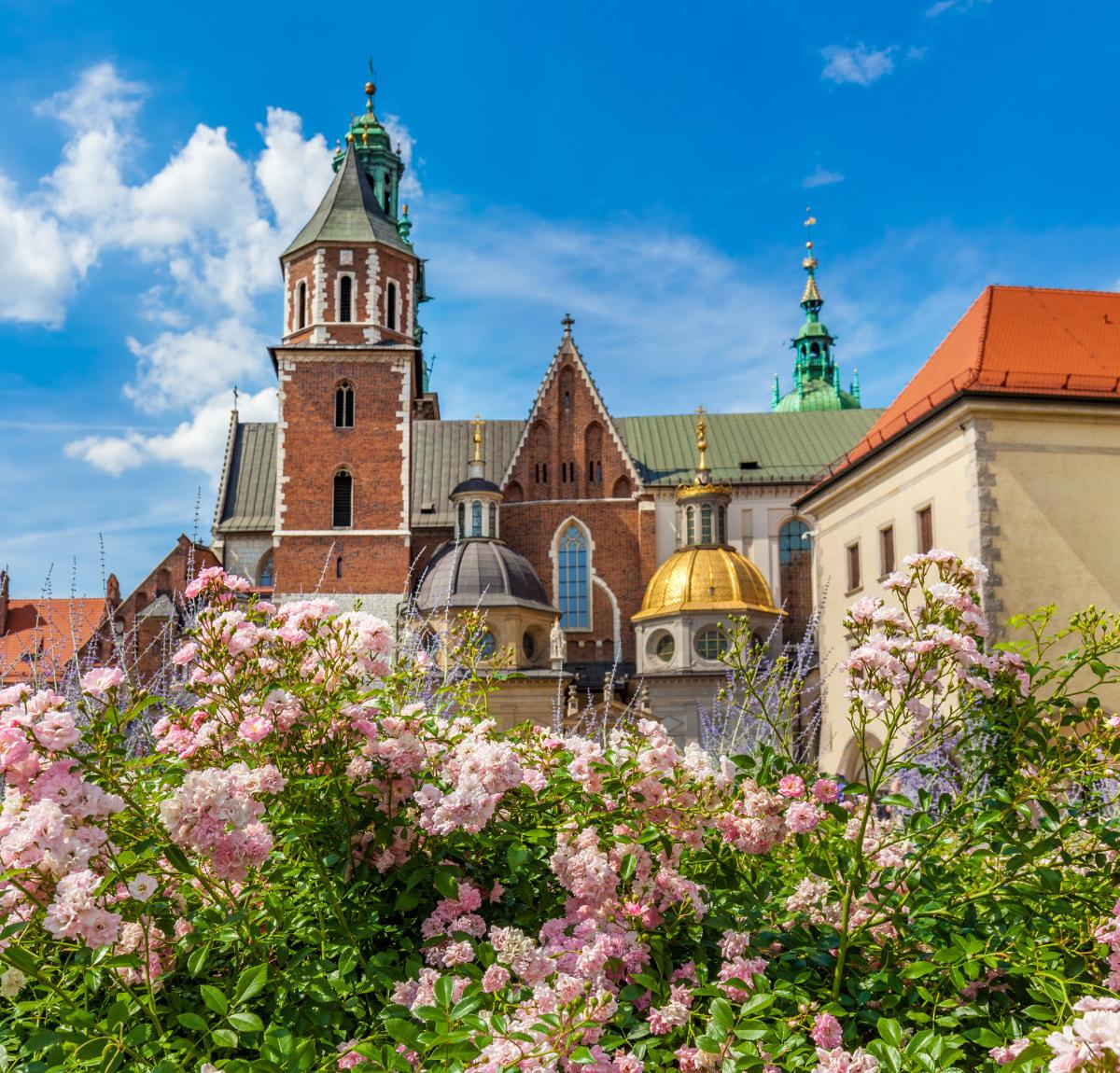
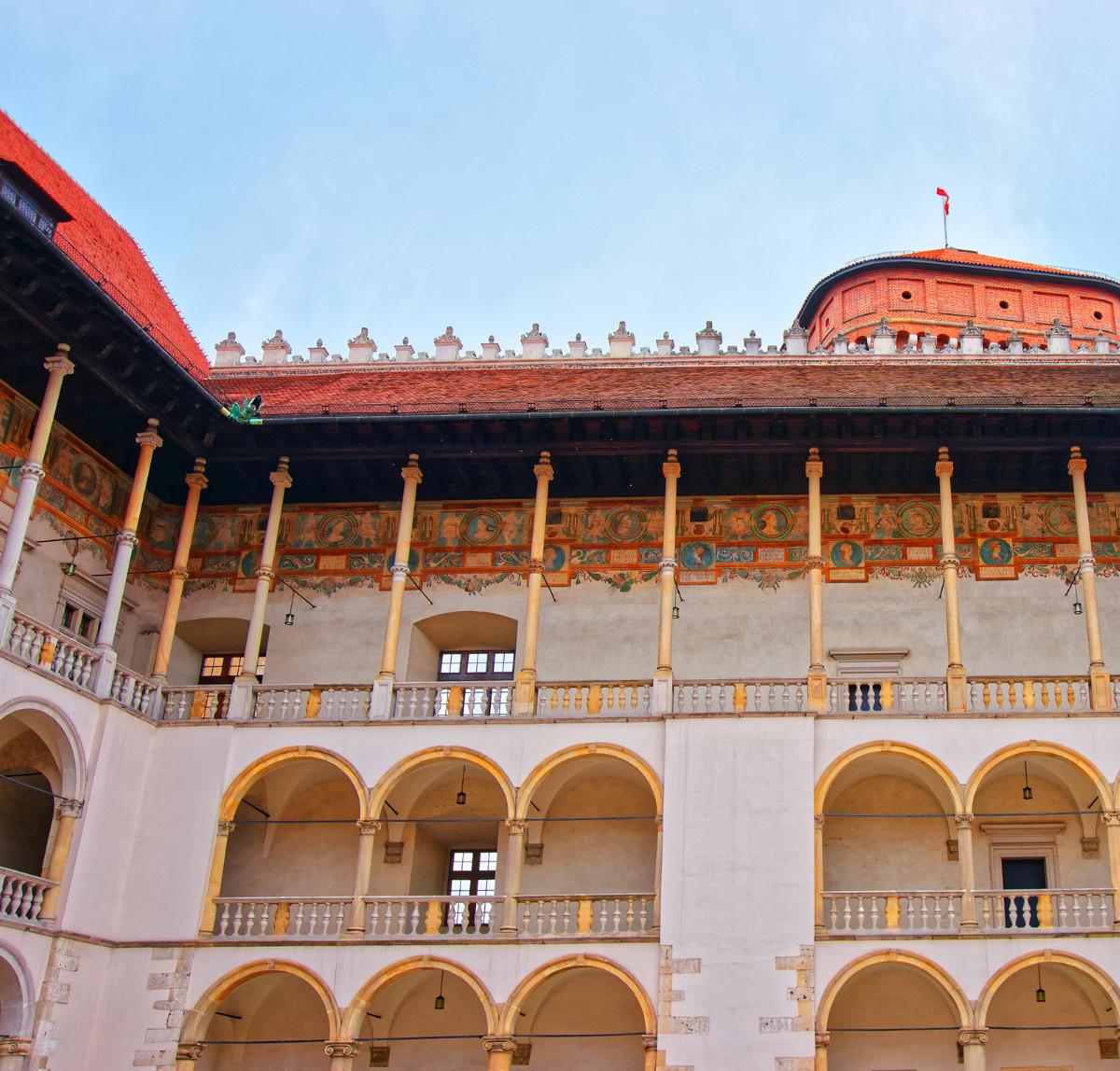
elements that gave the castle much of its current grandeur. Today, Wawel Castle is a UNESCO World Heritage site and a major tourist attraction. Visitors can explore the State Rooms, which house an extensive collection of art and historical artifacts, as well as the Royal Apartments, Treasury, and Armory. The Wawel Cathedral, located on the castle grounds, is the final resting place of many Polish monarchs. Wawel Castle remains a powerful symbol of Polish heritage, drawing visitors who want to experience its rich history, stunning architecture, and significance in the nation’s cultural identity.
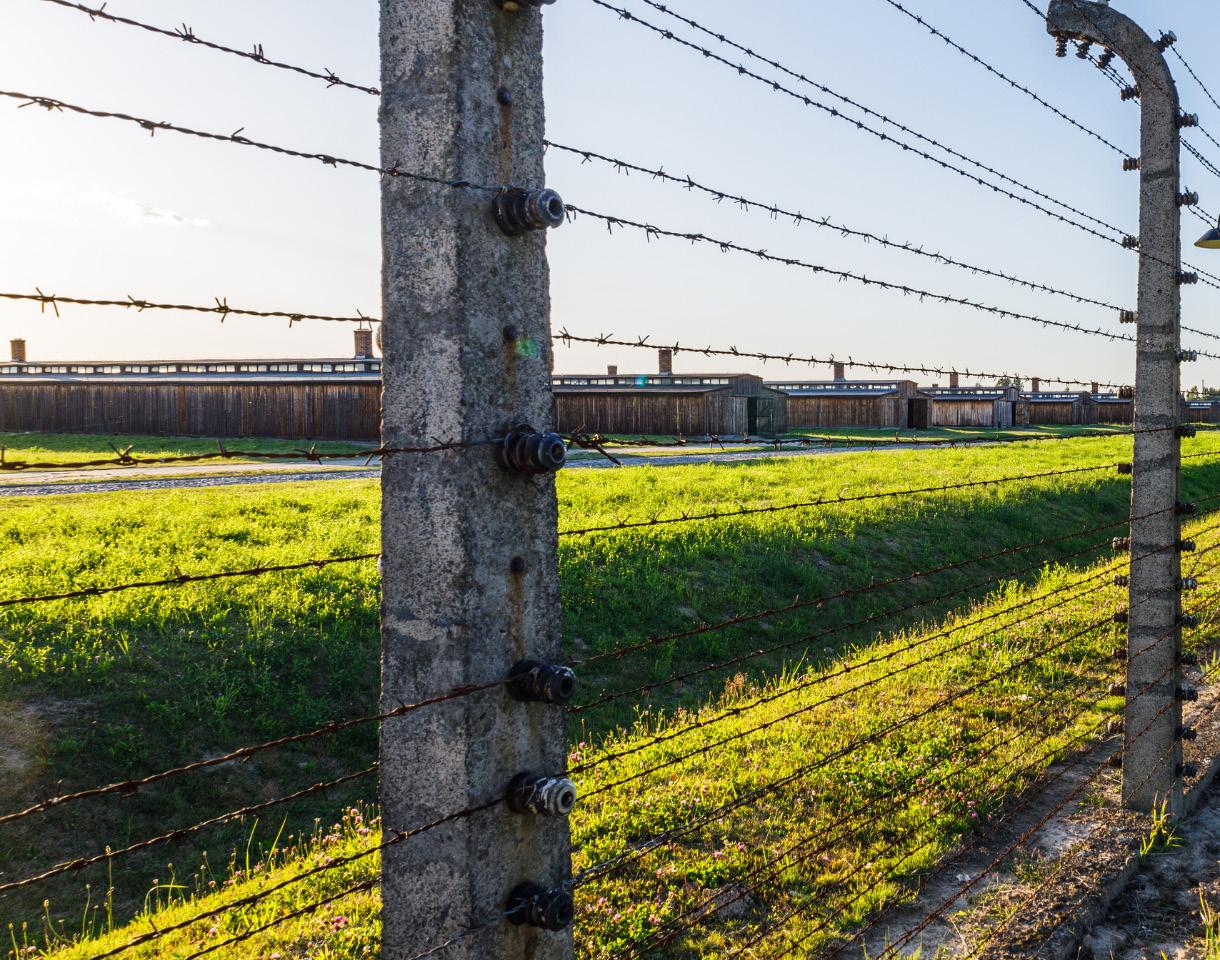
Auschwitz-Birkenau, located in Oświęcim, Poland, was the largest of the Nazi concentration and extermination camps during World War II. It became a central symbol of the Holocaust, where over 1.1 million people, mostly Jews, were murdered between 1940 and 1945. The camp complex included Auschwitz I, a concentration camp, and Auschwitz II-Birkenau, which became the primary site of mass executions using gas chambers. Auschwitz-Birkenau was not only a place of extermination but also of forced labor, where prisoners suffered inhumane conditions, starvation, and brutal treatment. It housed people from various persecuted groups, including Jews, Romani, Soviet prisoners of war, and Polish political prisoners. The systematic
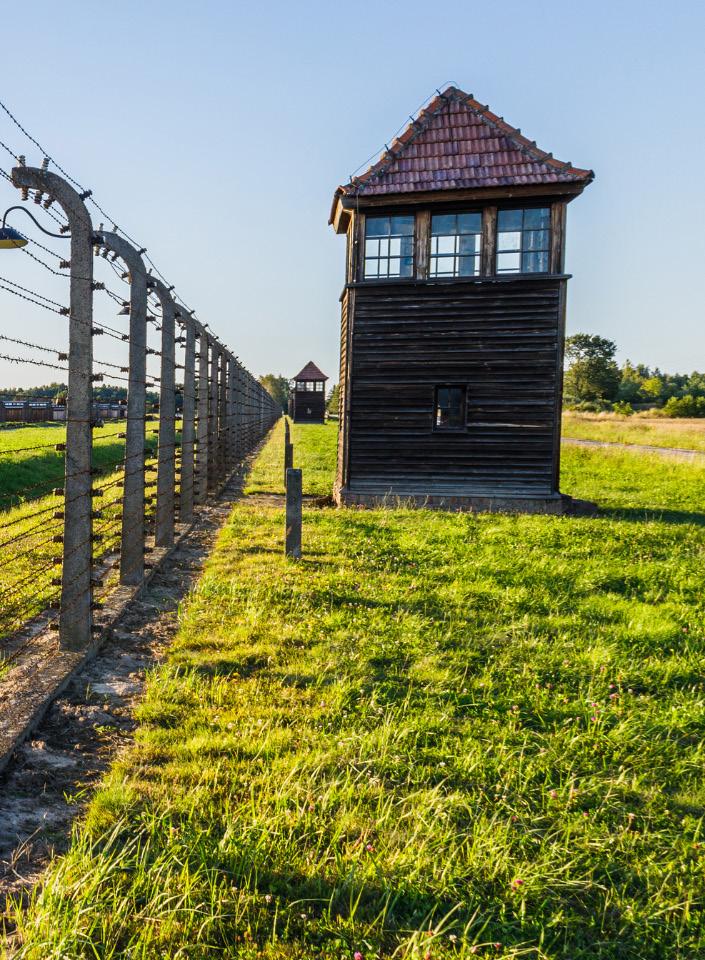
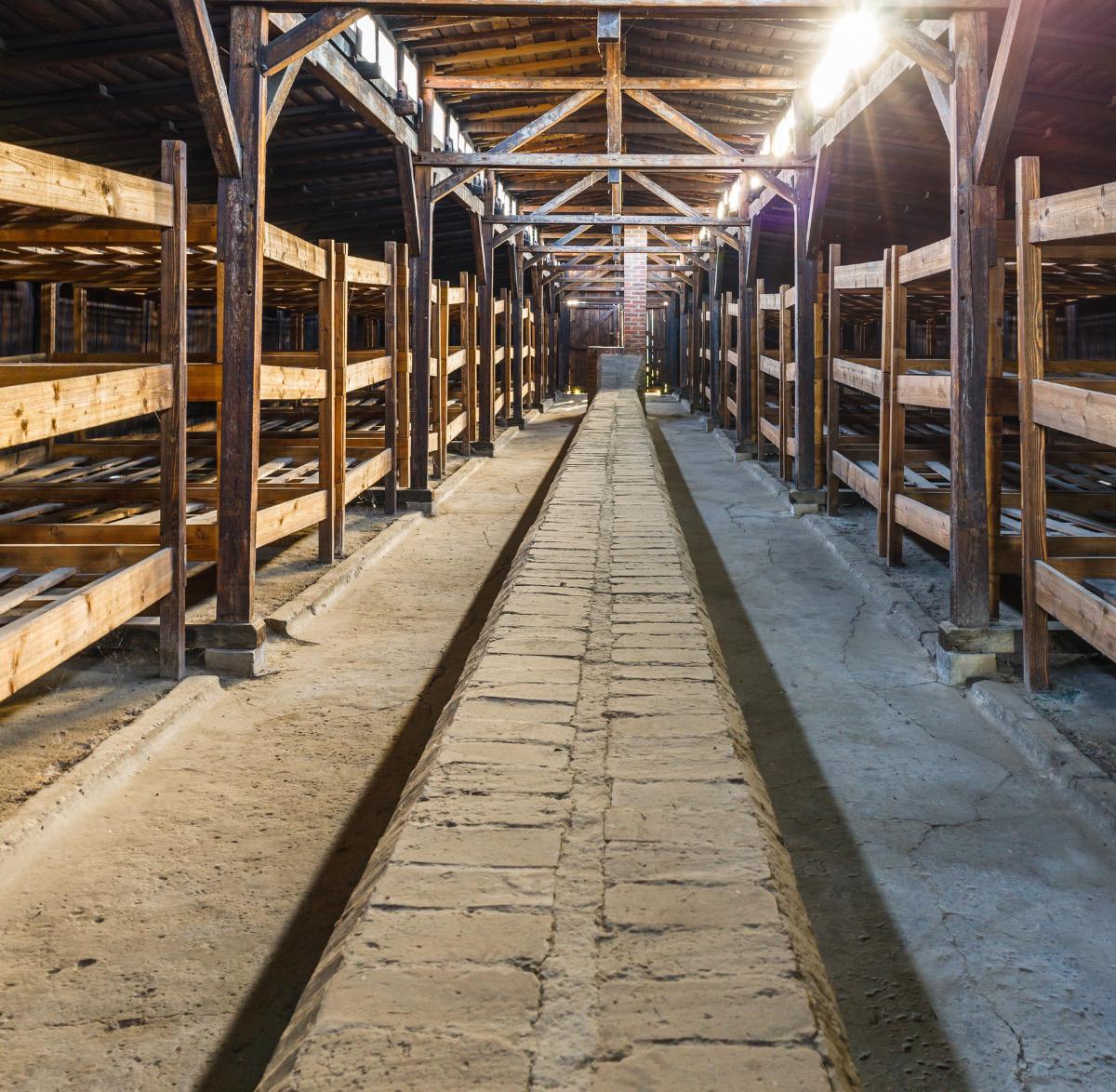
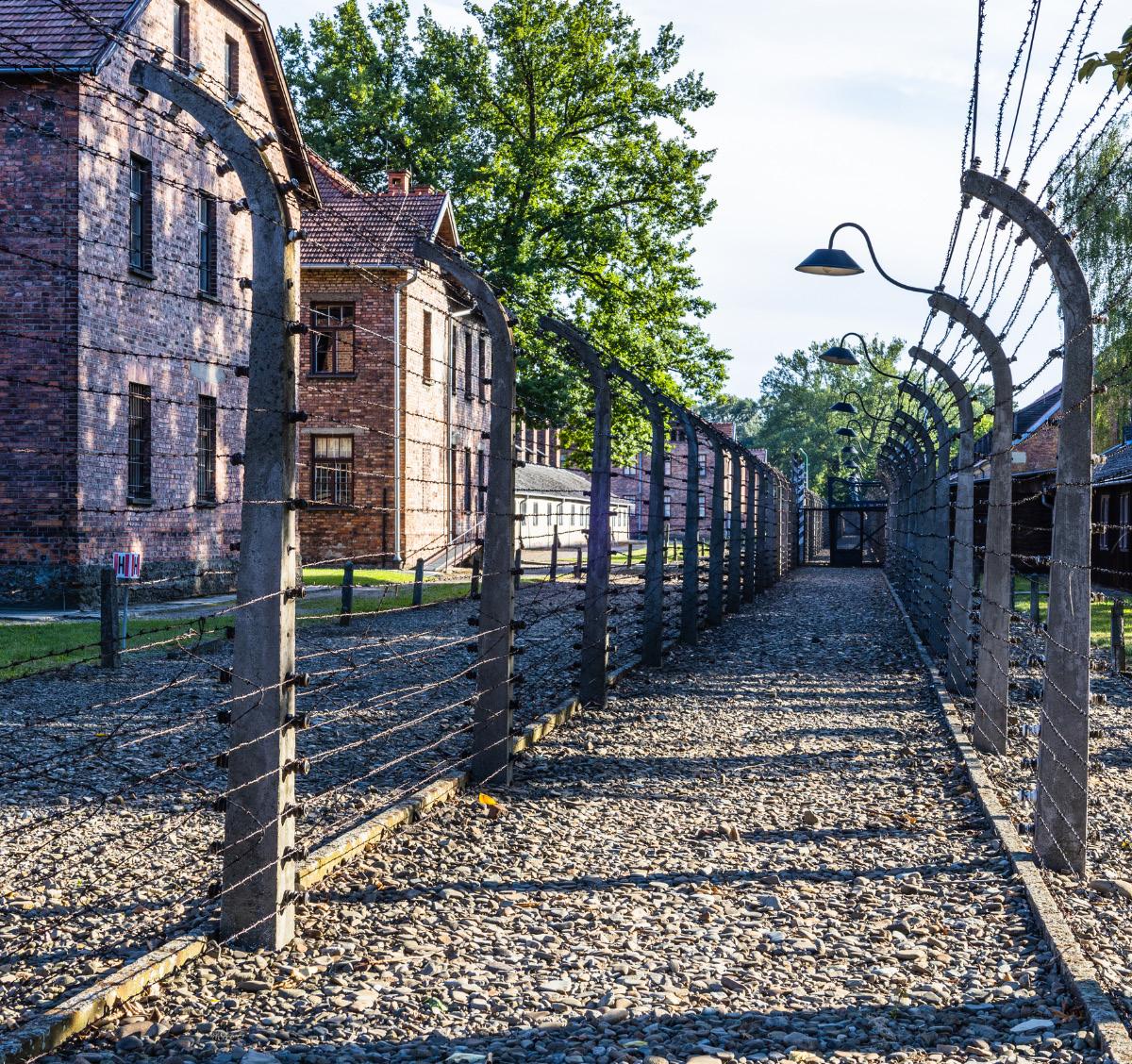
killings at Birkenau were carried out with chilling efficiency, using Zyklon B gas in the gas chambers. The camp became synonymous with the industrialized mass murder that characterized the Nazi regime’s “Final Solution.” Liberated by Soviet forces in January 1945, Auschwitz-Birkenau now stands as a memorial and museum, preserving the memory of the atrocities committed there. It serves as a stark reminder of the horrors of genocide and the importance of remembering history to prevent future atrocities. Visitors come from around the world to pay their respects and learn from this dark chapter in human history.
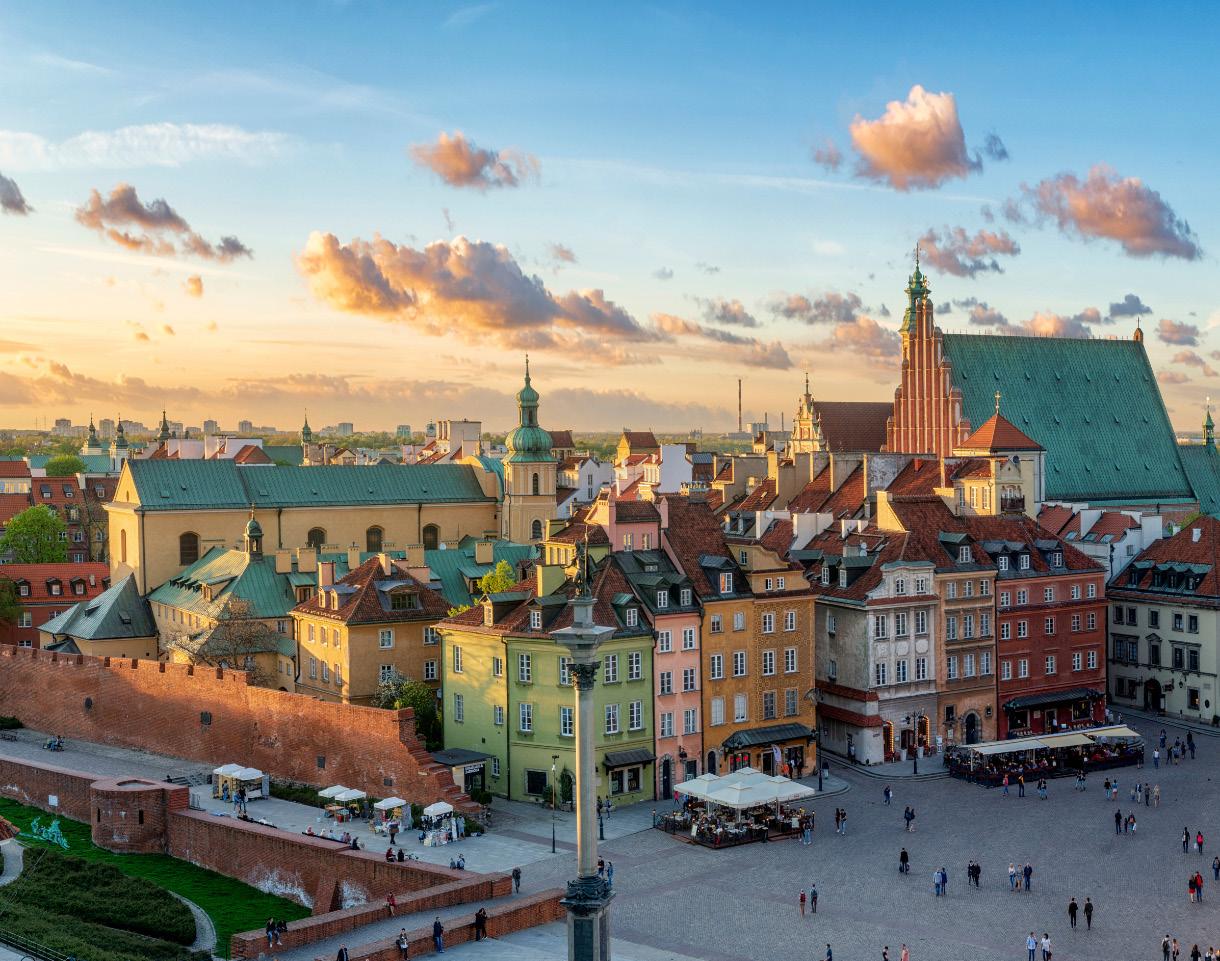
Old Town in Warsaw, Poland, is a historic district that stands as a symbol of resilience and reconstruction. Originally established in the 13th century, it was the heart of Warsaw, filled with Gothic, Renaissance, and Baroque architecture, bustling market squares, and important civic buildings. During World War II, the Old Town was almost completely destroyed by Nazi forces during the Warsaw Uprising in 1944, leaving it in ruins. After the war, the people of Warsaw undertook an extraordinary reconstruction project, meticulously rebuilding the Old Town to its former glory. Using paintings, photographs, and historical documents, the city’s iconic buildings,
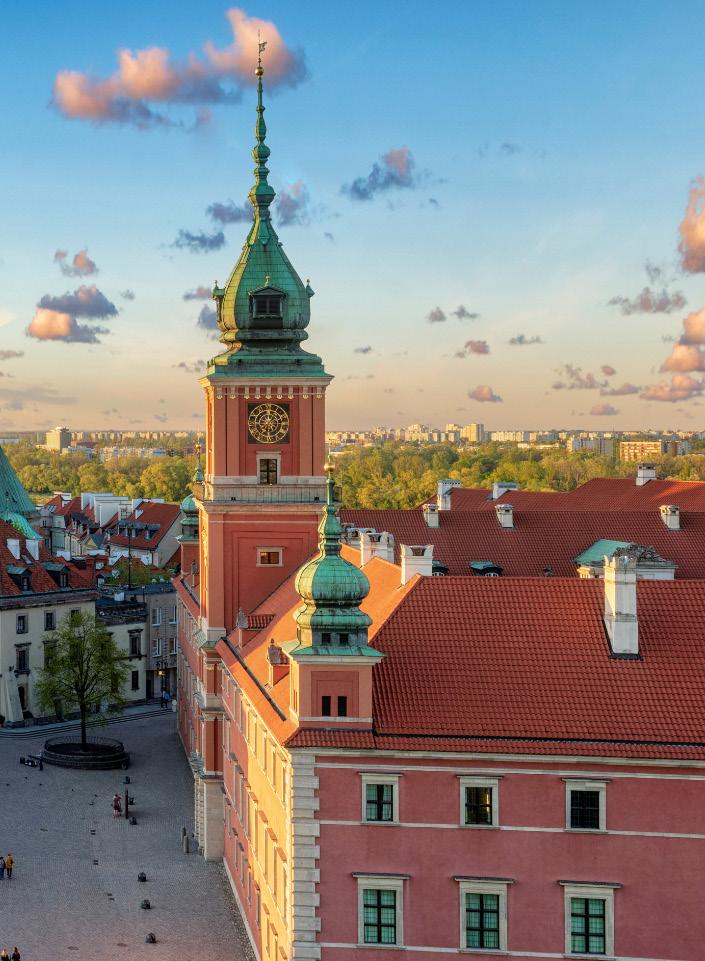
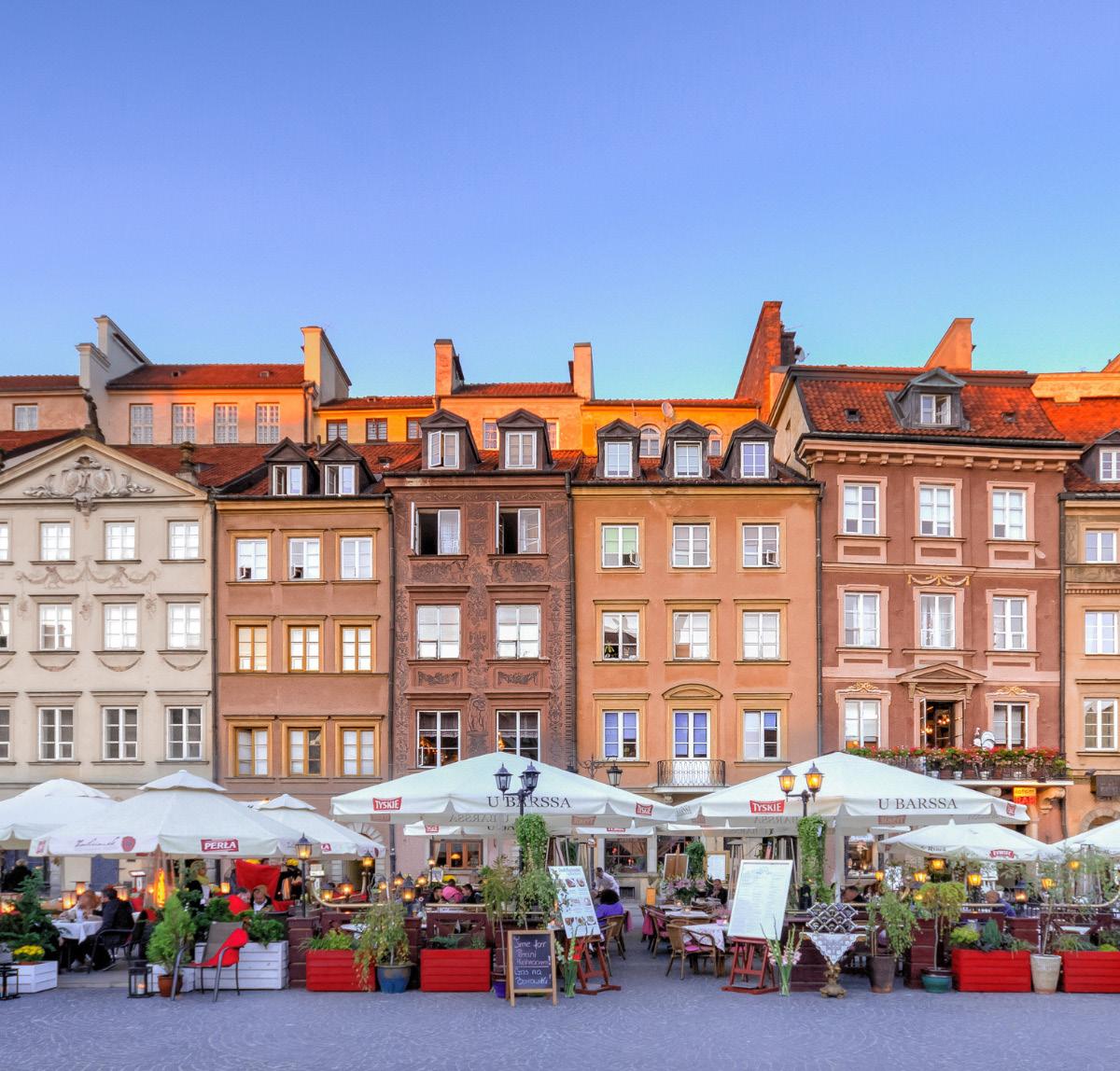

such as the Royal Castle, St. John’s Cathedral, and the colorful townhouses lining the Market Square, were faithfully restored. This effort was recognized internationally, and in 1980, Warsaw’s Old Town was declared a UNESCO World Heritage site for its successful and historically accurate restoration. Today, Old Town is a vibrant area, attracting both locals and tourists with its charming streets, cafés, and historical sites. The Market Square, with its mermaid statue, is a central gathering point, surrounded by art galleries, restaurants, and museums. Old Town represents not only Warsaw’s rich history but also its resilience and determination to rise from devastation.
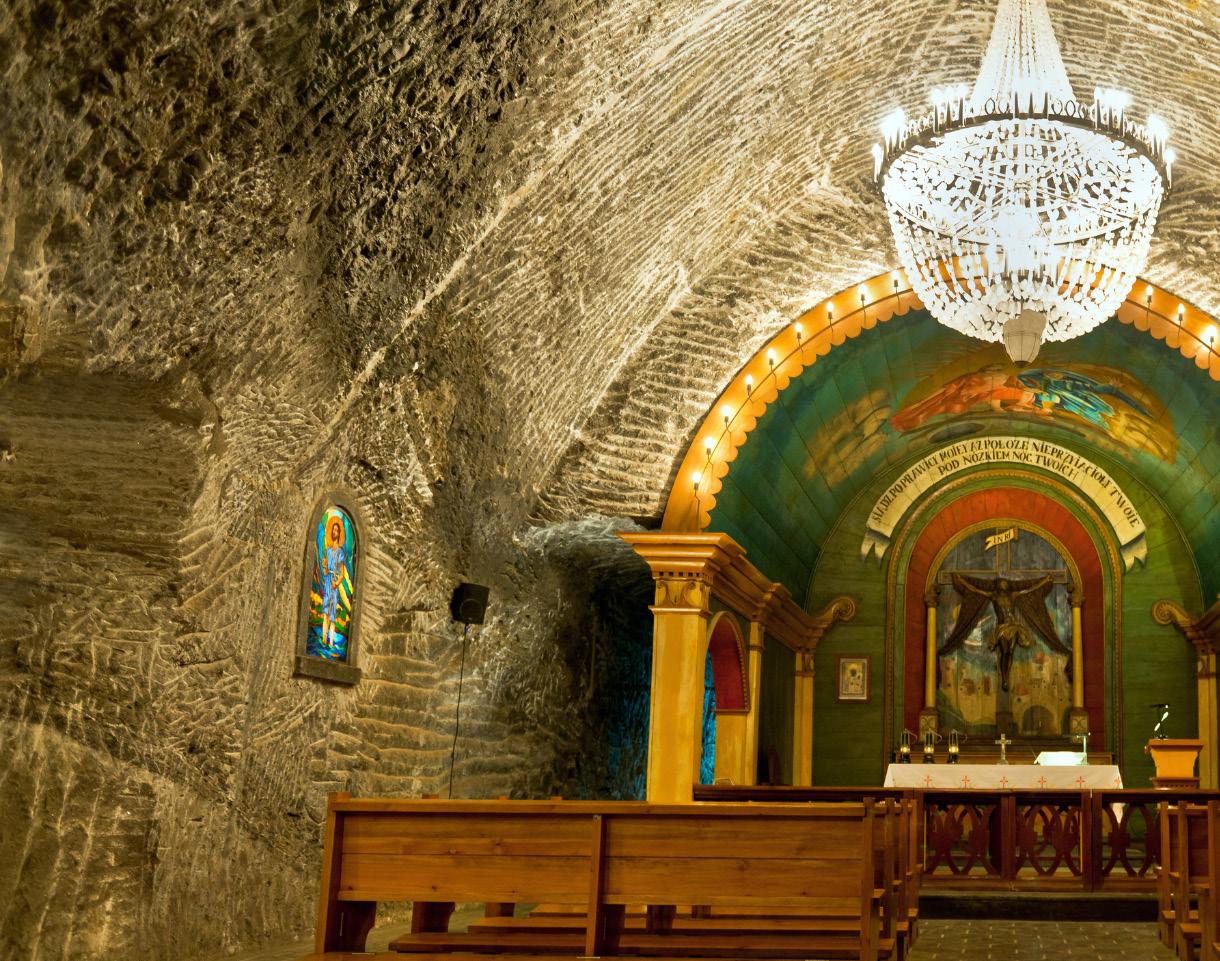
The Wieliczka Salt Mine, located near Kraków, Poland, is one of the world’s oldest salt mines, with a history dating back to the 13th century. For centuries, it was a vital source of salt, a precious commodity at the time, and contributed significantly to Poland’s economy. The mine stretches for over 300 kilometers (186 miles) of tunnels and chambers spread across nine levels, reaching depths of over 327 meters (1,073 feet). What makes the Wieliczka Salt Mine truly extraordinary is its underground world of art and history. Miners, over the centuries, carved intricate statues, chapels, and even entire cathedrals out of rock salt. The Chapel of St. Kinga, one of the mine’s
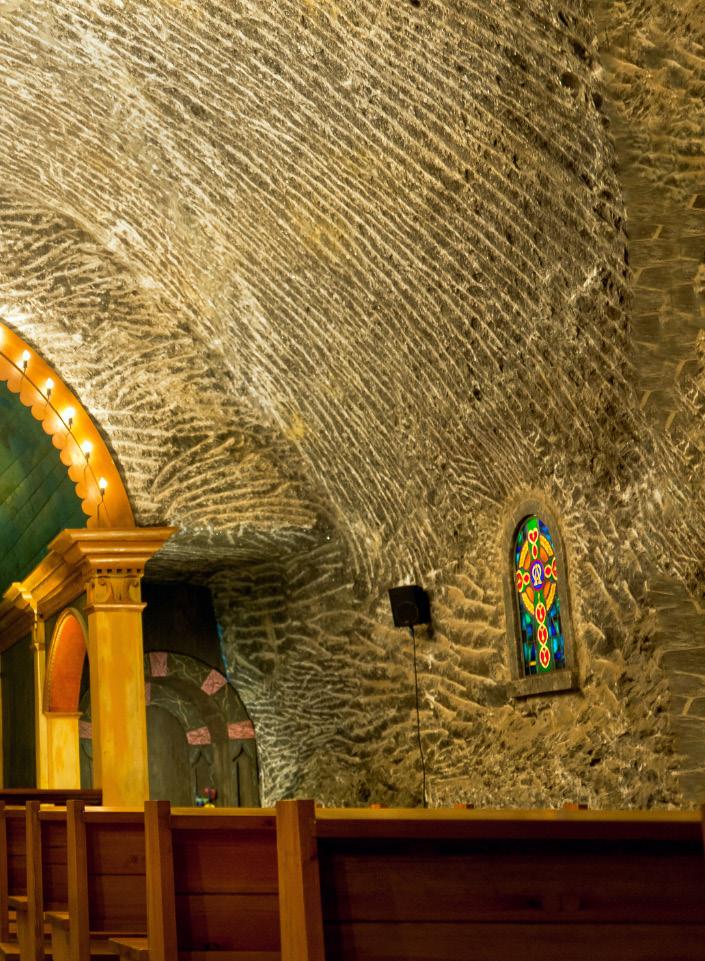
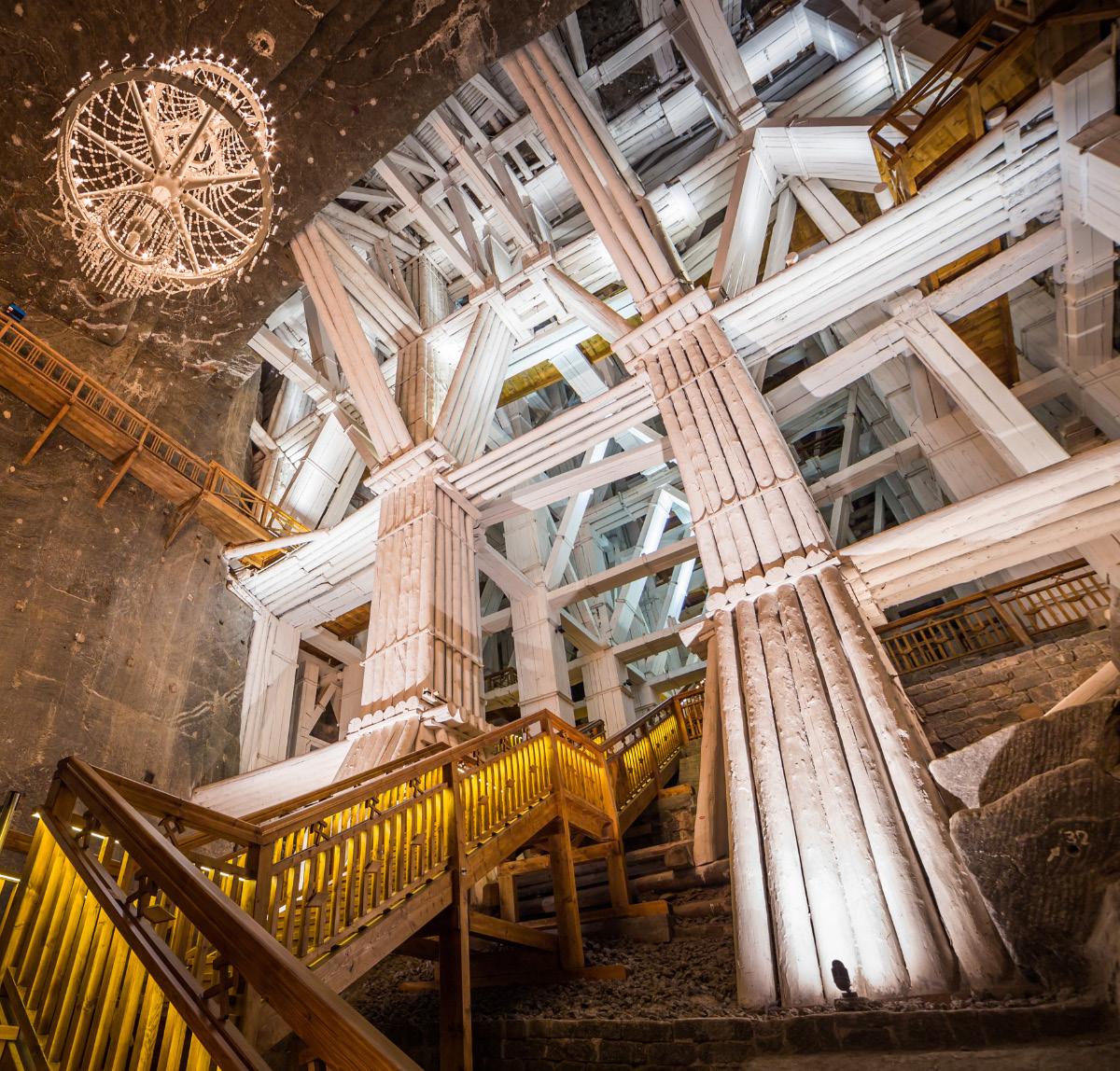
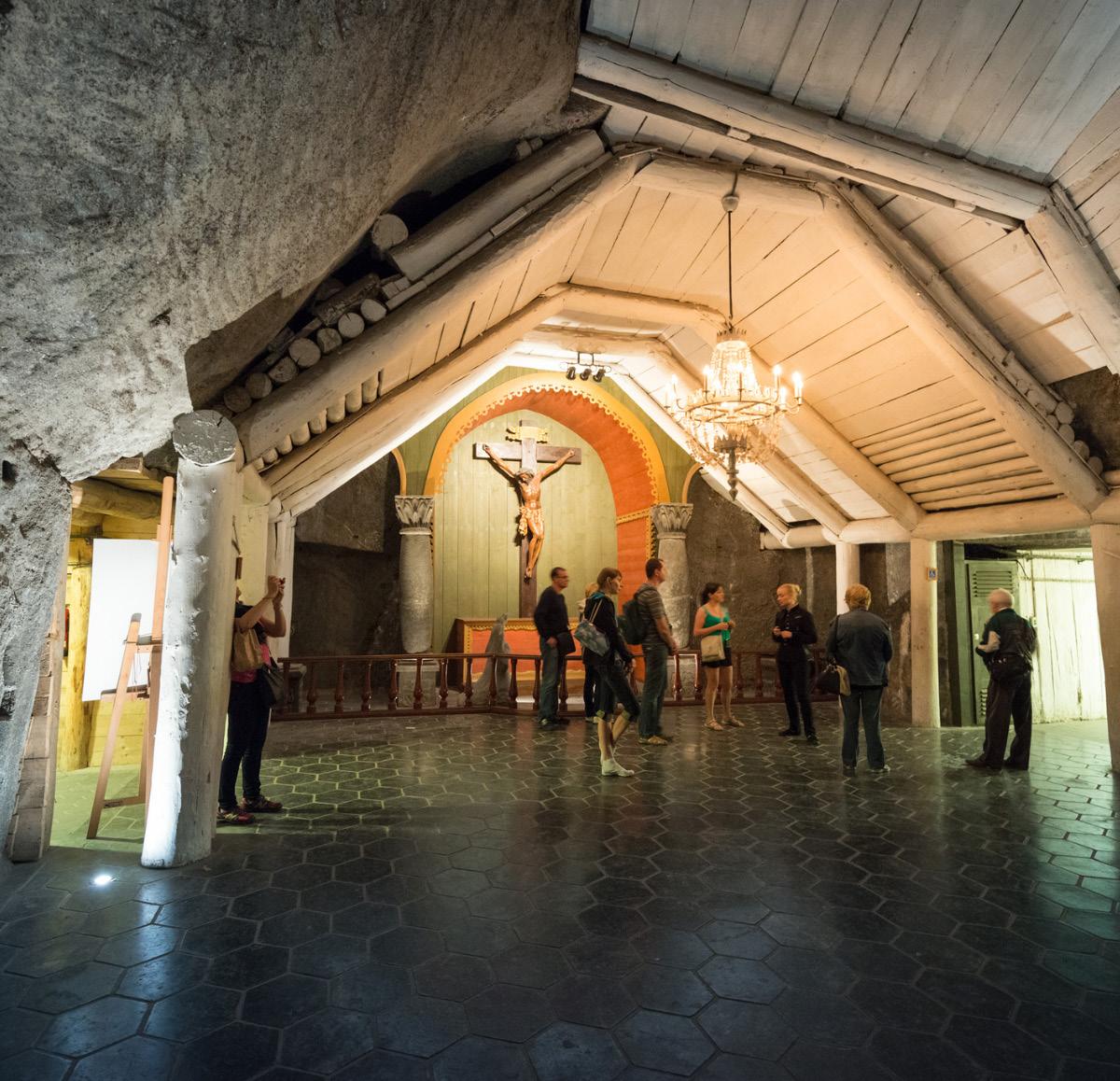
most famous attractions, is an awe-inspiring underground church adorned with salt chandeliers, sculptures, and reliefs depicting biblical scenes. In 1978, the Wieliczka Salt Mine was designated a UNESCO World Heritage site, recognized for its unique combination of natural beauty and human craftsmanship. Today, it draws over a million visitors annually, who can explore its labyrinthine passages, underground lakes, and remarkable salt-carved monuments. The mine also has a history of being a place of healing due to the microclimate in its lower levels, believed to benefit respiratory health.
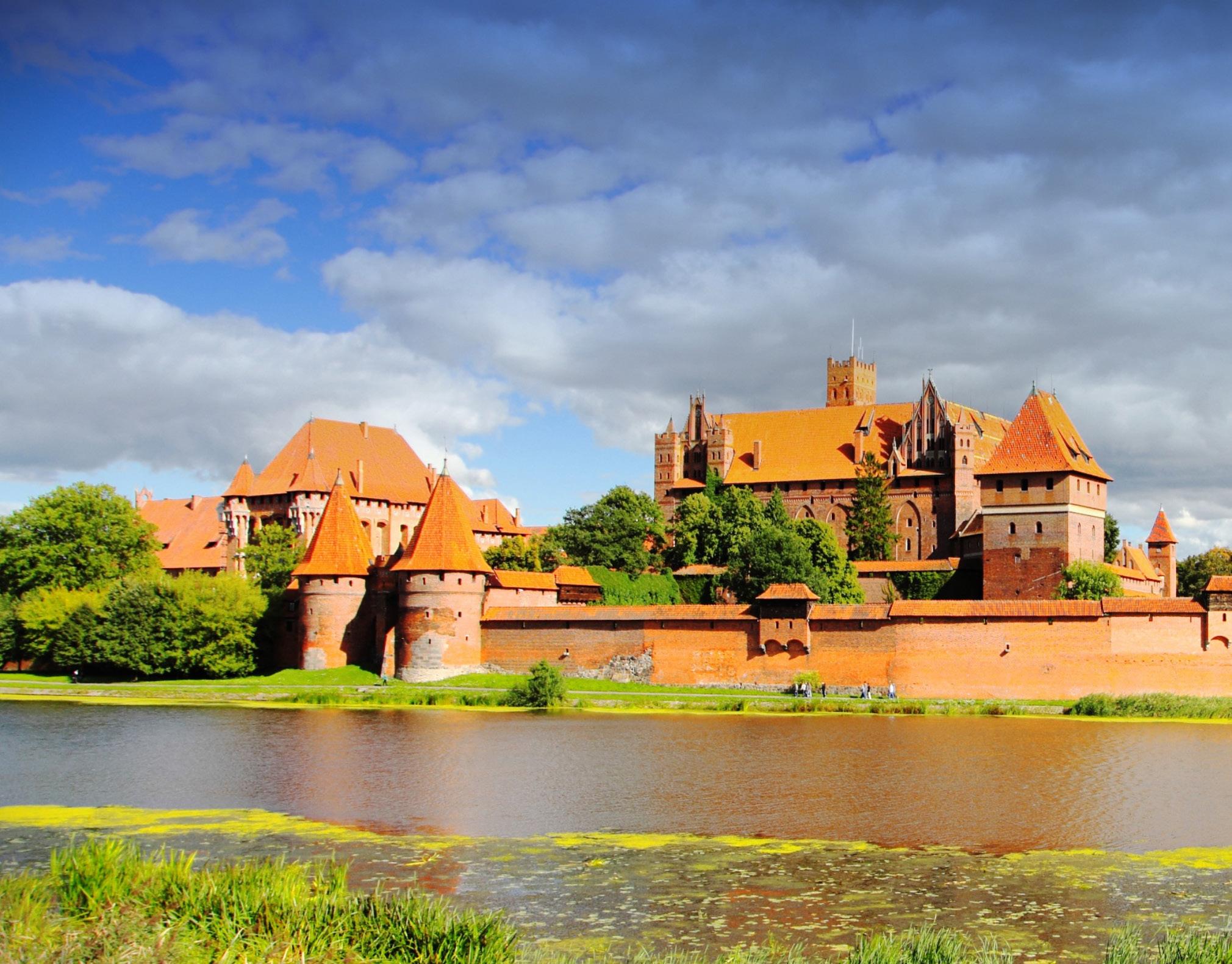
Malbork Castle, located in northern Poland, is the largest castle in the world by land area and one of the most impressive examples of medieval fortifications in Europe. Built in the 13th century by the Teutonic Knights, a German Roman Catholic military order, the castle served as their headquarters and a symbol of their power during the height of their reign over the Baltic region. Originally called Marienburg (Castle of Mary), the castle is a masterpiece of Gothic architecture, constructed entirely of brick. It is a complex of three separate castles: the High Castle, the Middle Castle, and the Lower Castle, each serving different purposes. The imposing walls, towers, and defensive structures are a testament to its military importance during the Middle Ages. Malbork
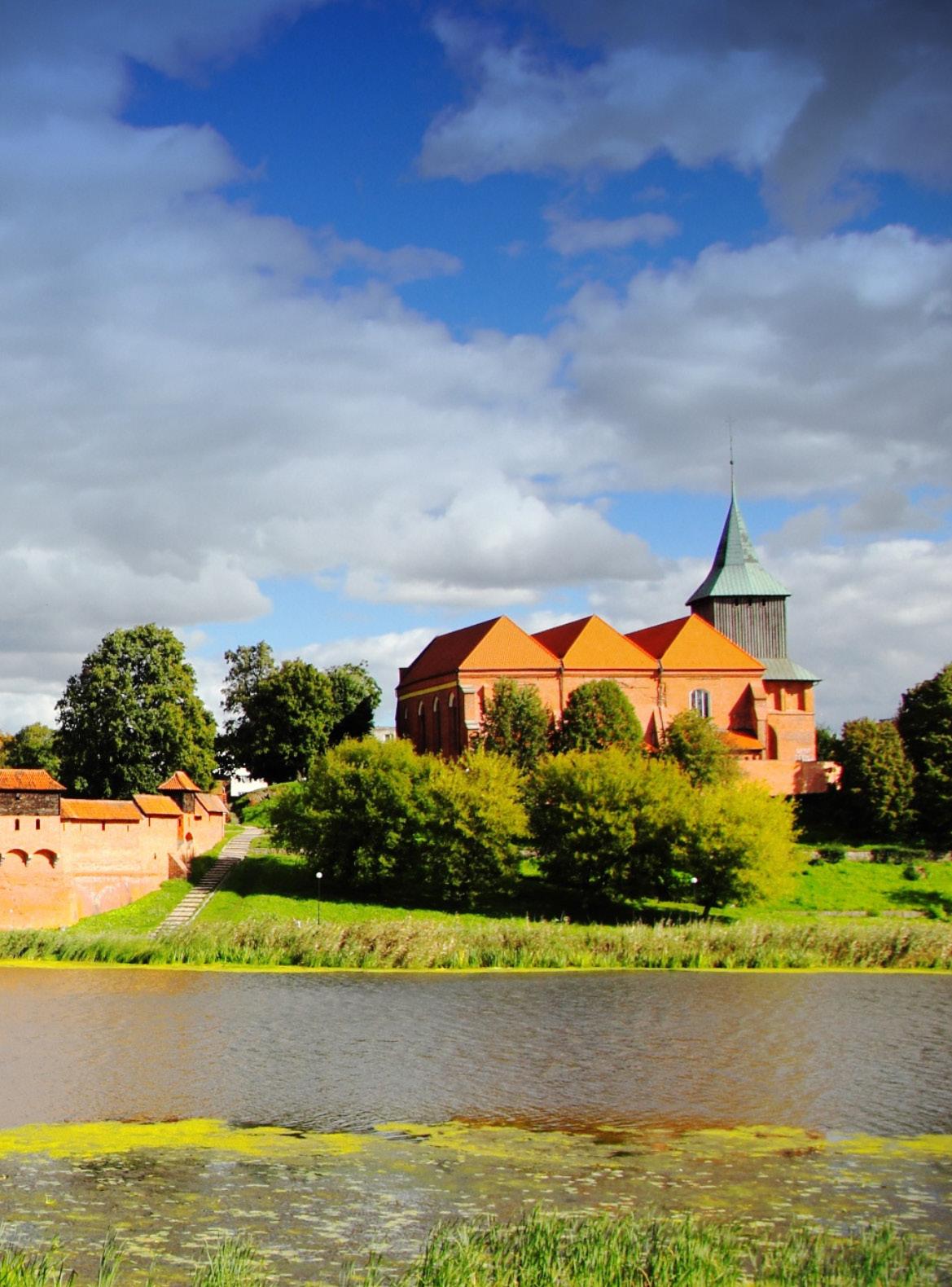
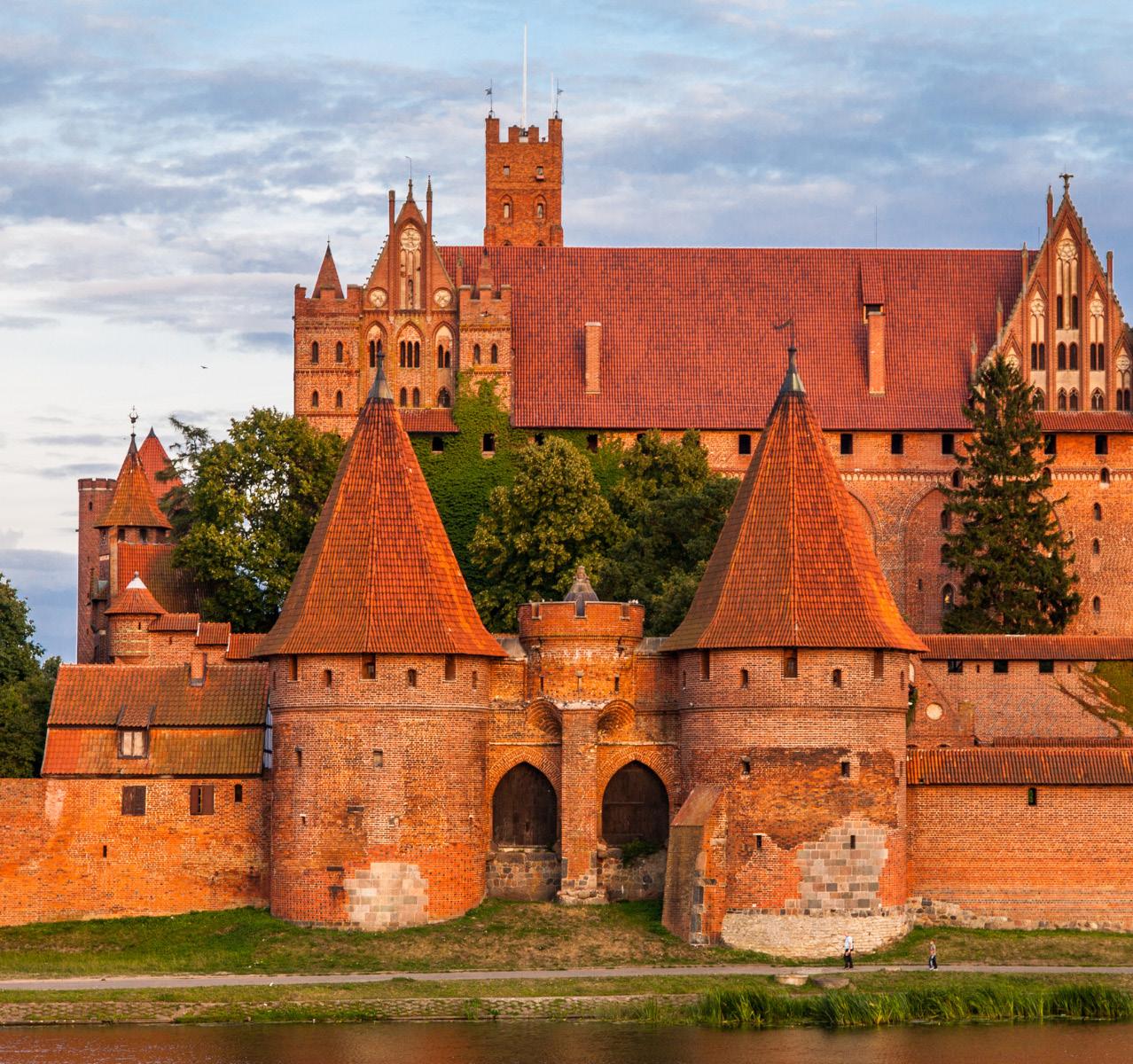
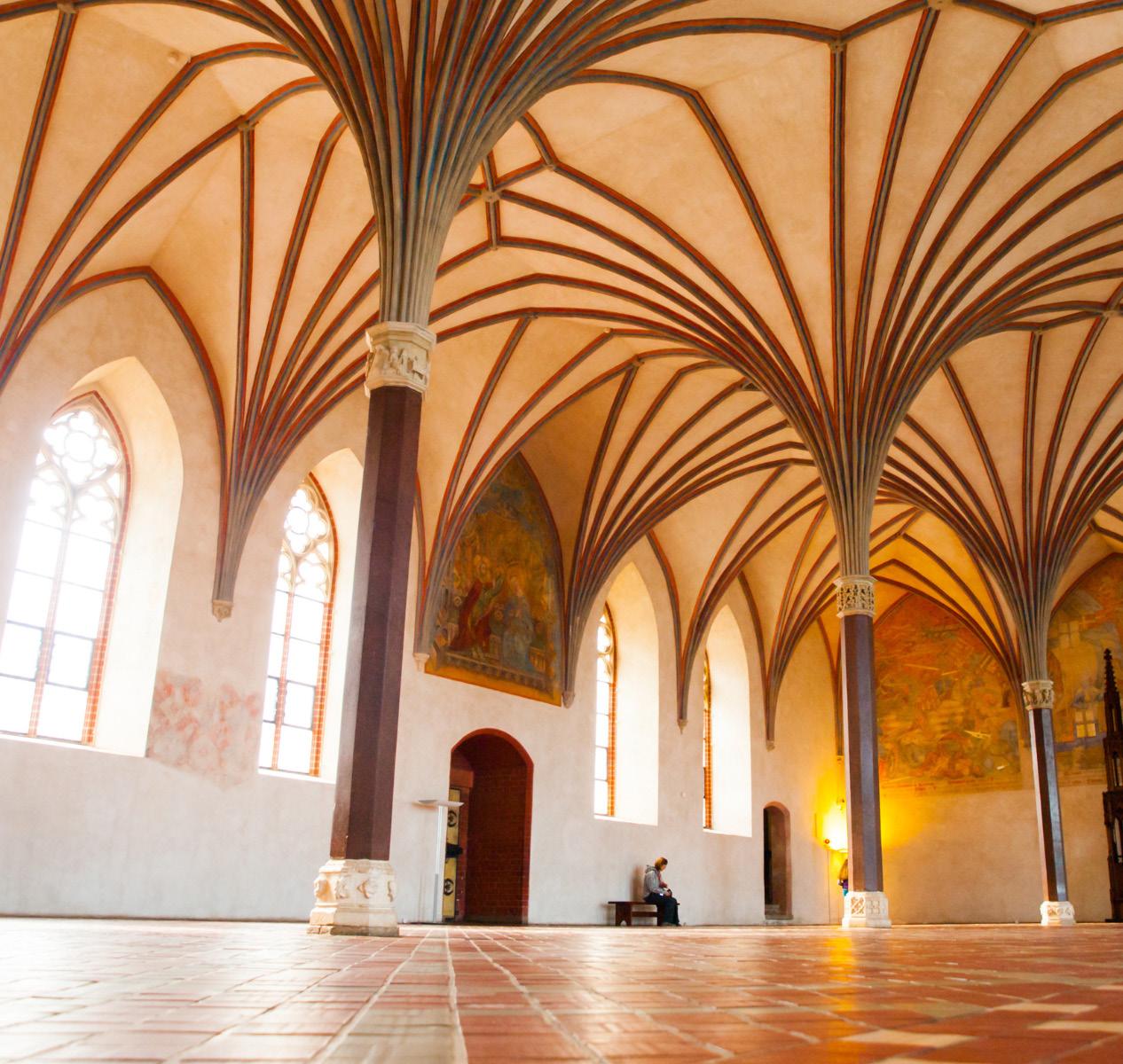
Castle played a crucial role in the Teutonic Order’s efforts to Christianize and control the region, and it later became the residence of Polish royalty after the Order’s defeat in the Battle of Grunwald in 1410. The castle was expanded and modified over the centuries, becoming a symbol of Polish and European history. Today, Malbork Castle is a UNESCO World Heritage site and a major tourist attraction. Visitors can explore its vast courtyards, grand halls, and medieval chapels, learning about the fascinating history of the Teutonic Order and the region. Its stunning architecture and historical significance make Malbork Castle one of Poland’s most remarkable landmarks.
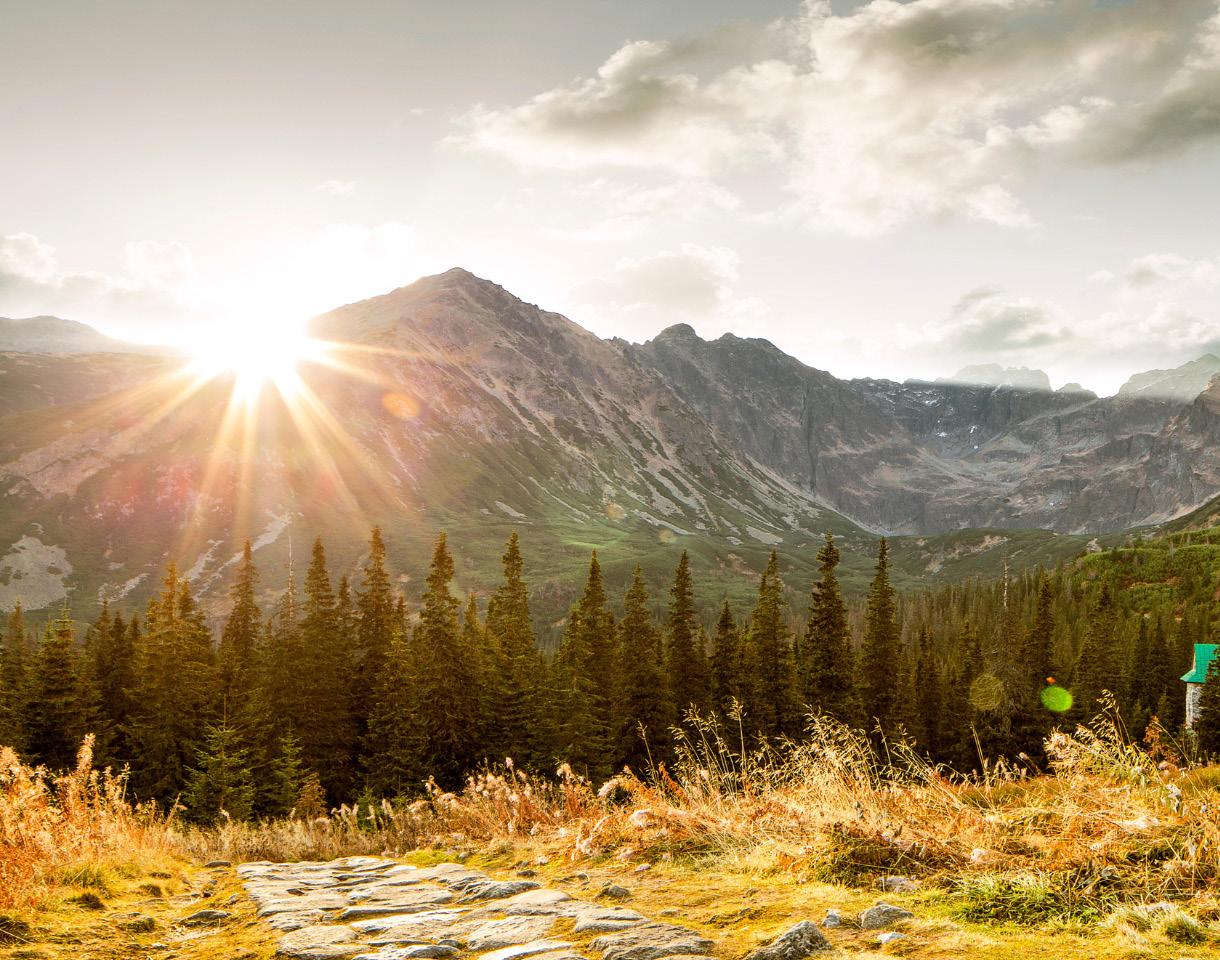
Tatra Mountains
Zakopane, often referred to as the “Winter Capital of Poland,” is a picturesque town located at the foot of the Tatra Mountains, the highest range in the Carpathians. Known for its breathtaking alpine scenery and rich cultural heritage, Zakopane is a year-round destination offering outdoor adventures and a glimpse into traditional highland life. During the winter months, Zakopane transforms into a hub for skiing, snowboarding, and snowshoeing, attracting tourists from across Europe. Its slopes cater to both beginners and experienced skiers, while the town itself offers cozy wooden cottages, or chalets, built in the distinctive Zakopane architectural style. The town’s lively main street, Krupówki, is lined with shops, restaurants, and markets selling traditional
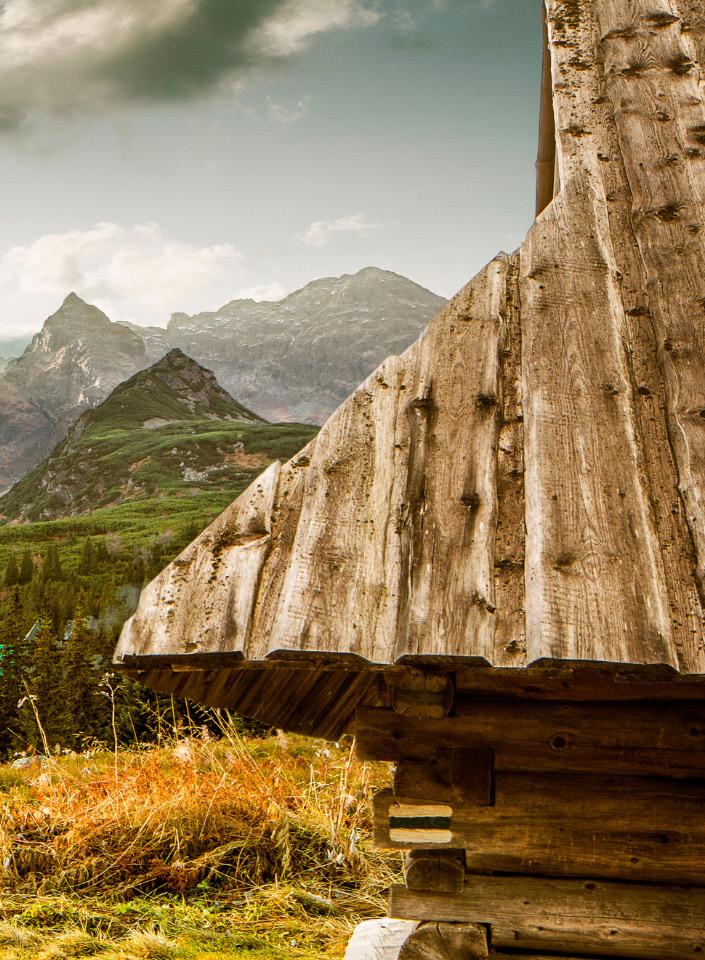
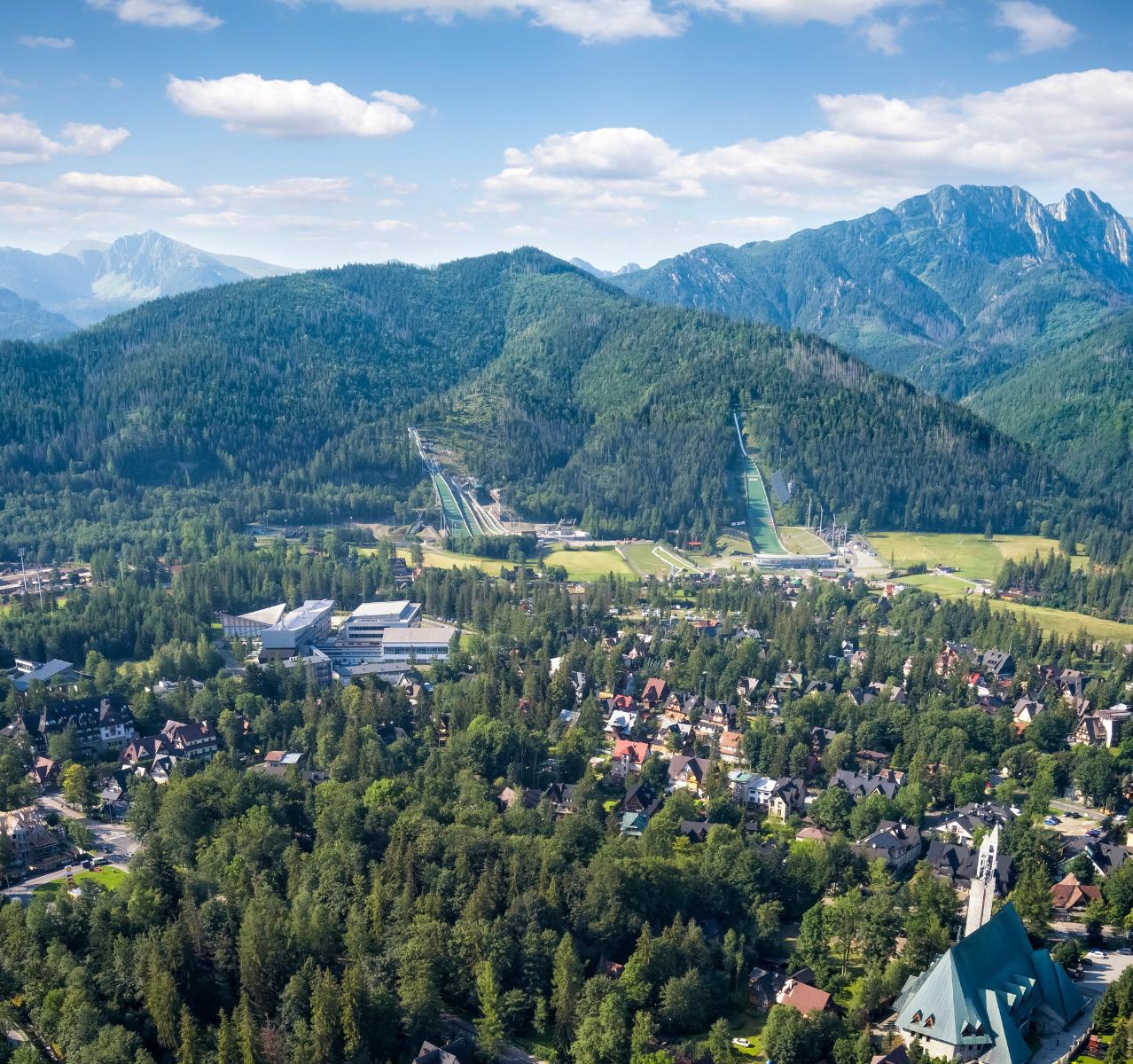
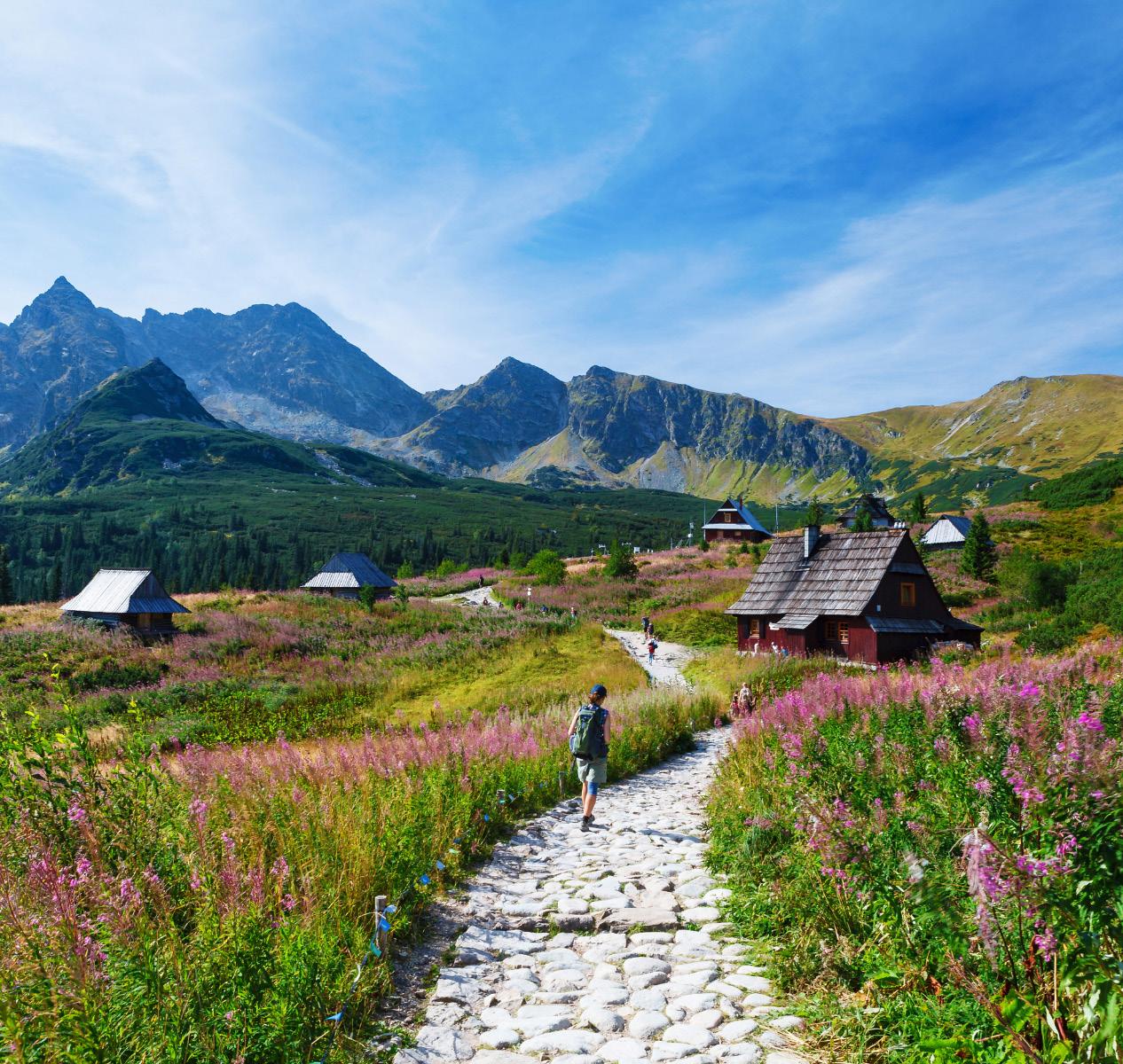
mountain crafts, woolen goods, and local delicacies. In the summer, Zakopane is a gateway to hiking, climbing, and exploring the stunning Tatra National Park. Trails lead to crystal-clear mountain lakes like Morskie Oko, and the challenging peaks of Rysy and Giewont offer stunning panoramic views. Zakopane is also a cultural center for Poland’s Górale (highlanders), known for their folk music, distinctive clothing, and hearty cuisine. Visitors can experience highlander traditions through local festivals, music performances, and the famous oscypek cheese. Whether for winter sports or summer hiking, Zakopane and the Tatra Mountains are a captivating destination for nature lovers and culture enthusiasts alike.
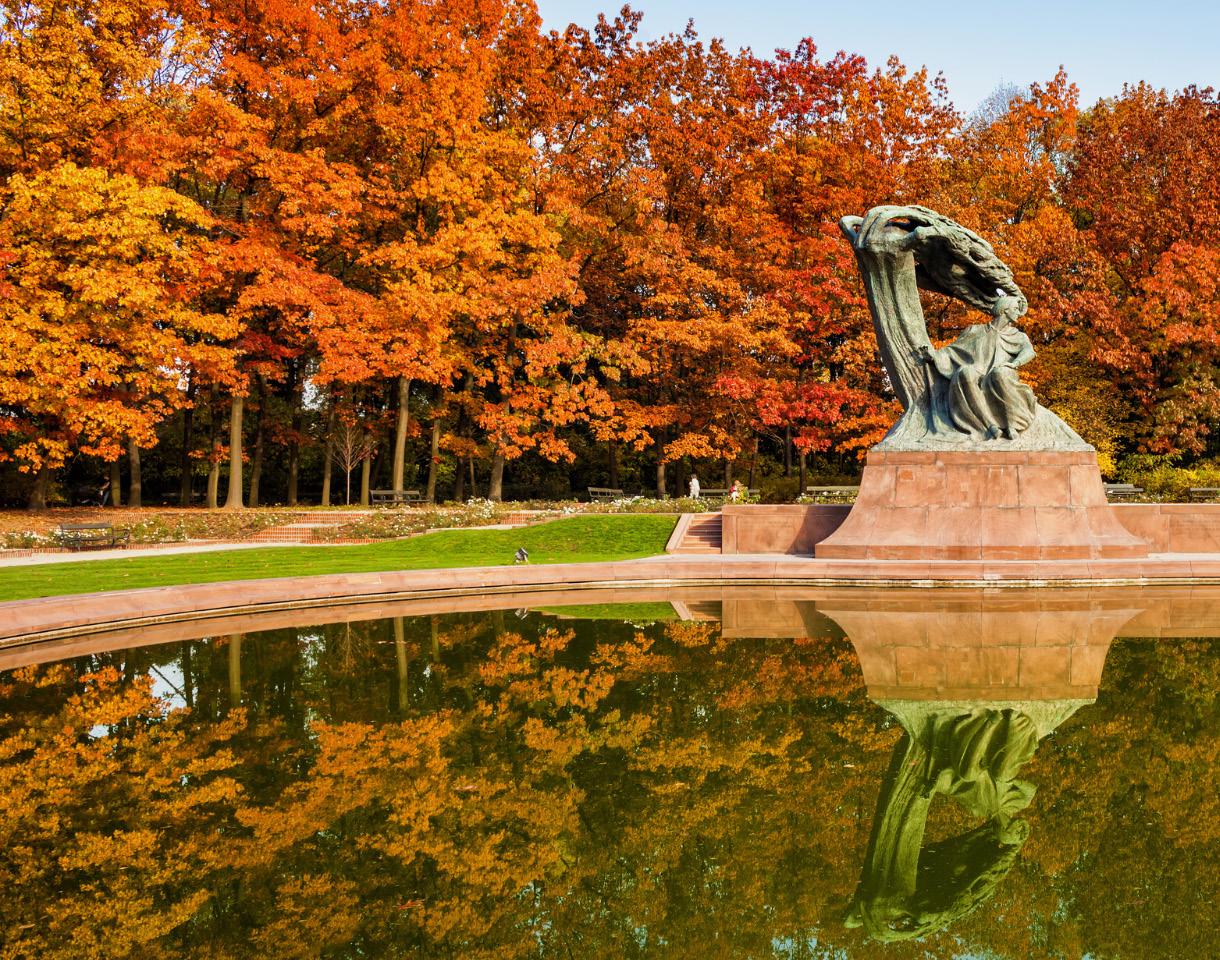
Łazienki Park, located in the heart of Warsaw, is one of Poland’s most beautiful and expansive urban parks, covering over 76 hectares. Established in the 17th century and redesigned in the 18th century under the direction of Poland’s last king, Stanisław August Poniatowski, the park combines stunning natural landscapes with elegant architecture, making it a beloved retreat for both locals and tourists. At the center of Łazienki Park is the Palace on the Isle, a Neoclassical gem situated on an artificial lake. Originally a bathing pavilion, it was transformed by King Stanisław into his summer residence and now serves as a museum showcasing period furnishings and artwork. The palace’s reflection in the water creates a picturesque scene that is one of
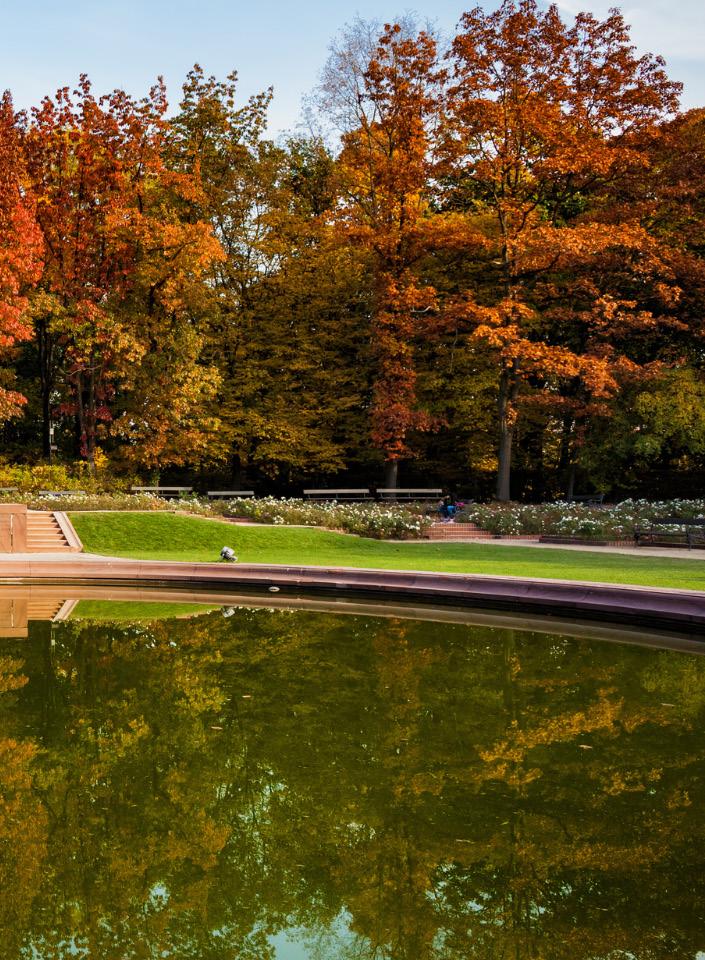
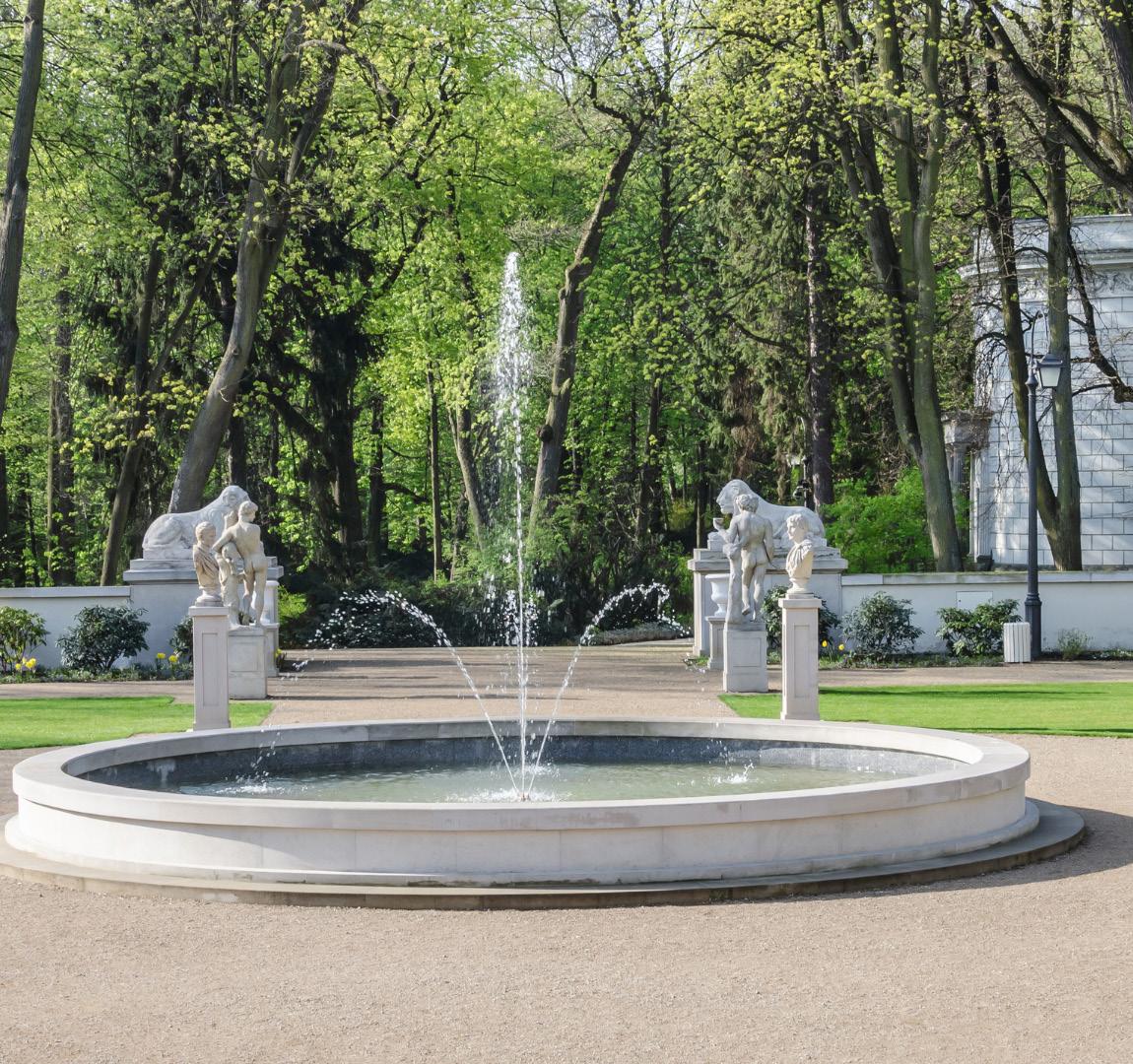
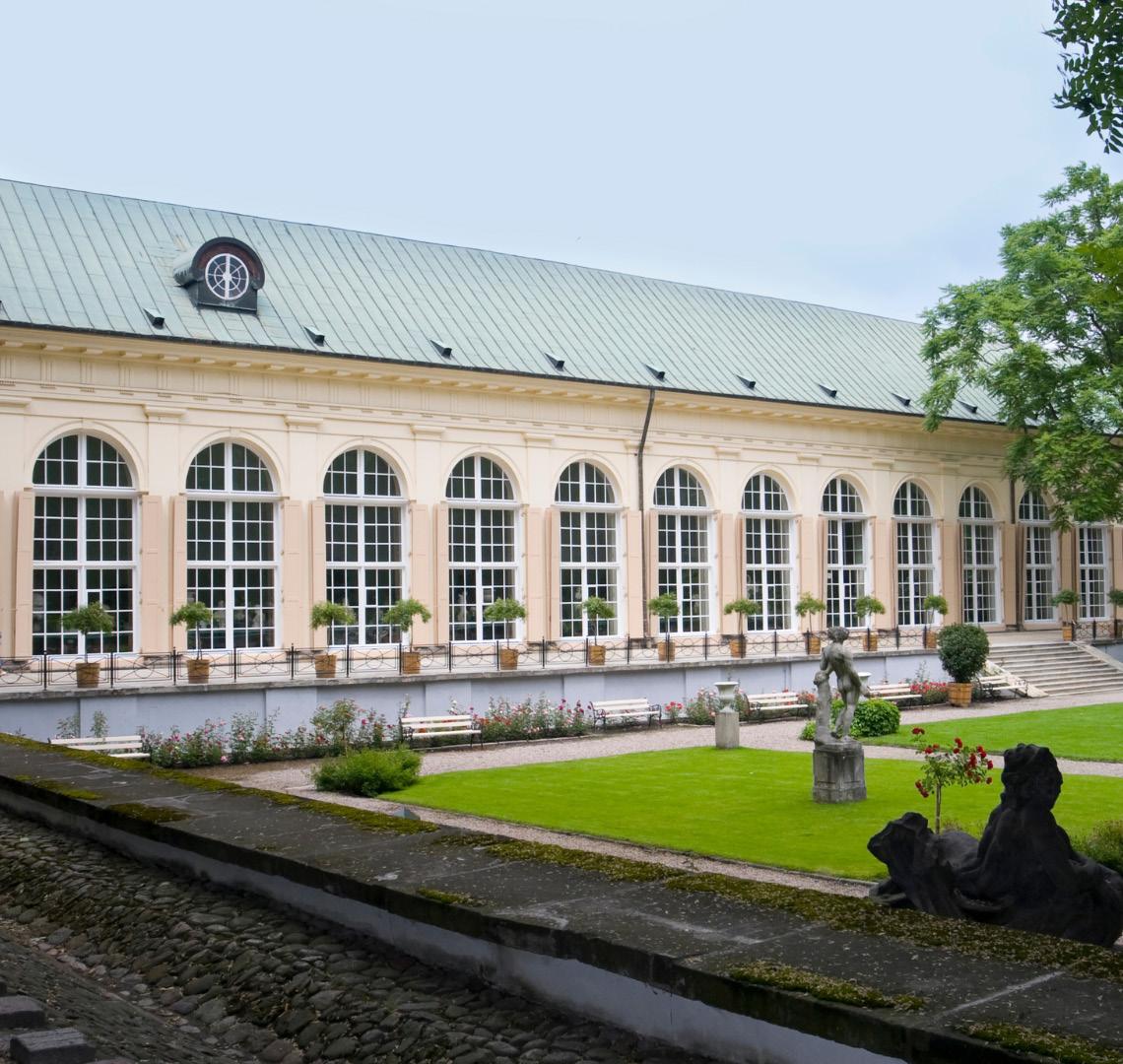
the park’s highlights. Łazienki Park is also known for its lush gardens, winding paths, and serene ponds, where visitors can enjoy leisurely walks or boat rides. Another prominent feature is the Chopin Monument, dedicated to Poland’s famous composer Fryderyk Chopin. Every summer, the park hosts open-air Chopin concerts near the monument, attracting music lovers from around the world. The park is also home to several other historical buildings, including the Amphitheatre, the Old Orangery, and the Myślewicki Palace. Łazienki Park provides a tranquil escape from the city’s bustle, blending nature, history, and culture in one of Warsaw’s most iconic locations.
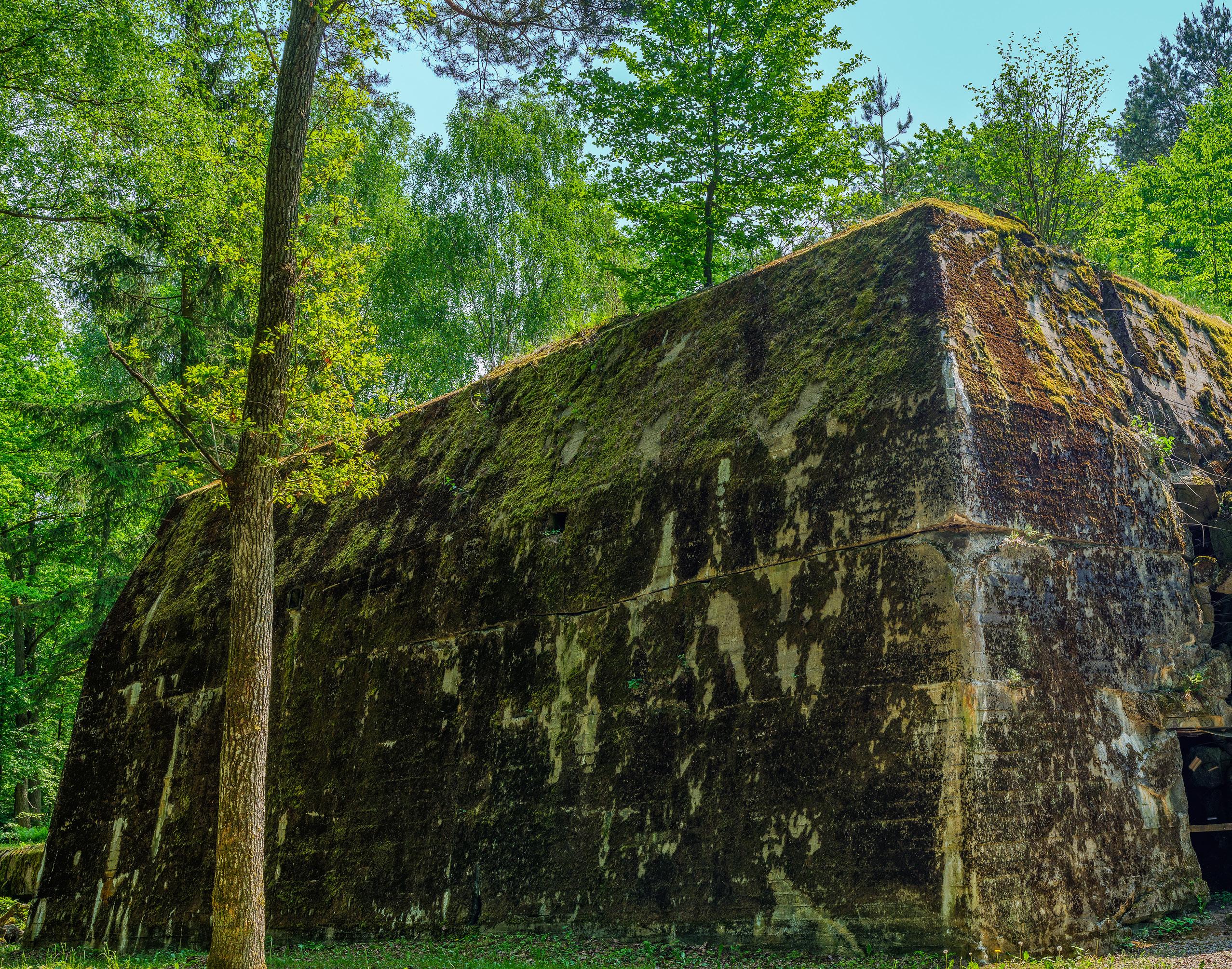
The Wolf’s Lair (Wolfsschanze), located near Kętrzyn in northeastern Poland, was Adolf Hitler’s primary military headquarters during much of World War II. Hidden deep in the dense Masurian forests, this massive complex served as the nerve center for the German Eastern Front operations from 1941 to 1944, including the planning of key campaigns like the invasion of the Soviet Union under Operation Barbarossa.
Constructed with secrecy and heavily camouflaged, the Wolf’s Lair comprised around 200 buildings, including bunkers, barracks, and air-raid shelters. It was equipped with the highest security measures, including landmines and multiple security zones to protect the Nazi leadership. Hitler spent over 800 days here, and it was from the
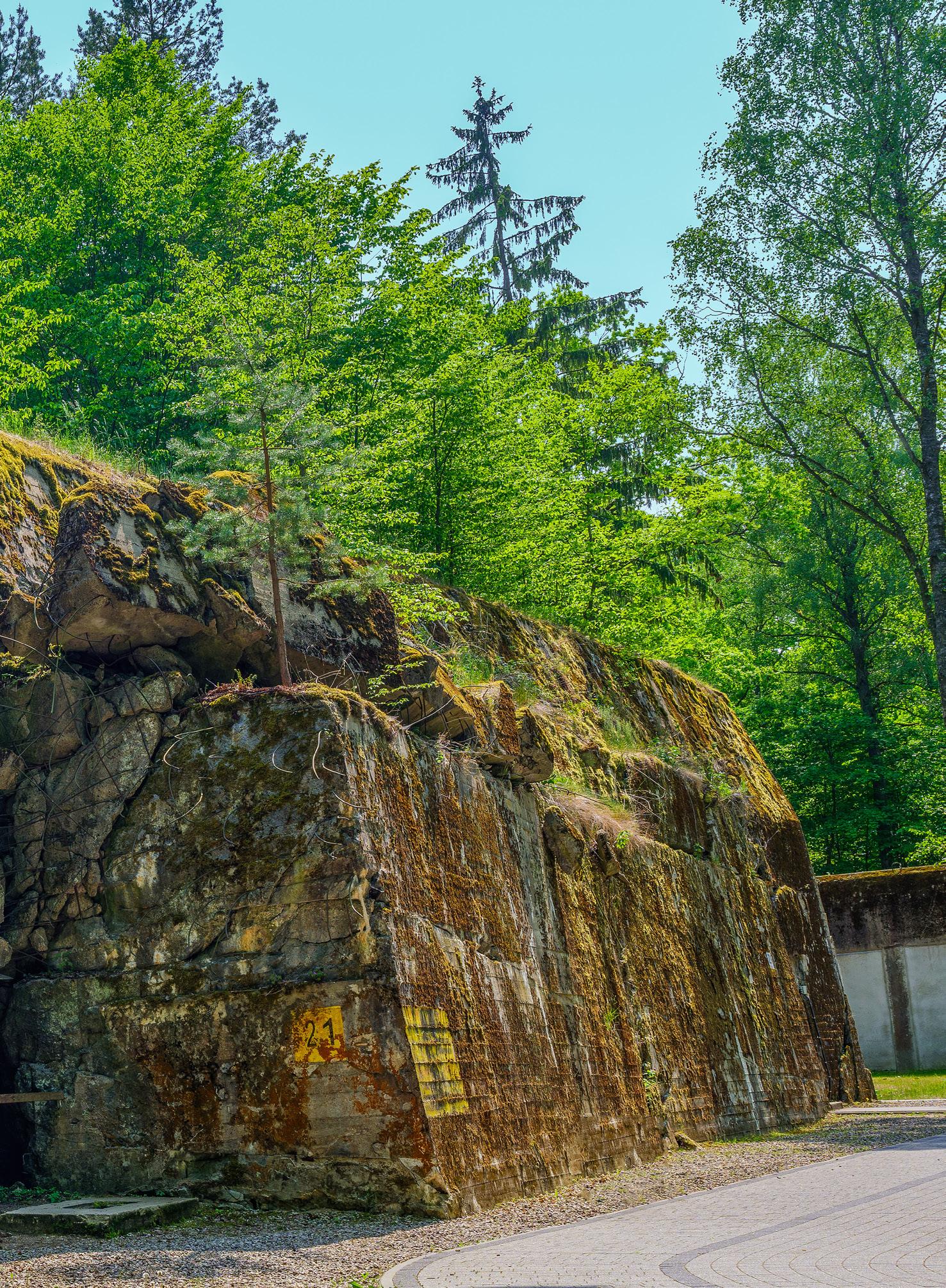
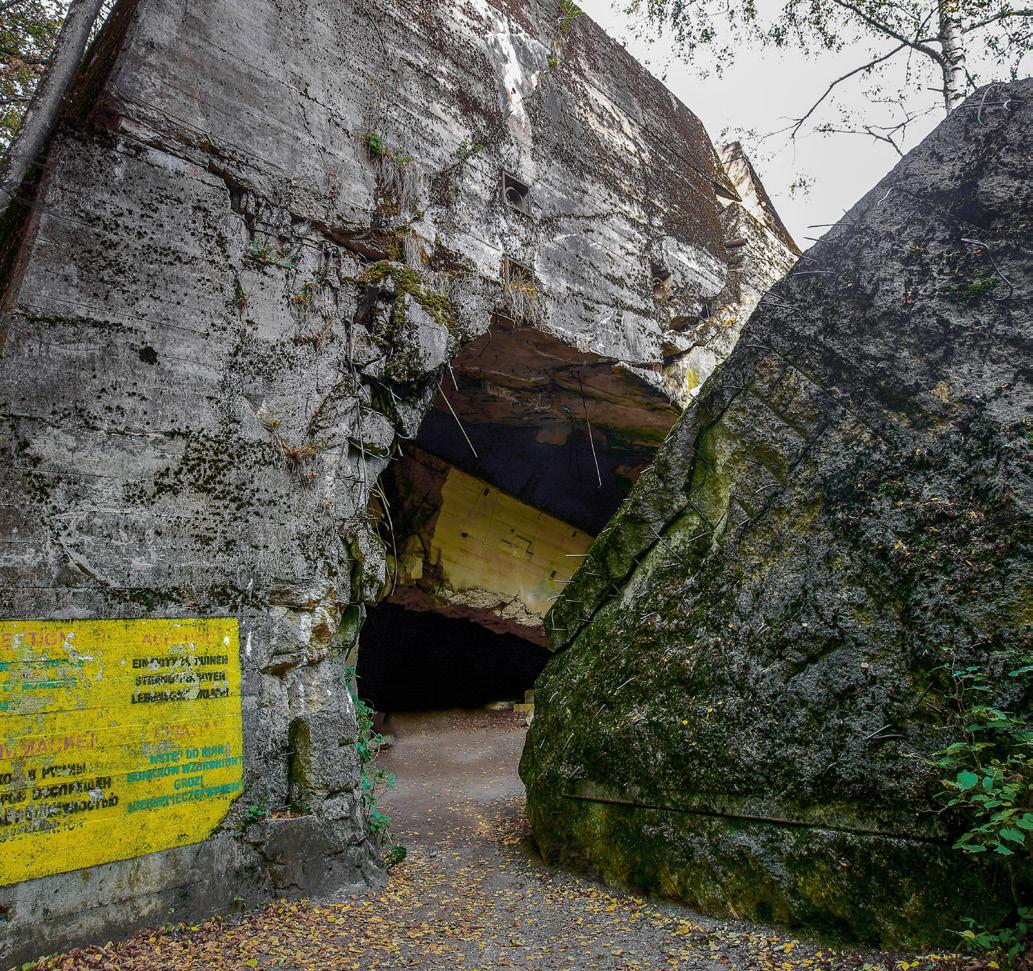
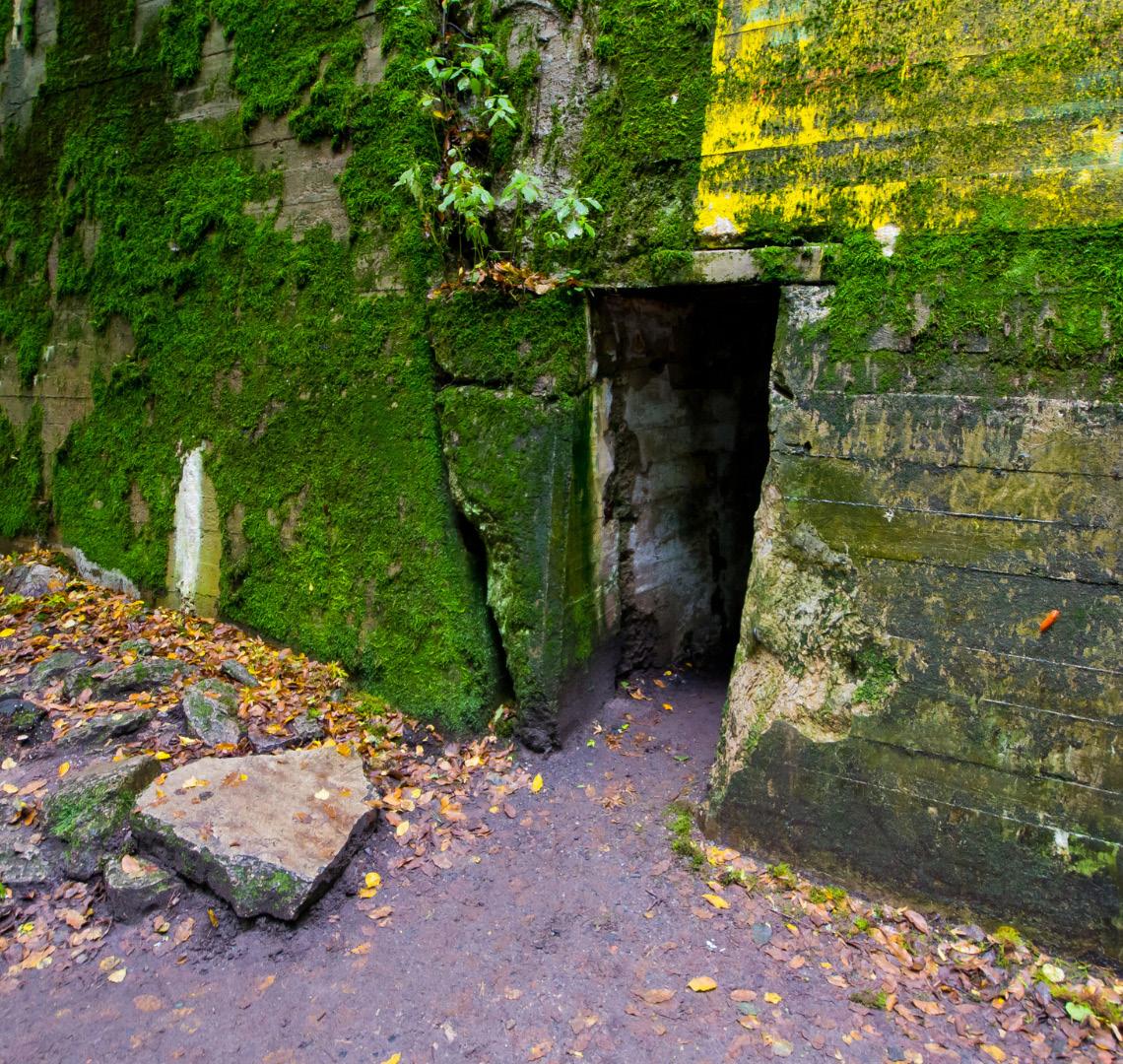
Wolf’s Lair that many strategic decisions regarding the war were made. The site is also infamous for the July 20, 1944 assassination attempt on Hitler, orchestrated by Colonel Claus von Stauffenberg. The failed plot, known as Operation Valkyrie, attempted to kill Hitler with a bomb placed in a meeting room. Hitler survived the explosion, and the conspirators were swiftly executed. The Wolf’s Lair was abandoned and partially destroyed by the Germans in 1945 as Soviet forces advanced. Today, the site remains a historical monument, with the remnants of bunkers and ruins open to visitors. It stands as a haunting reminder of the war’s destructive impact and a place of reflection on the dark chapter of history it represents.
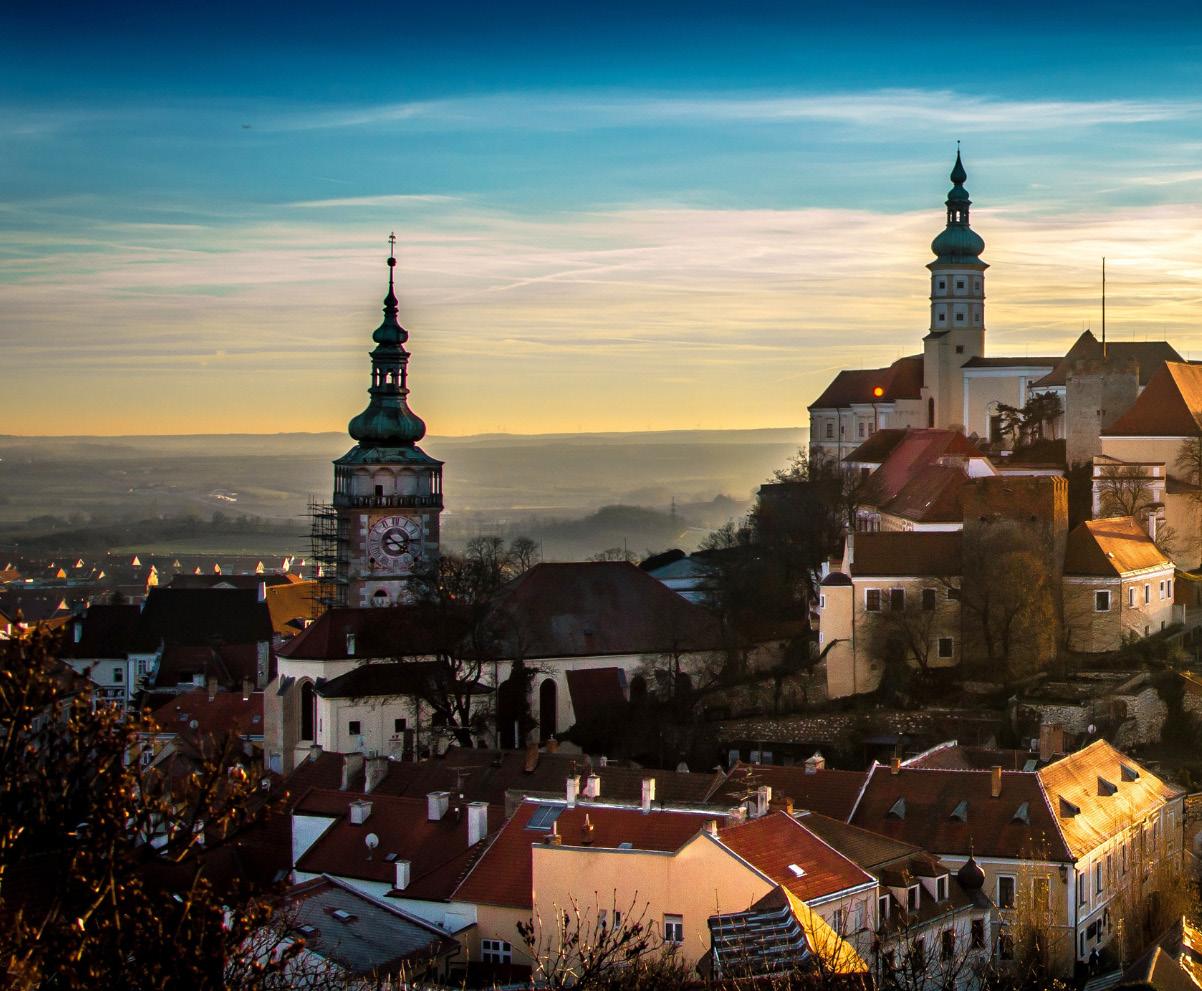
Welcome to the Czech Republic, a country rich in history, culture, and architectural beauty. Nestled in the heart of Europe, the Czech Republic offers travelers a unique blend of medieval charm, vibrant cities, and stunning landscapes. Begin your journey in Prague, the “City of a Hundred Spires,” where you can explore the fairy-tale Prague Castle, stroll across the iconic Charles Bridge, and wander through the cobbled streets of Old Town Square, home to the famous Astronomical Clock. The city’s Gothic and Baroque architecture tells the story of centuries past. Beyond Prague, the Czech Republic boasts enchanting towns like Český Krumlov, with its winding rivers and
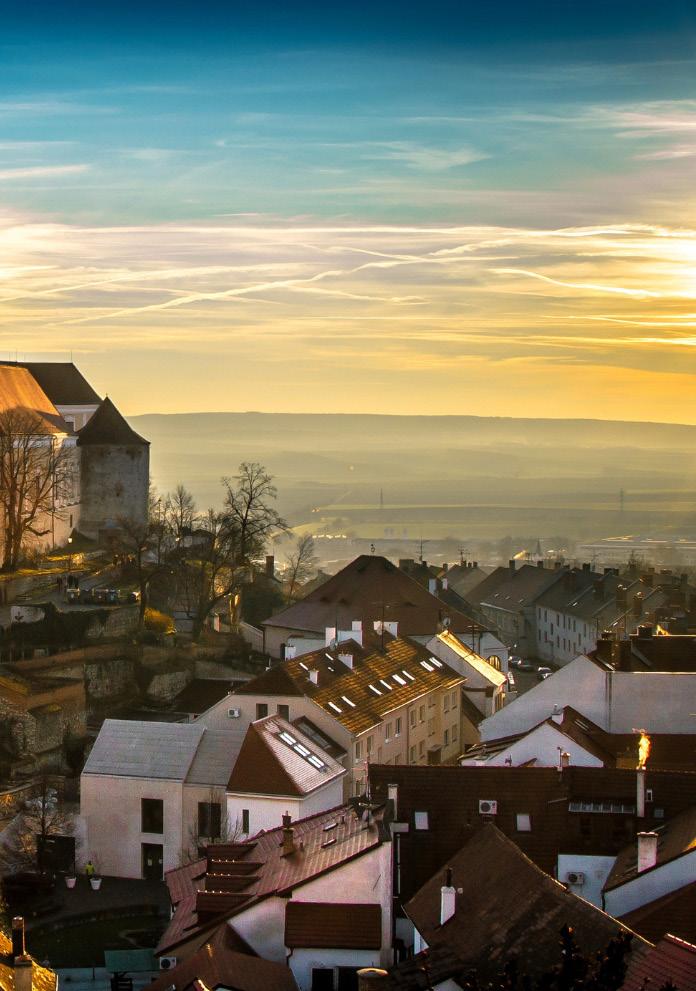
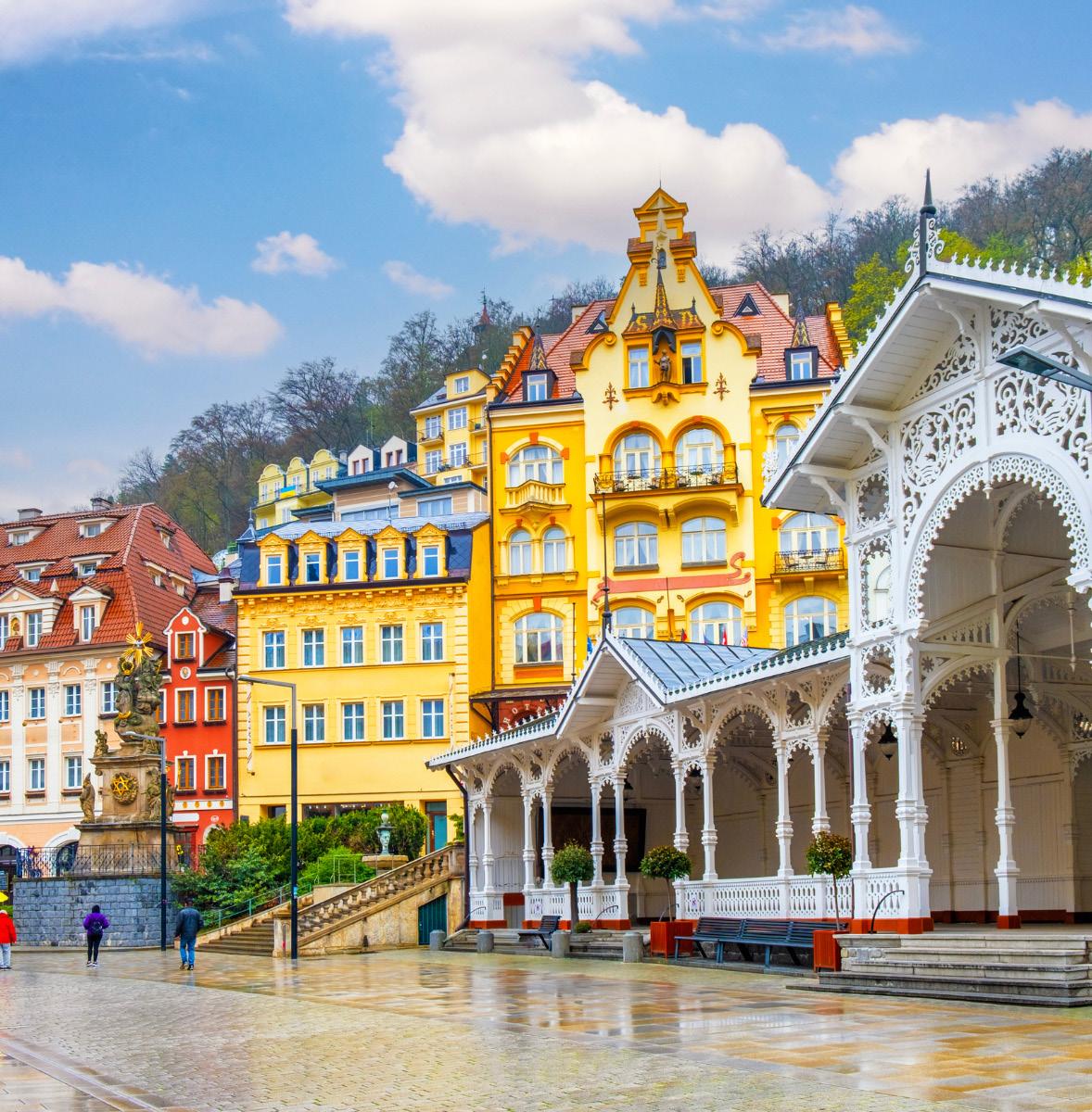
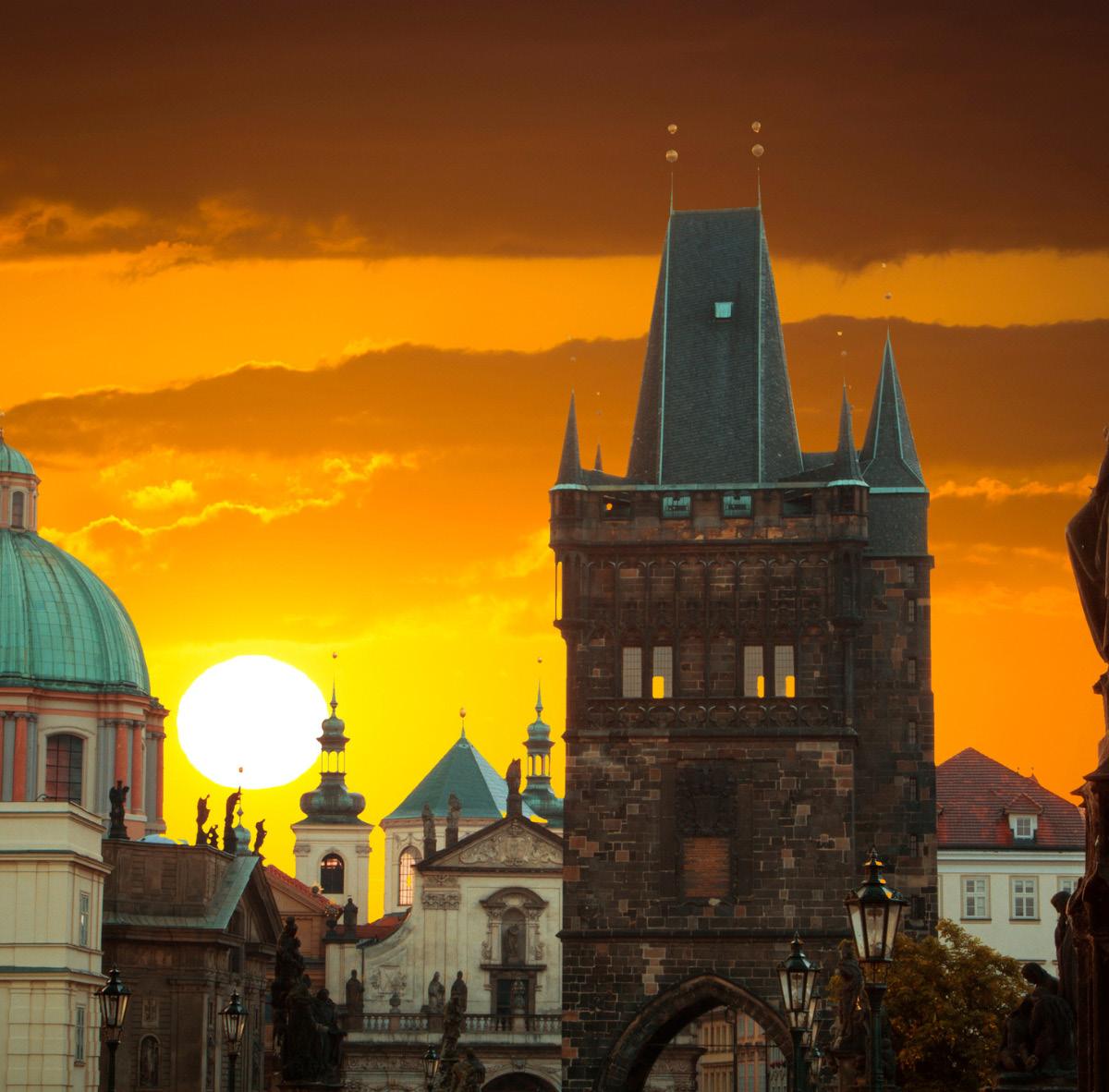
Renaissance charm, and Karlovy Vary, renowned for its healing hot springs and elegant spas. For history lovers, a visit to Kutná Hora’s Bone Church or the medieval town of Telč offers fascinating glimpses into the past. Czech culture is steeped in tradition, from the classical music of composers like Dvořák and Smetana to its world-famous beer. The country’s vibrant folk traditions, colorful festivals, and hearty cuisine create an immersive cultural experience. Whether you’re exploring castles, hiking through Bohemian forests, or savoring a pint in a local pub, the Czech Republic promises an unforgettable journey filled with history, culture, and charm.
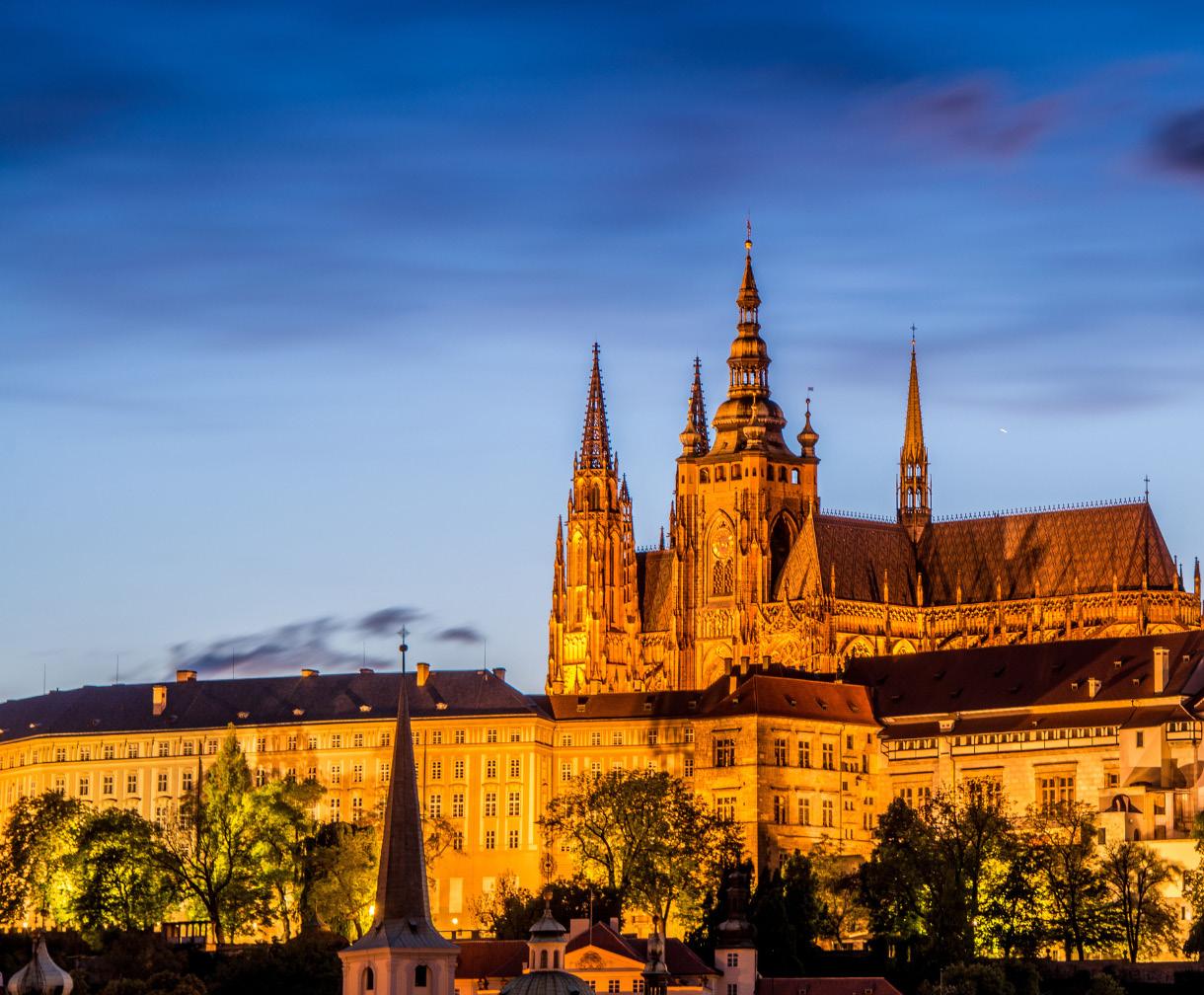
Prague Castle, known as Pražský hrad in Czech, is a historic fortress that dominates the skyline of Prague, the capital of the Czech Republic. It is one of the largest castle complexes in the world, covering an area of about 70,000 square meters. This UNESCO World Heritage Site sits on a hilltop overlooking the Vltava River, serving as the political and cultural heart of the country for over a millennium. The castle’s origins date back to the 9th century when it was founded by Prince Bořivoj of the Přemyslid dynasty. Over the centuries, Prague Castle has been expanded and renovated, reflecting various architectural styles, including Romanesque, Gothic, Renaissance, and Baroque. One of its most iconic structures is the stunning Gothic
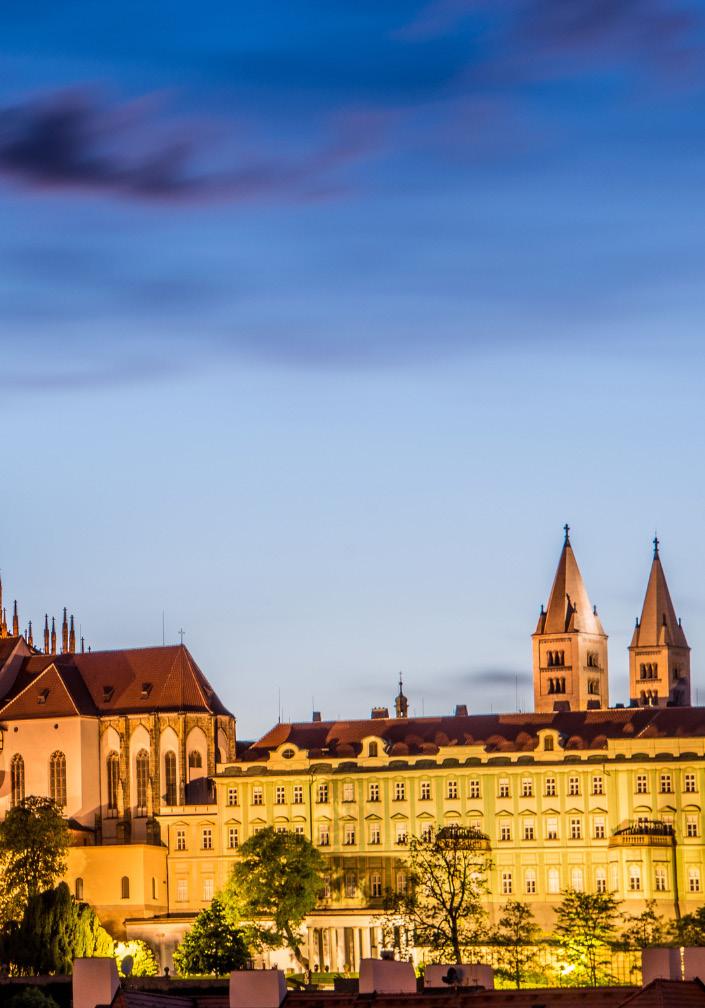
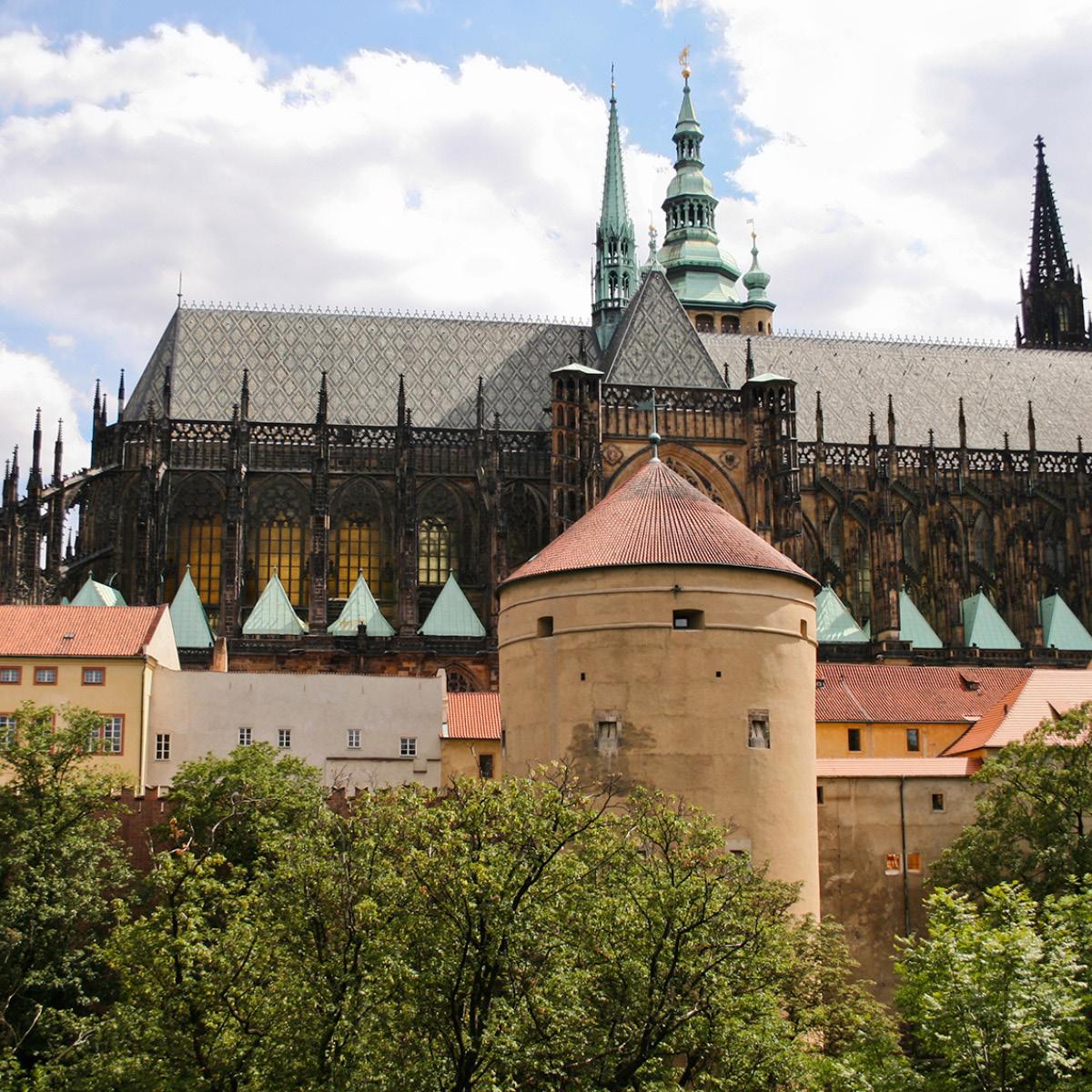
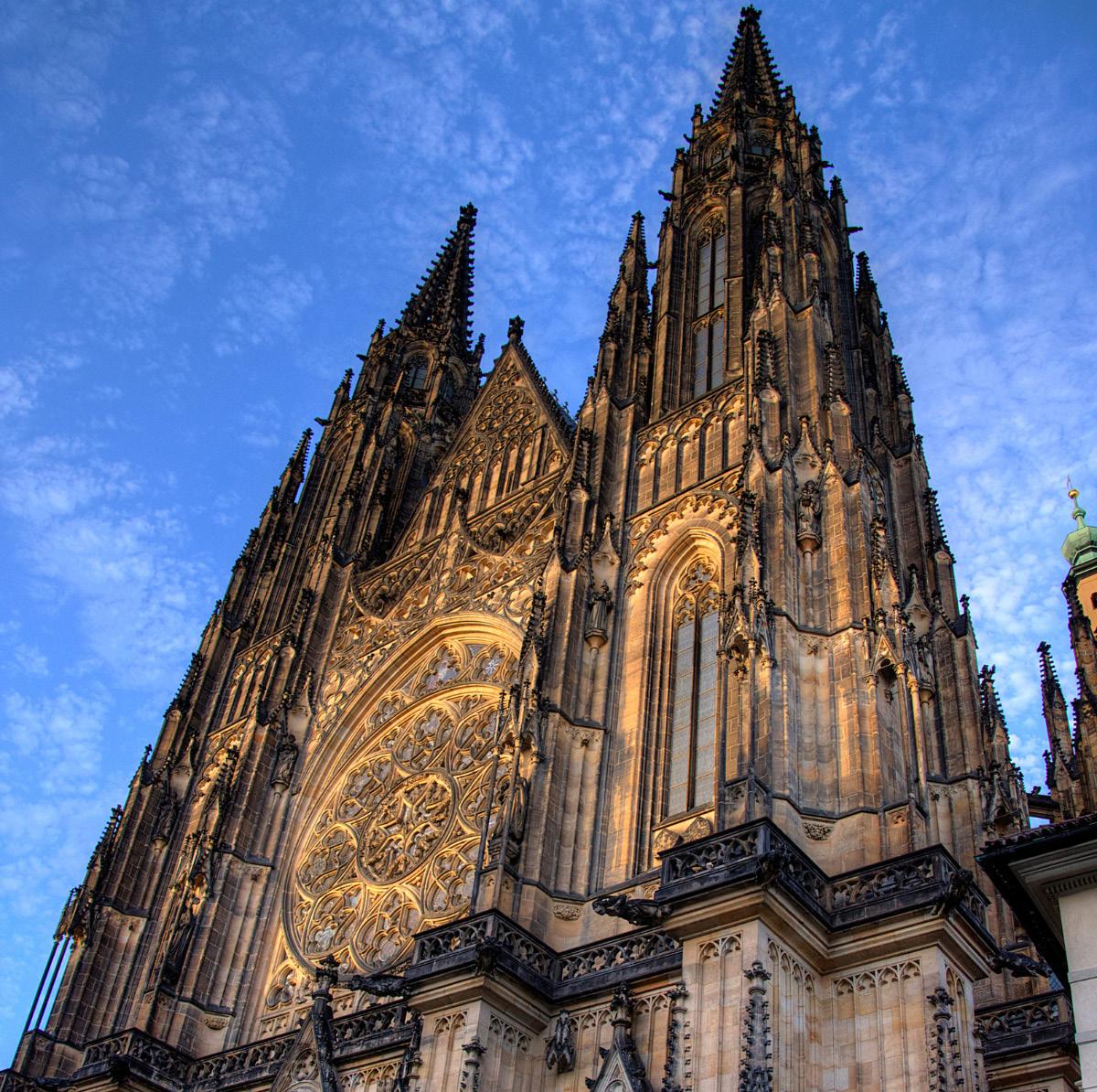
St. Vitus Cathedral, which houses the tombs of Bohemian kings and Holy Roman Emperors. Historically, Prague Castle has been the seat of Czech monarchs, and today it serves as the official residence of the Czech president. The castle complex includes a series of palaces, churches, and gardens, each representing different periods of Czech history. Notable sites include the Old Royal Palace, the Basilica of St. George, and the picturesque Golden Lane, a narrow street lined with colorful houses that once housed castle guards and artisans. Prague Castle is not just a historical monument but also a vibrant cultural hub, hosting exhibitions, concerts, and official ceremonies. It remains a symbol of Czech heritage and statehood, drawing millions of visitors annually.
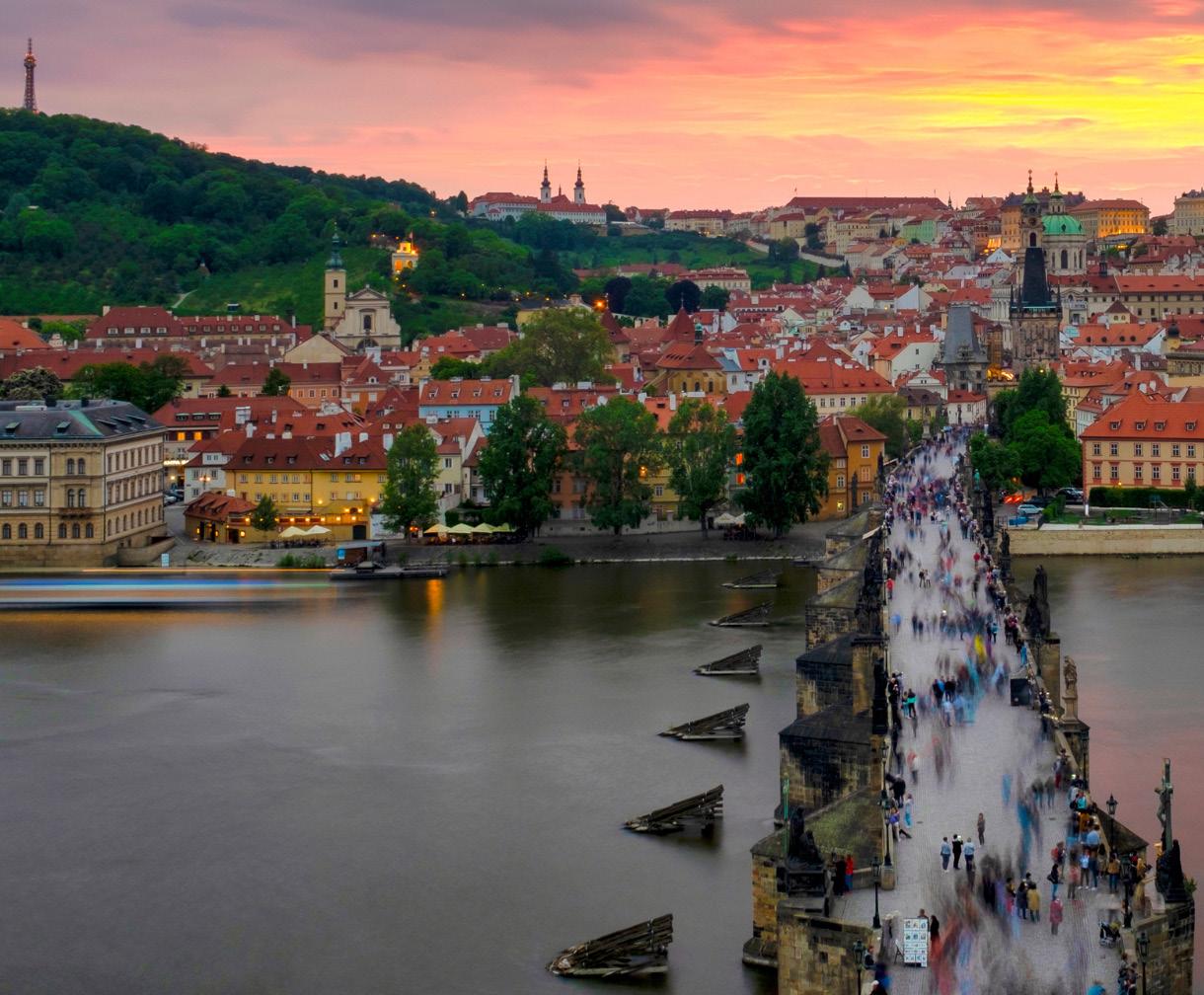
Charles Bridge (Karlův most) is one of Prague’s most iconic landmarks, spanning the Vltava River and connecting the Old Town with the Lesser Town (Malá Strana). Construction began in 1357 under the reign of King Charles IV and was completed at the start of the 15th century. The bridge replaced the older Judith Bridge, which was destroyed by a flood in 1342. The Charles Bridge is a masterpiece of Gothic architecture, originally known as the Stone Bridge or Prague Bridge until the 19th century. It stretches 516 meters (1,693 feet) and rests on 16 arches. The bridge’s surface is made of cobblestones, and along its length are 30 statues, most of which were erected between 1683 and 1714. These statues depict saints and religious figures,
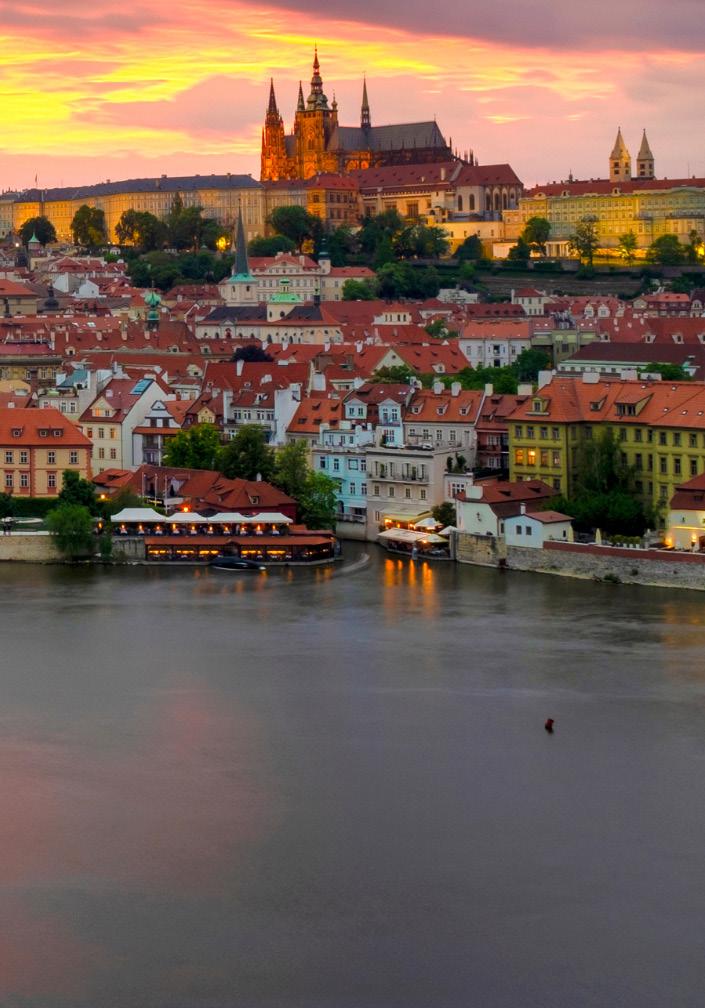
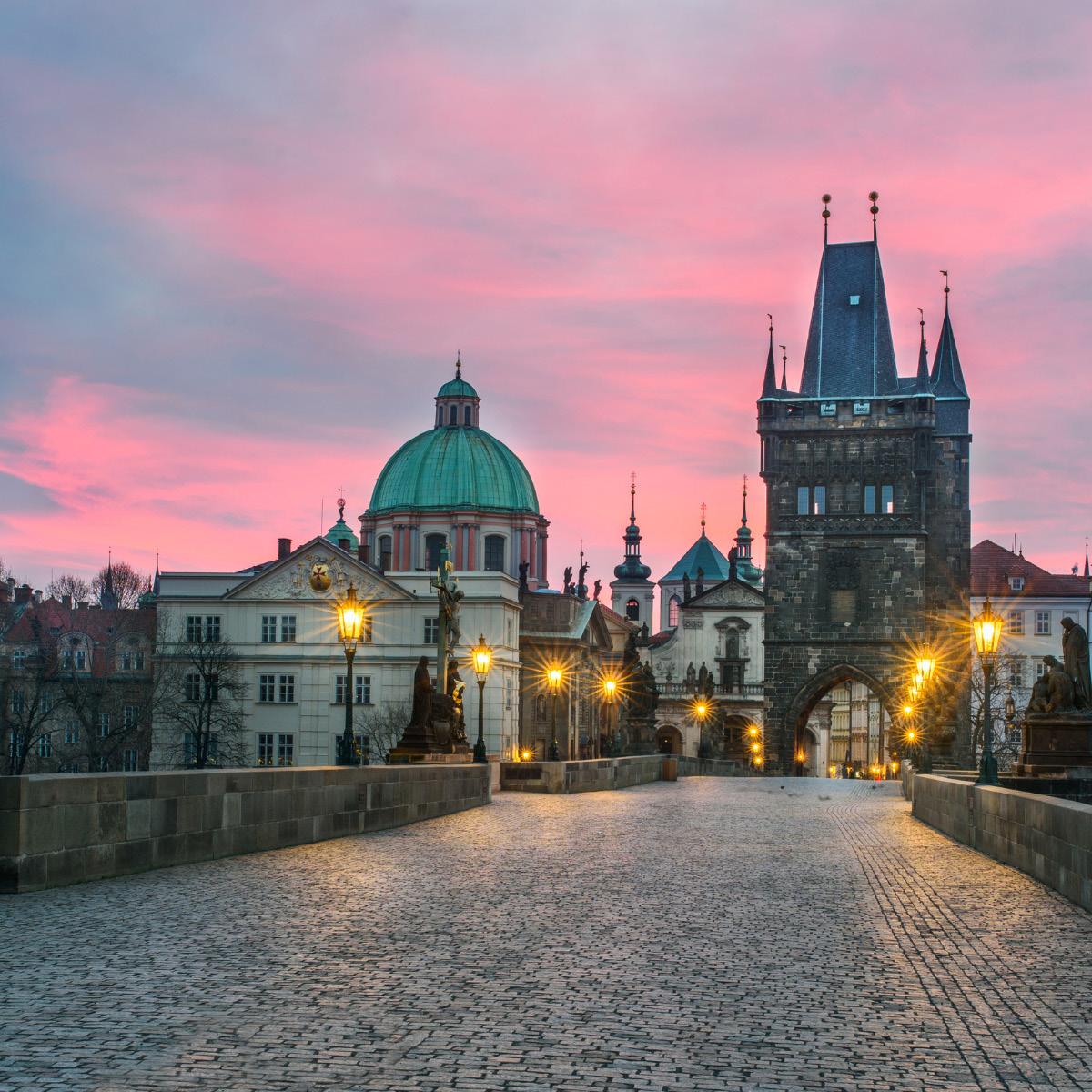
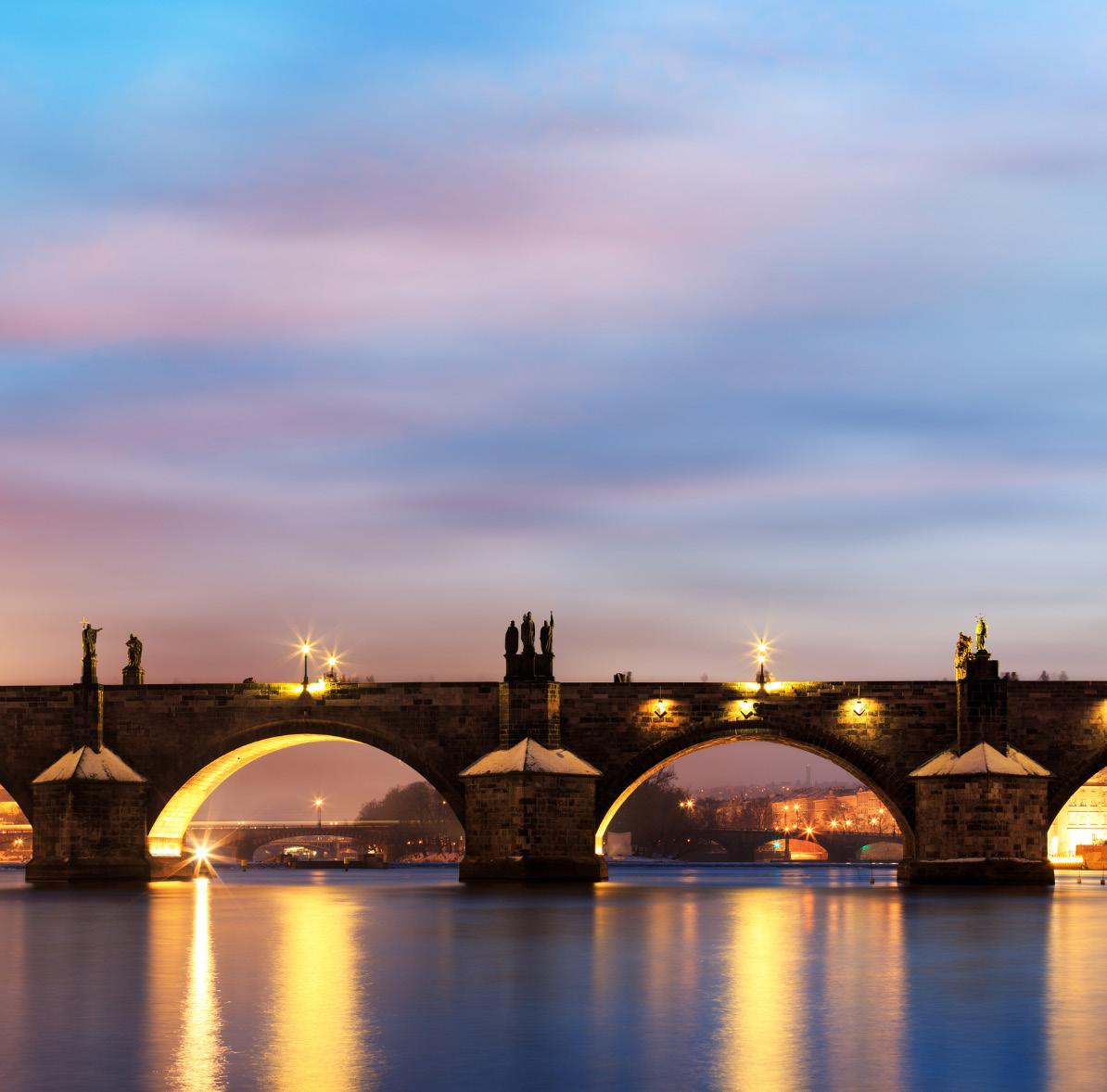
adding to the bridge’s spiritual and historical significance. Today, many of the statues are replicas; the originals are preserved in the National Museum due to damage from weathering. Throughout history, the bridge has been a vital trade route and played a key role in the development of Prague as a cultural and commercial center. Charles Bridge has also been the setting for many historical events, including battles and royal processions. Today, it’s a pedestrian bridge, often filled with artists, street performers, and tourists, offering stunning views of Prague’s skyline and the nearby Prague Castle. Charles Bridge remains a symbol of Prague’s rich history, attracting millions of visitors annually as one of Europe’s most beautiful and historic bridges.
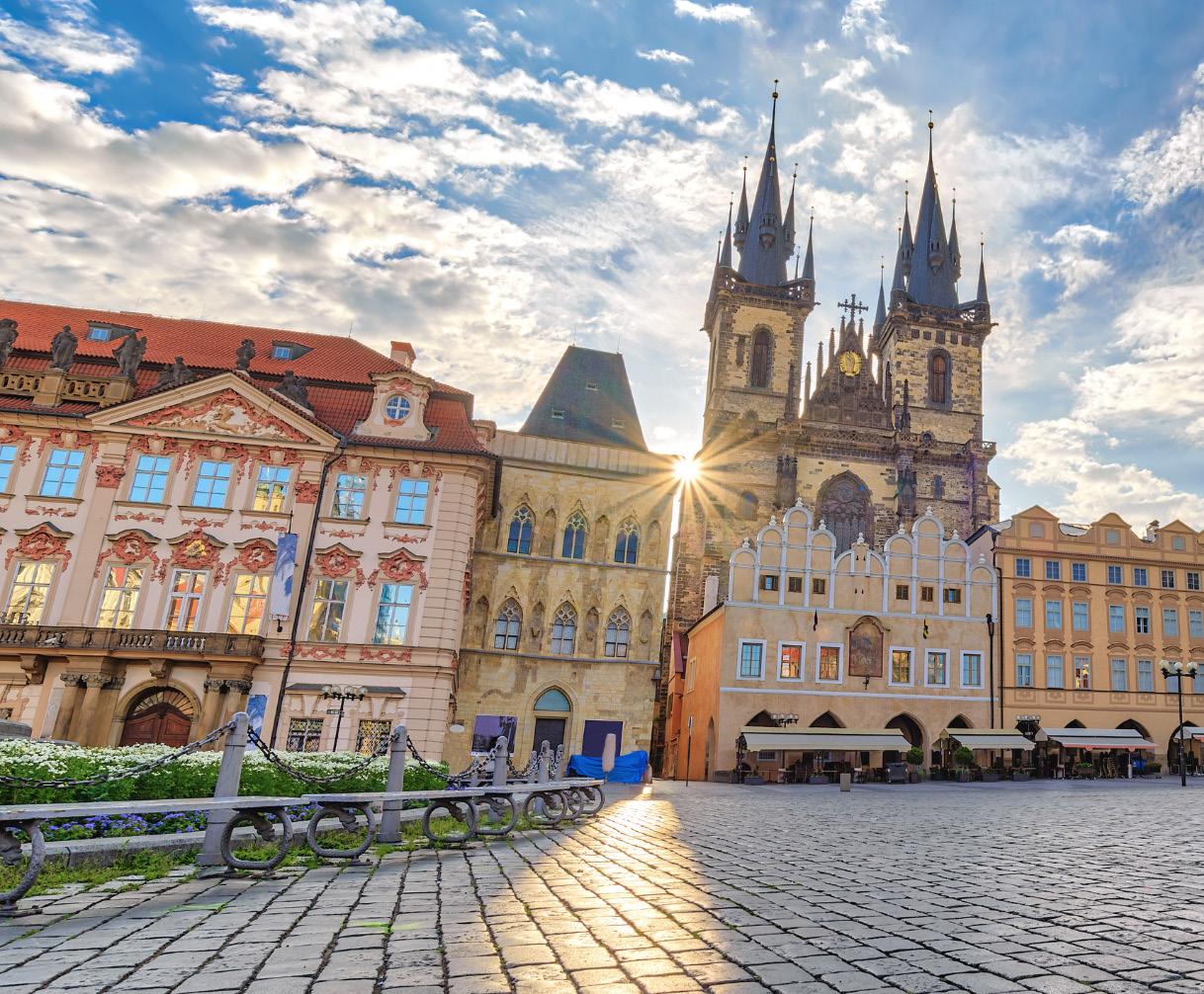
Prague’s Old Town Square (Staroměstské náměstí) is the heart of the Czech capital, blending medieval charm with a lively modern atmosphere. It dates back to the 12th century and has been a central marketplace and hub for centuries. This iconic square is flanked by Gothic, Baroque, and Romanesque buildings that reflect Prague’s rich architectural history. One of the most famous landmarks in the square is the Old Town Hall, home to the astronomical clock (Orloj), a medieval marvel dating to 1410. Visitors gather every hour to watch the clock’s animated procession of the apostles and other figures. The square is also dominated by the towering Gothic Church of
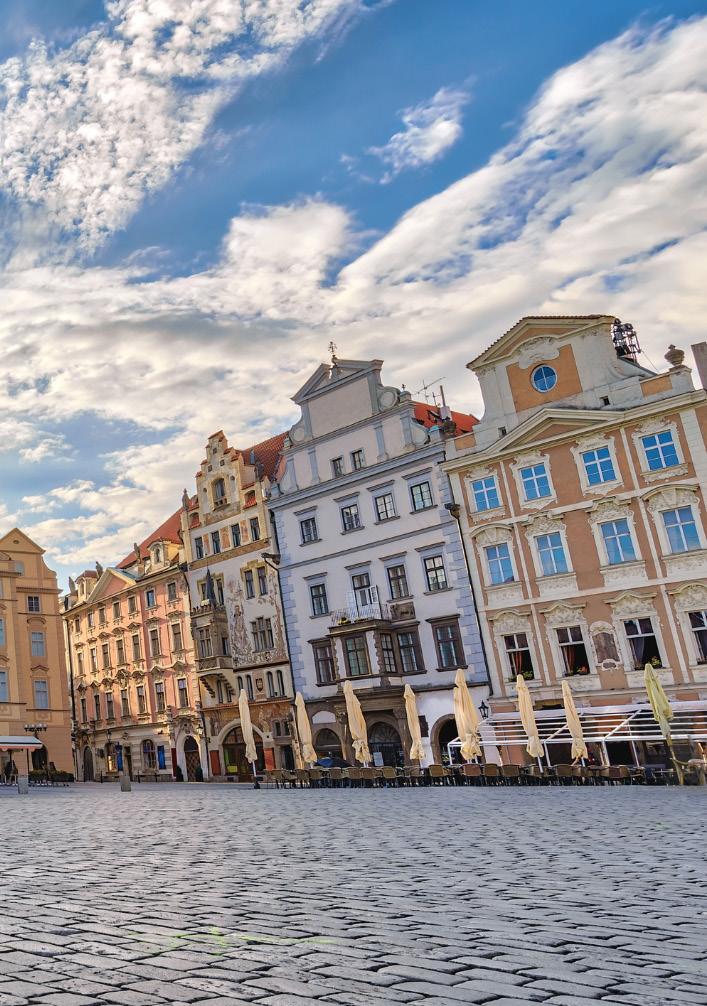
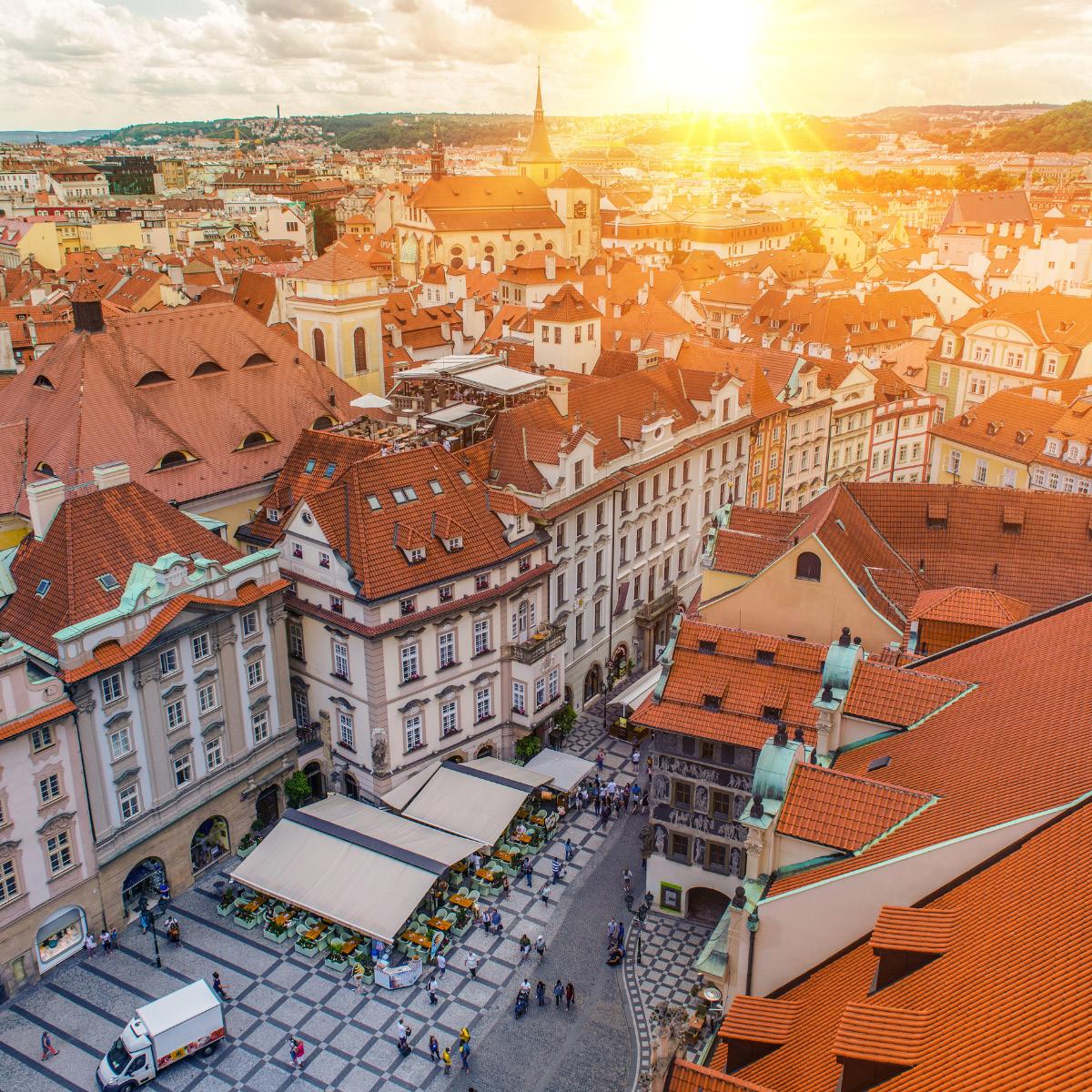
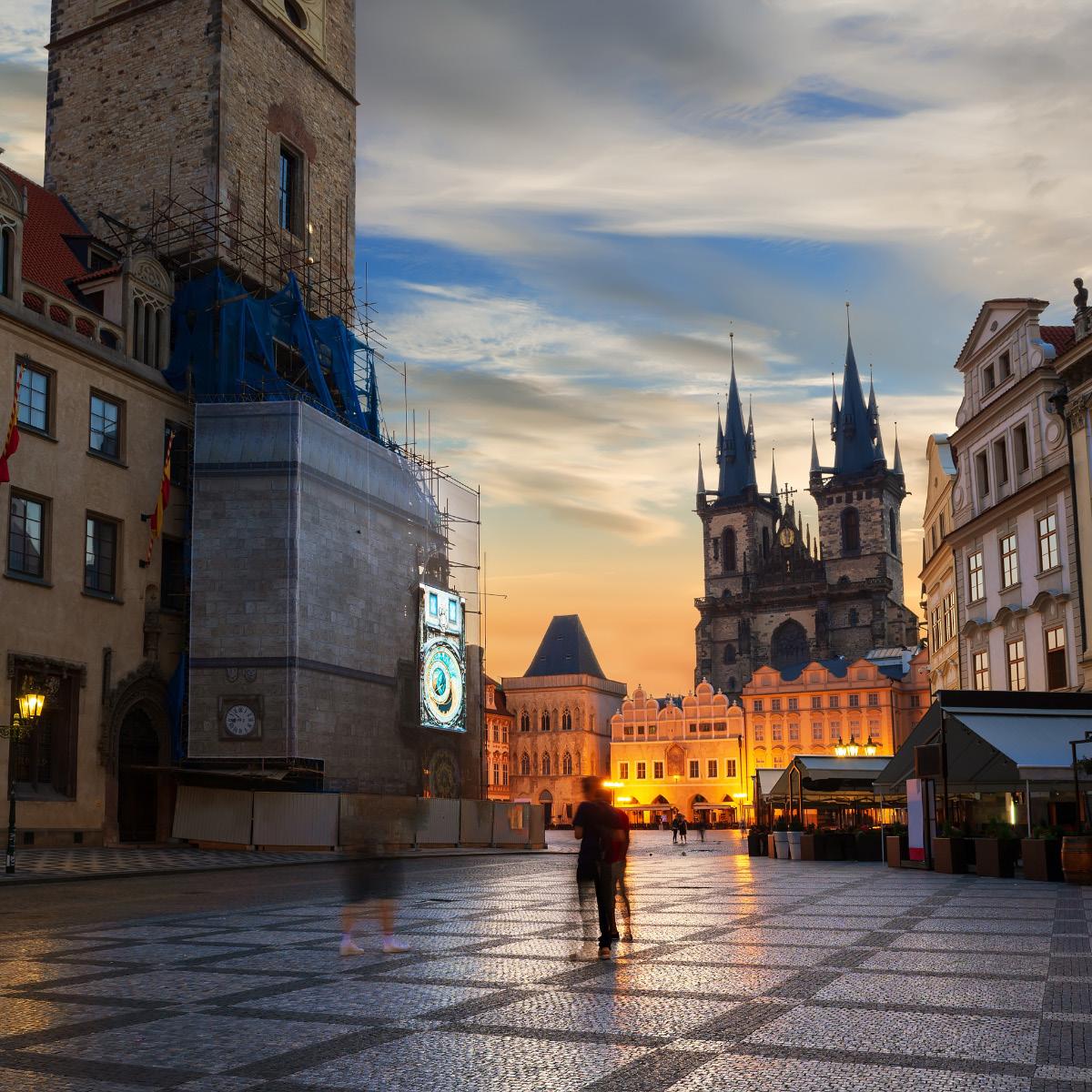
Our Lady before Týn and the Baroque St. Nicholas Church, providing a striking contrast of architectural styles. Throughout history, the square has witnessed pivotal events, including public executions during the Thirty Years’ War and anti-communist protests during the Velvet Revolution of 1989. Today, it remains a vibrant public space hosting Christmas markets, concerts, and cultural events. The square’s mix of historical significance and beauty makes it a favorite destination for both tourists and locals. Cafés and restaurants line its perimeter, offering views of the square’s attractions and providing a perfect place to absorb the atmosphere of Prague’s historic core. Old Town Square exemplifies Prague’s blend of history, culture, and vibrant city life.
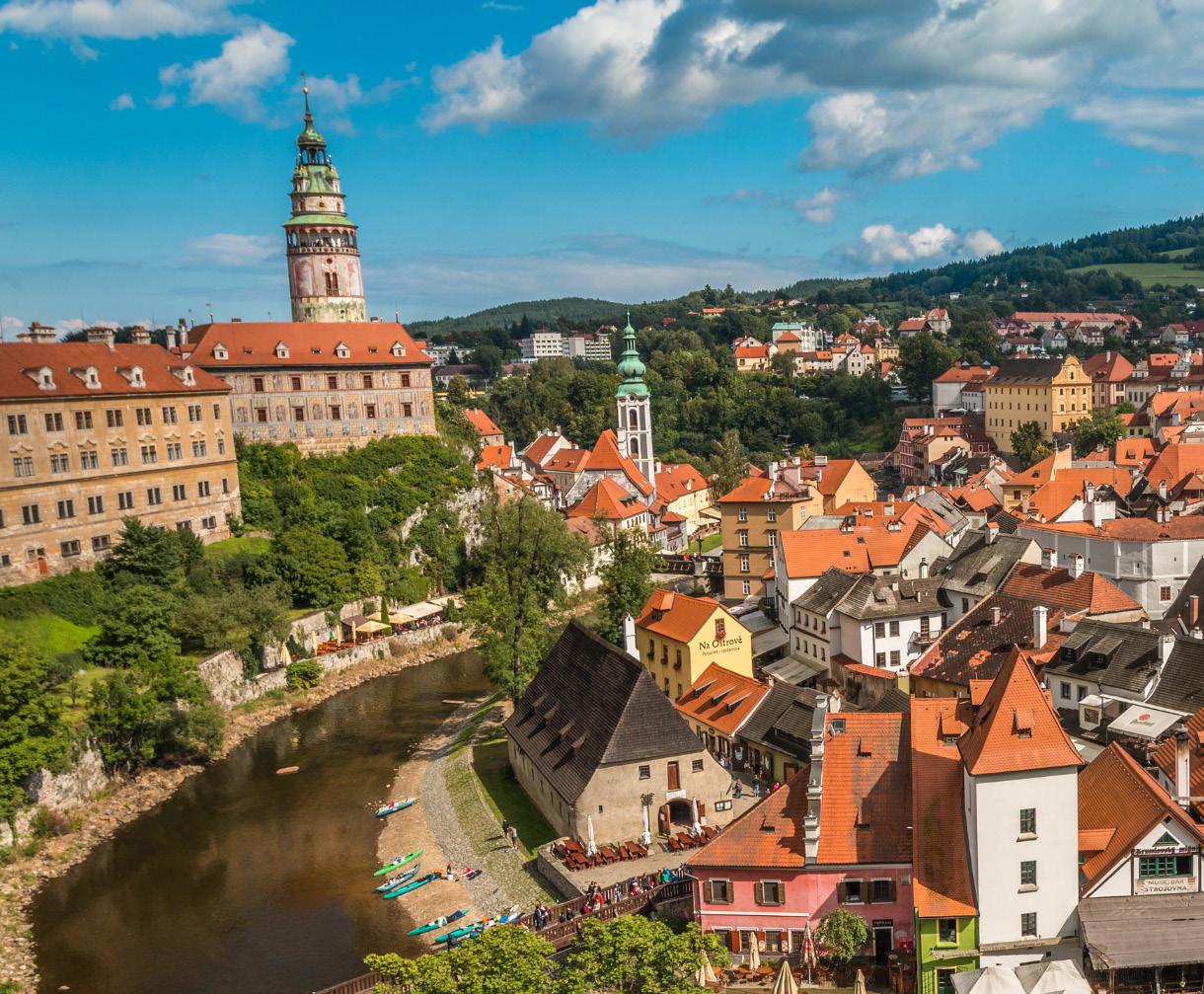
**Český Krumlov** is a picturesque town in the South Bohemian Region of the Czech Republic, renowned for its fairy-tale charm and well-preserved medieval architecture. Situated along the winding Vltava River, the town’s historic center is a UNESCO World Heritage Site, celebrated for its Gothic, Renaissance, and Baroque buildings. At the heart of Český Krumlov is its iconic **castle complex**, the second largest in the Czech Republic, after Prague Castle. Built between the 13th and 17th centuries, the castle boasts a unique blend of architectural styles, including an impressive Renaissance tower that offers panoramic views of the town and surrounding landscape. The castle grounds also feature a Baroque theater and beautiful gardens. One of
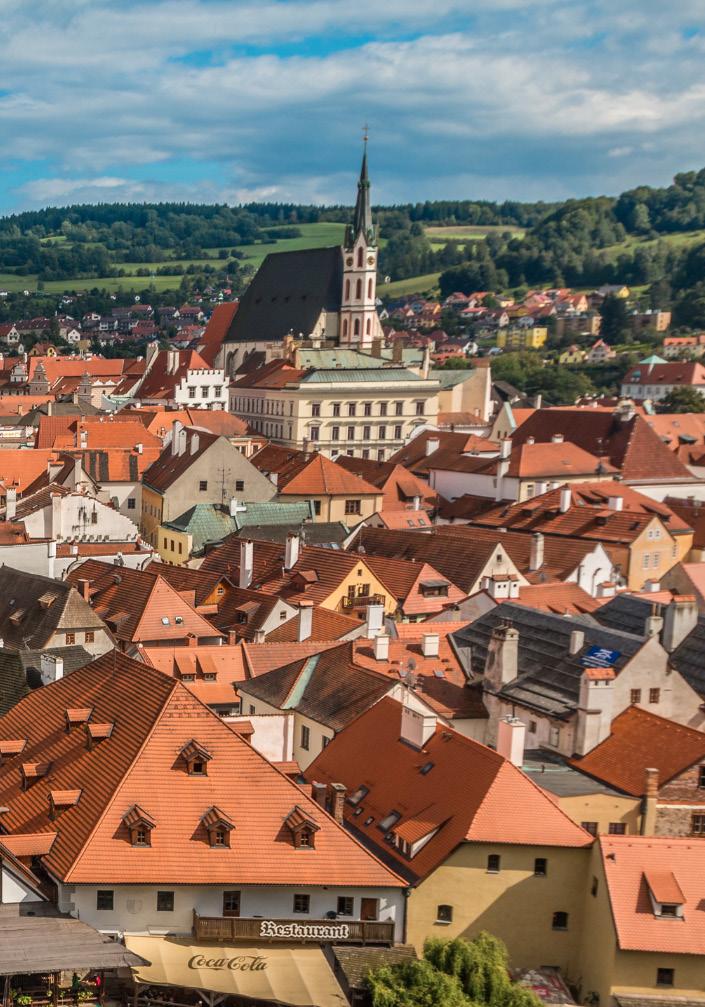
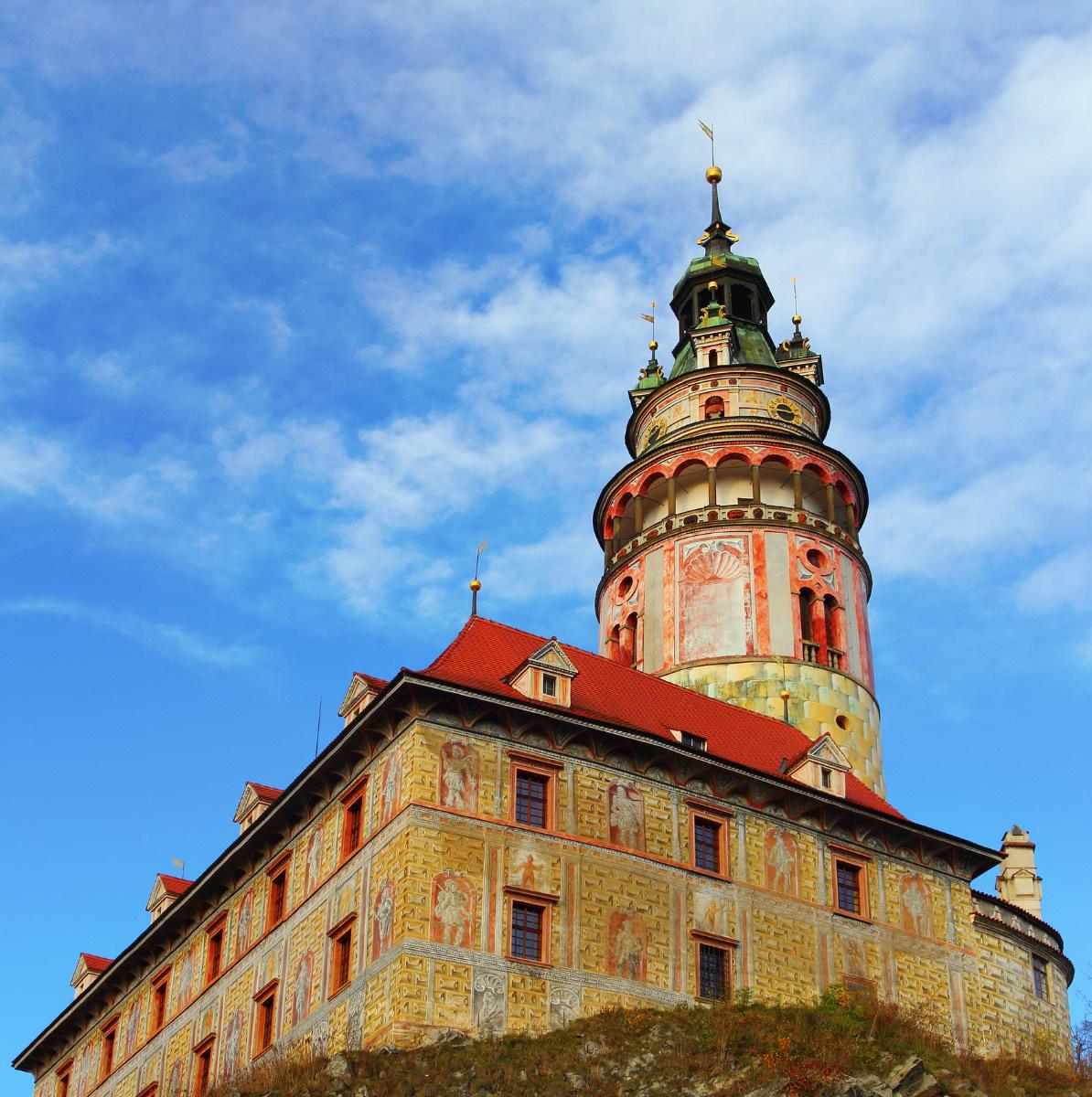
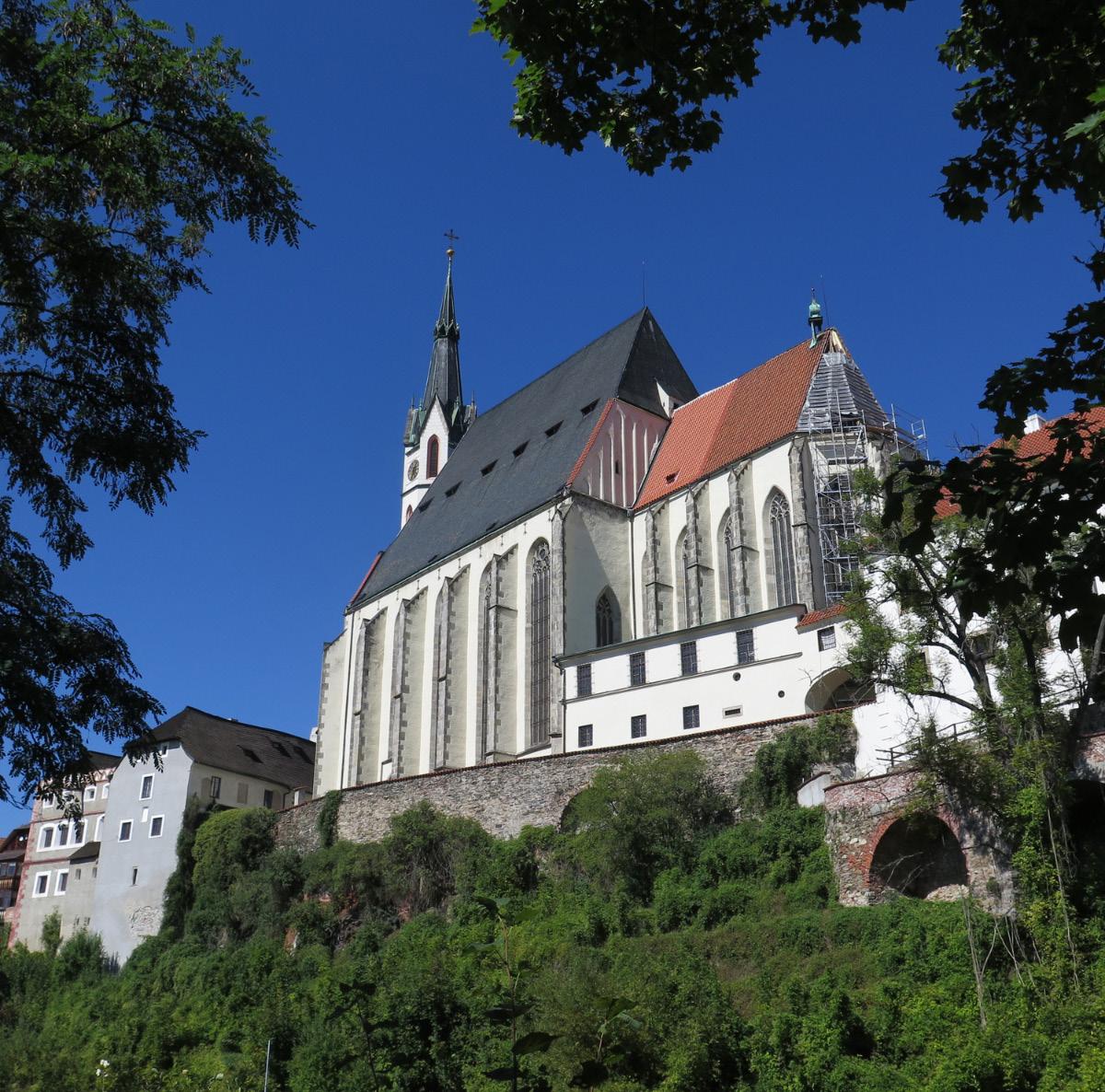
the town’s most striking features is the **Old Town**, a maze of narrow, cobbled streets lined with colorful medieval houses, many of which have been converted into shops, galleries, and cafes. The river’s horseshoe-shaped bend gives the town its distinctive layout, enhancing its scenic beauty. Český Krumlov is also a cultural hub, hosting events such as the **Five-Petalled Rose Festival**, which reenacts medieval traditions, and the **International Music Festival**, attracting artists and visitors worldwide. Its vibrant arts scene is complemented by numerous museums, including the Egon Schiele Art Centrum. With its rich history, stunning architecture, and artistic heritage, Český Krumlov is a captivating destination that offers a glimpse into the Czech Republic’s past and present charm.
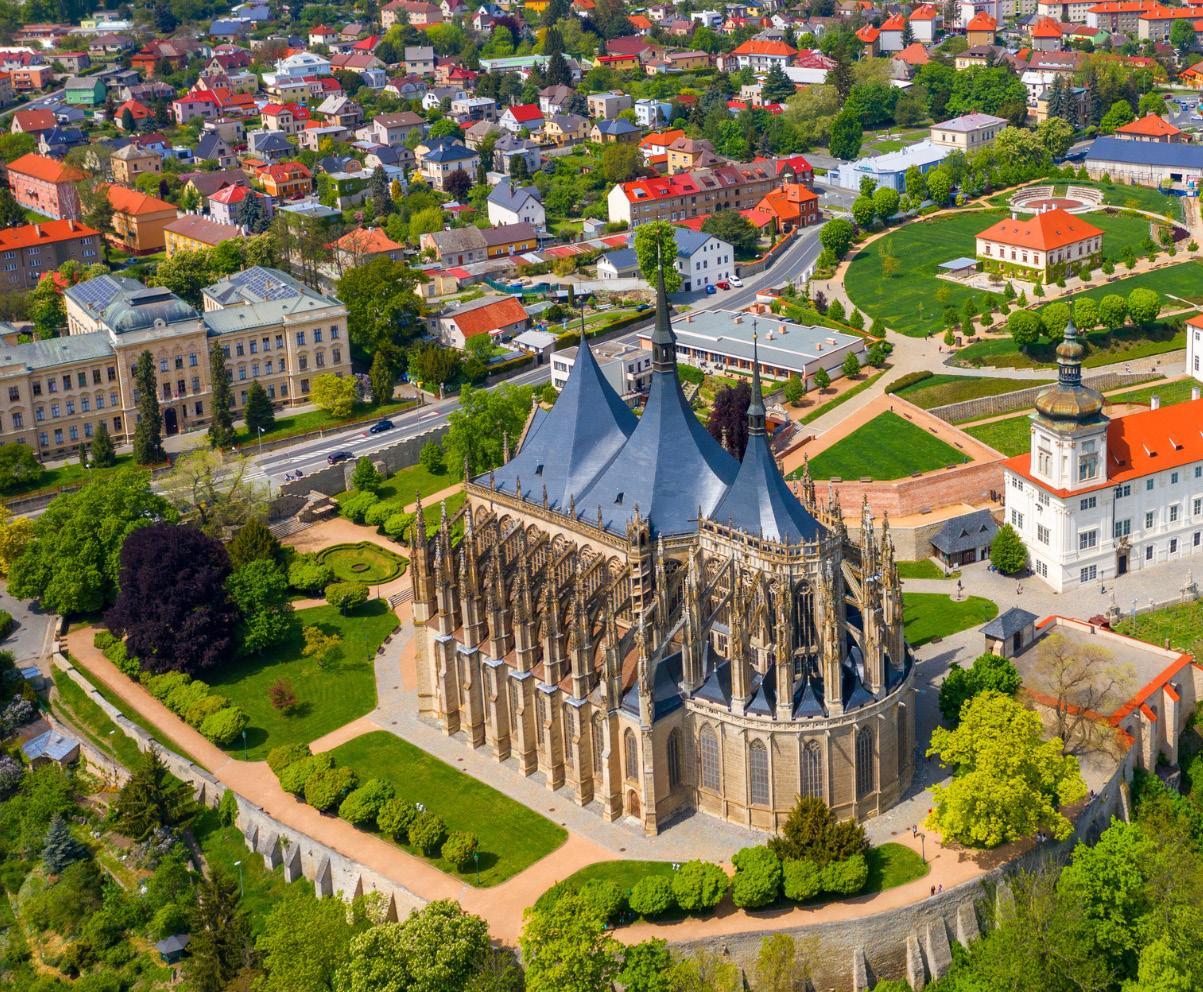
Kutná Hora, a historic town in the Czech Republic, is renowned for its rich cultural and architectural heritage. Located about 70 kilometers east of Prague, the town’s origins date back to the 13th century, when it became a major center for silver mining. The discovery of silver deposits led to rapid growth, and by the 14th century, Kutná Hora was one of the wealthiest cities in Europe, rivaling Prague in significance. One of the town’s most iconic landmarks is the **Sedlec Ossuary**, a small chapel adorned with the bones of an estimated 40,000 people, arranged in elaborate designs, including chandeliers and pyramids. This macabre yet fascinating site draws visitors from around the world. Another notable attraction is the **Cathedral of St. Barbara**,

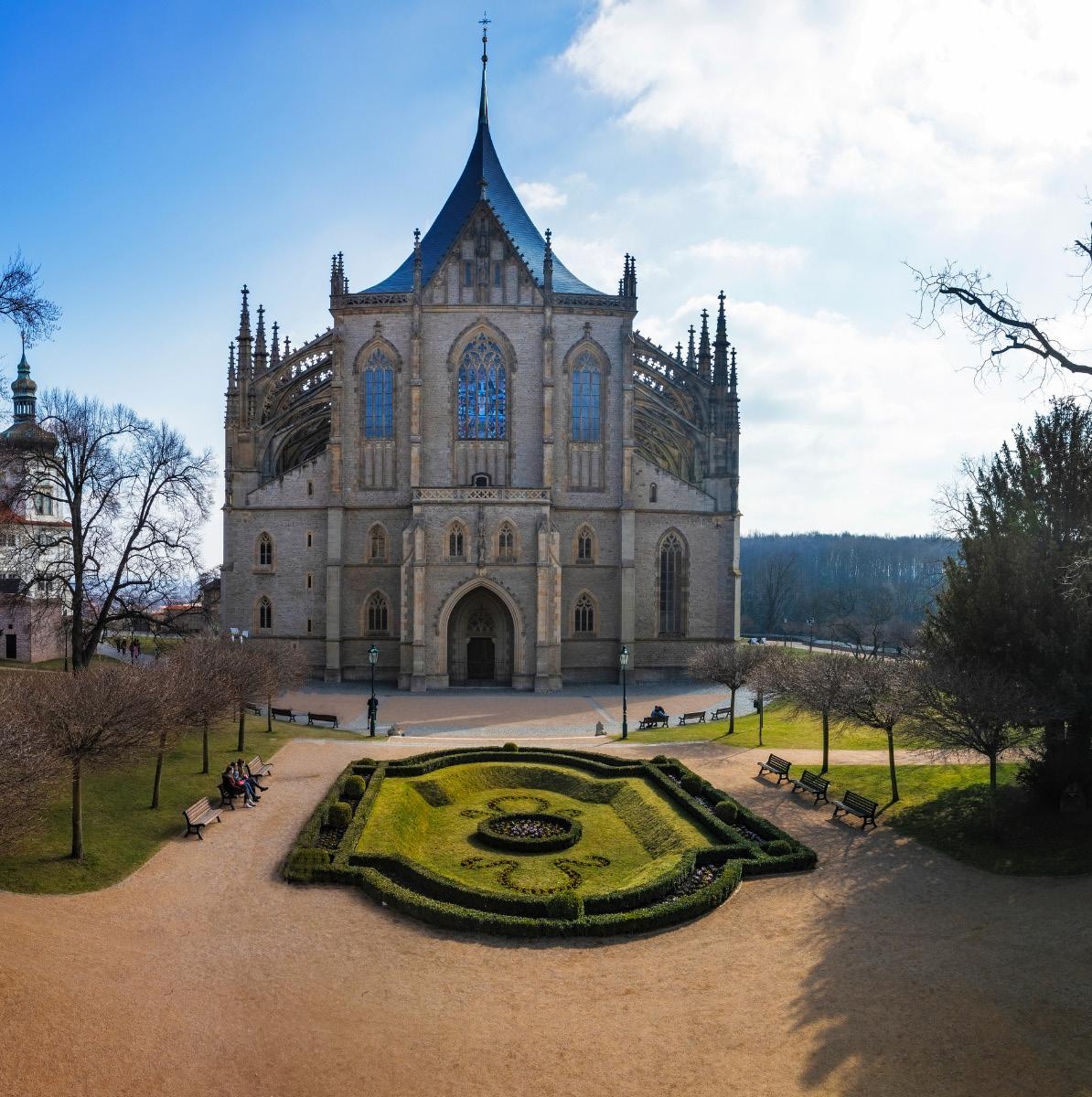
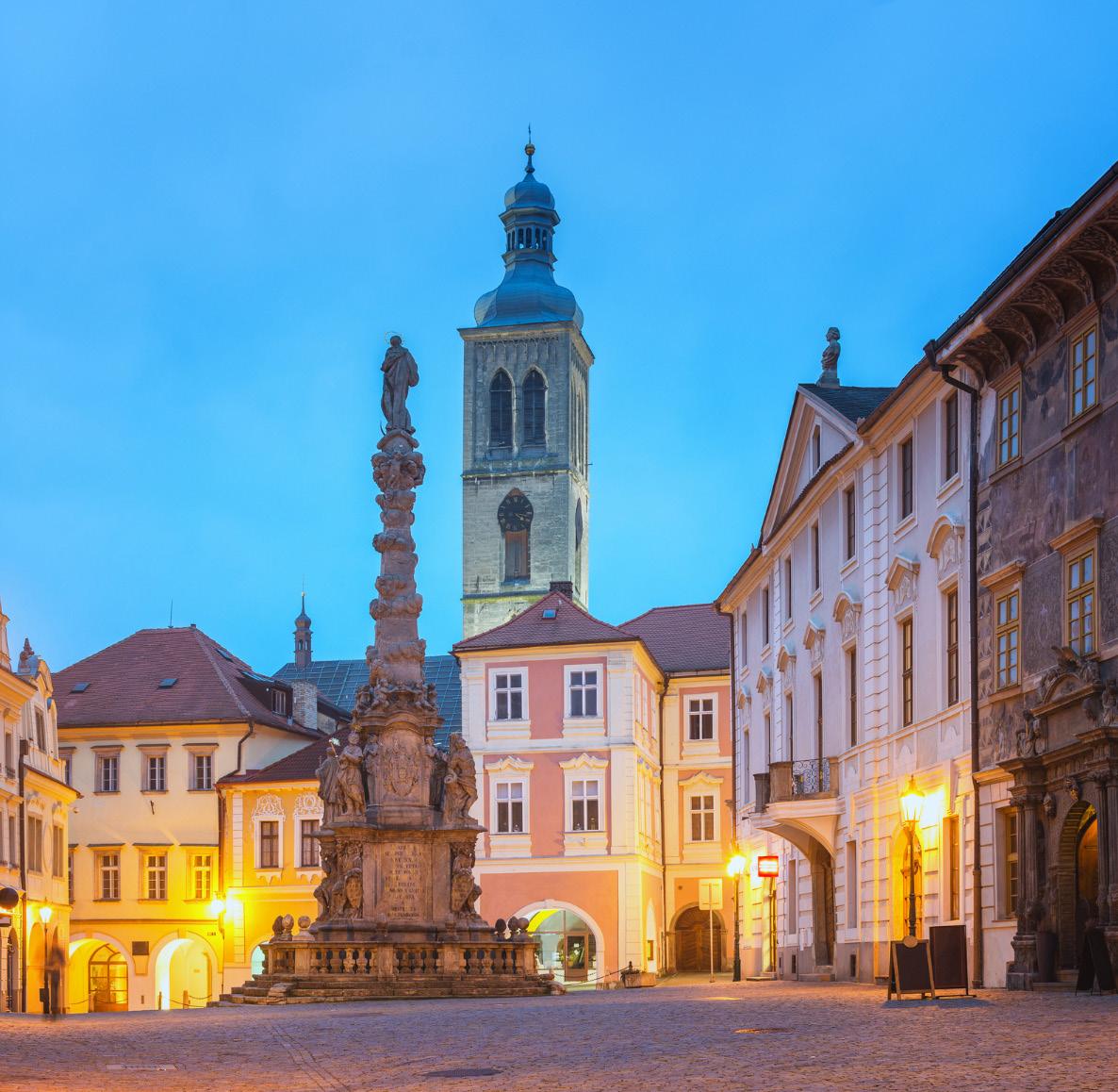
a stunning example of Gothic architecture and a UNESCO World Heritage site. This cathedral, built between the 14th and 16th centuries, reflects the town’s former prosperity and religious significance. Kutná Hora also played a pivotal role in the economic development of medieval Europe. The town’s Royal Mint produced vast amounts of coinage, further establishing its influence. However, by the 16th century, silver reserves dwindled, leading to the town’s gradual decline. Today, Kutná Hora is celebrated for its well-preserved medieval buildings and historical charm, making it a popular tourist destination. The town’s blend of Gothic and Baroque architecture, along with its intriguing past, offers visitors a unique glimpse into Central European history.
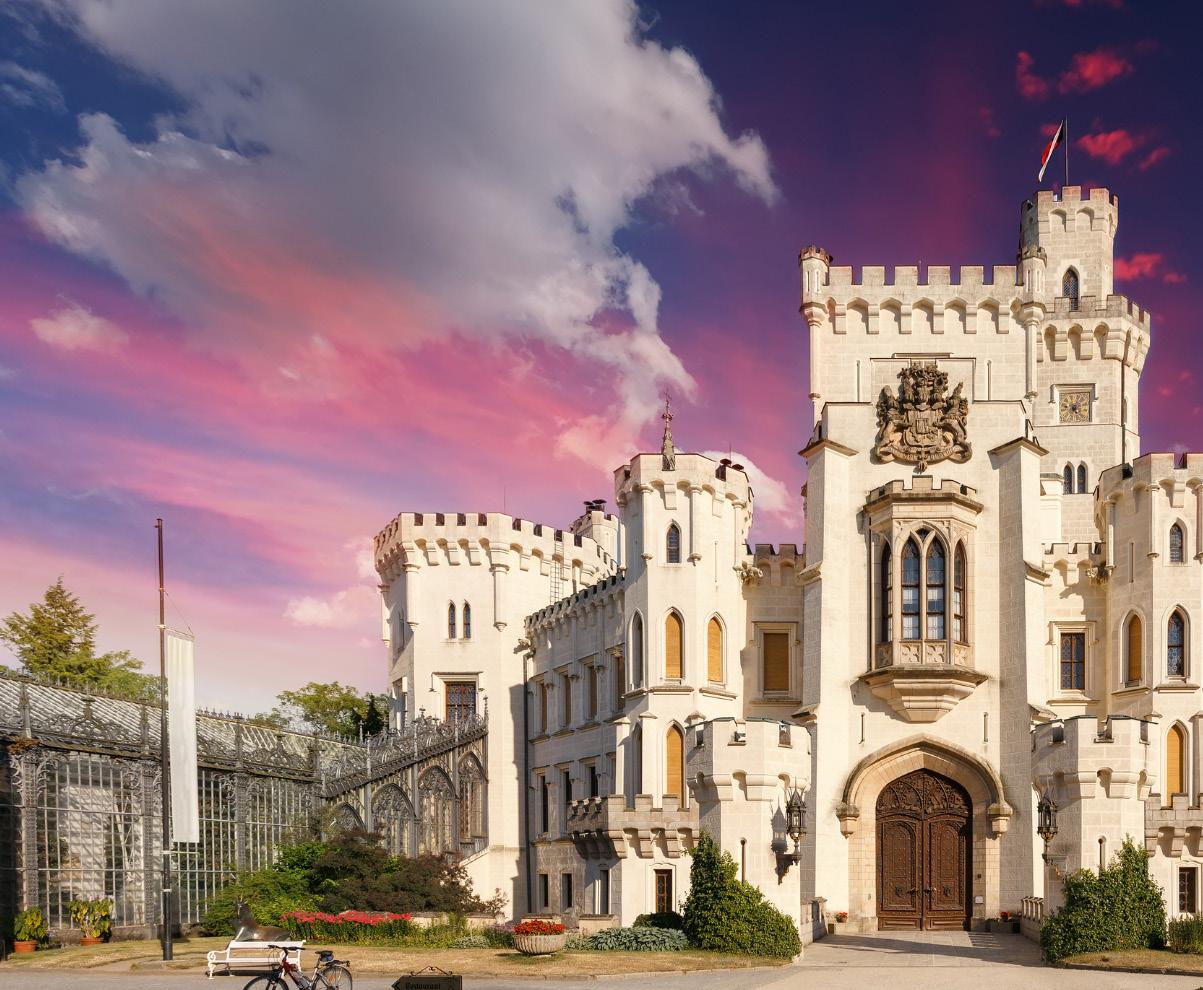
Hluboká Castle, located in the South Bohemian Region of the Czech Republic, is one of the country’s most stunning and well-preserved historic landmarks. Originally built in the 13th century as a Gothic fortress, the castle underwent several renovations, reflecting various architectural styles over the centuries. Its current appearance, influenced by England’s Windsor Castle, stems from a major reconstruction in the mid-19th century under the Schwarzenberg family, who owned the estate from 1661. Hluboká Castle was remodeled in the Romantic Gothic Revival style, with intricate white façades, turrets, and battlements. The castle is surrounded by vast, manicured gardens, featuring English-style landscaped areas and baroque-style terraces, adding
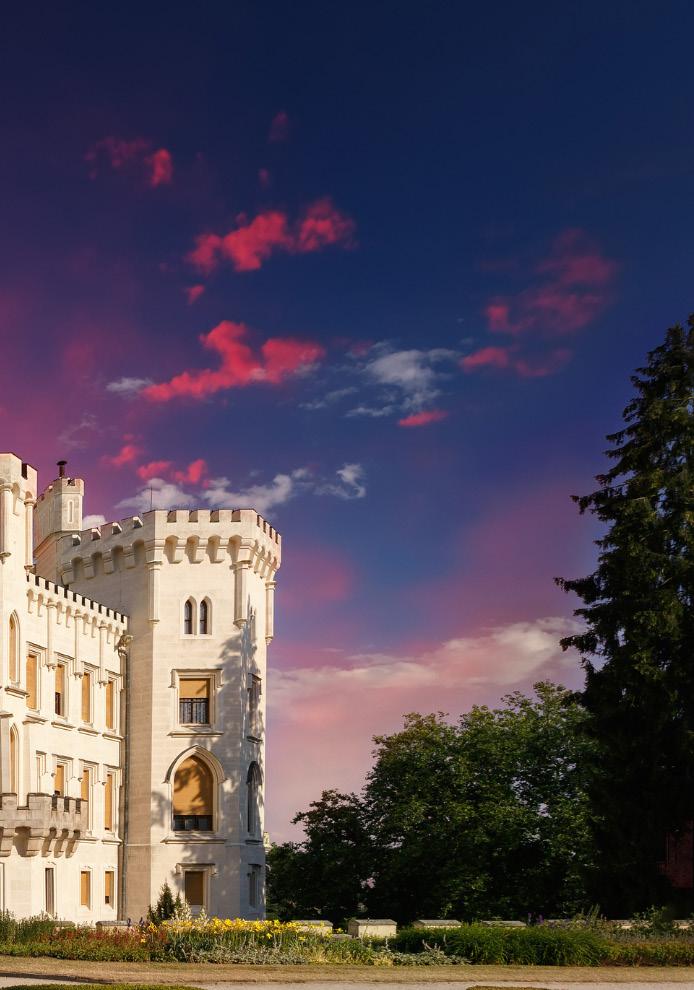
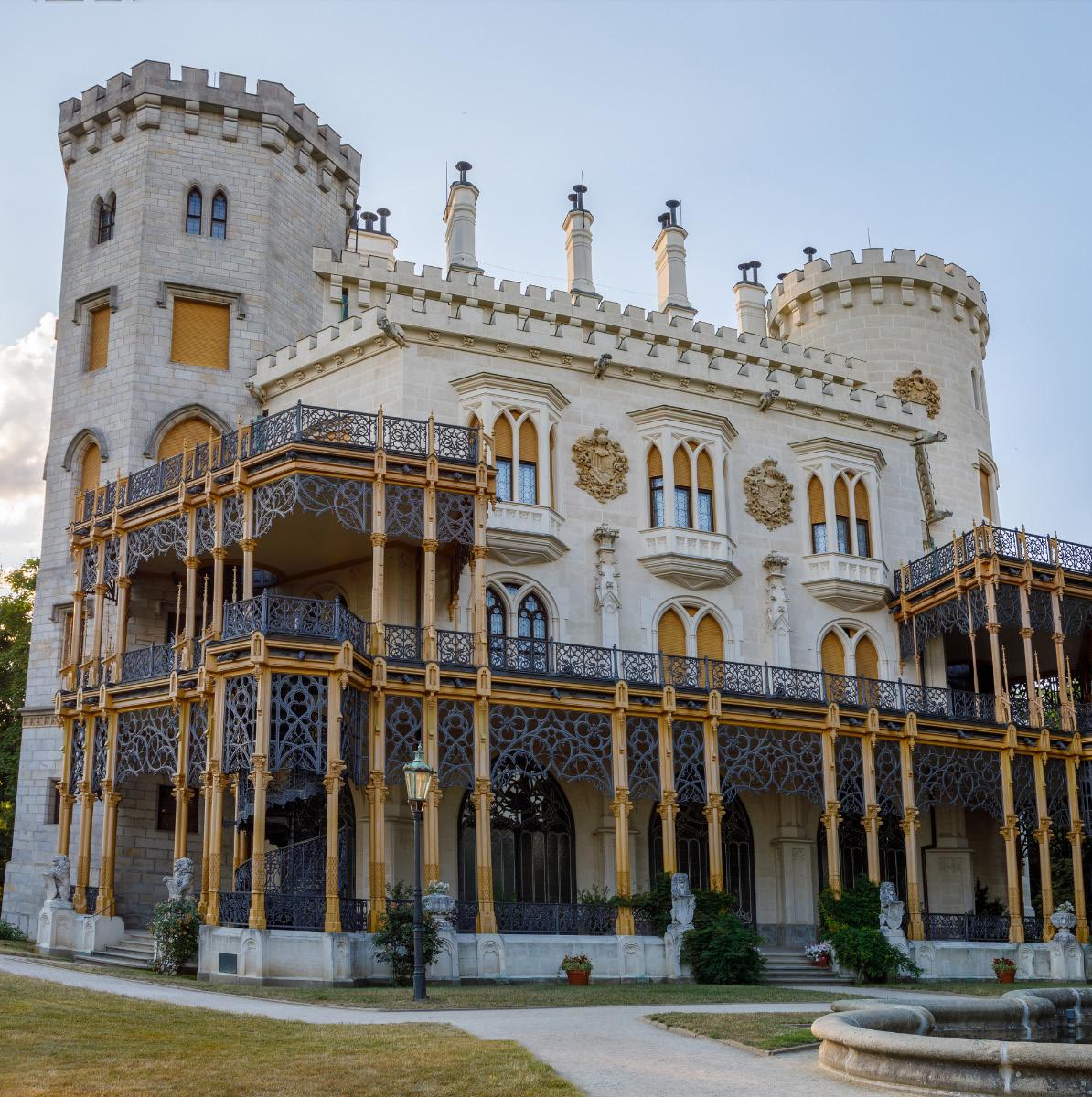
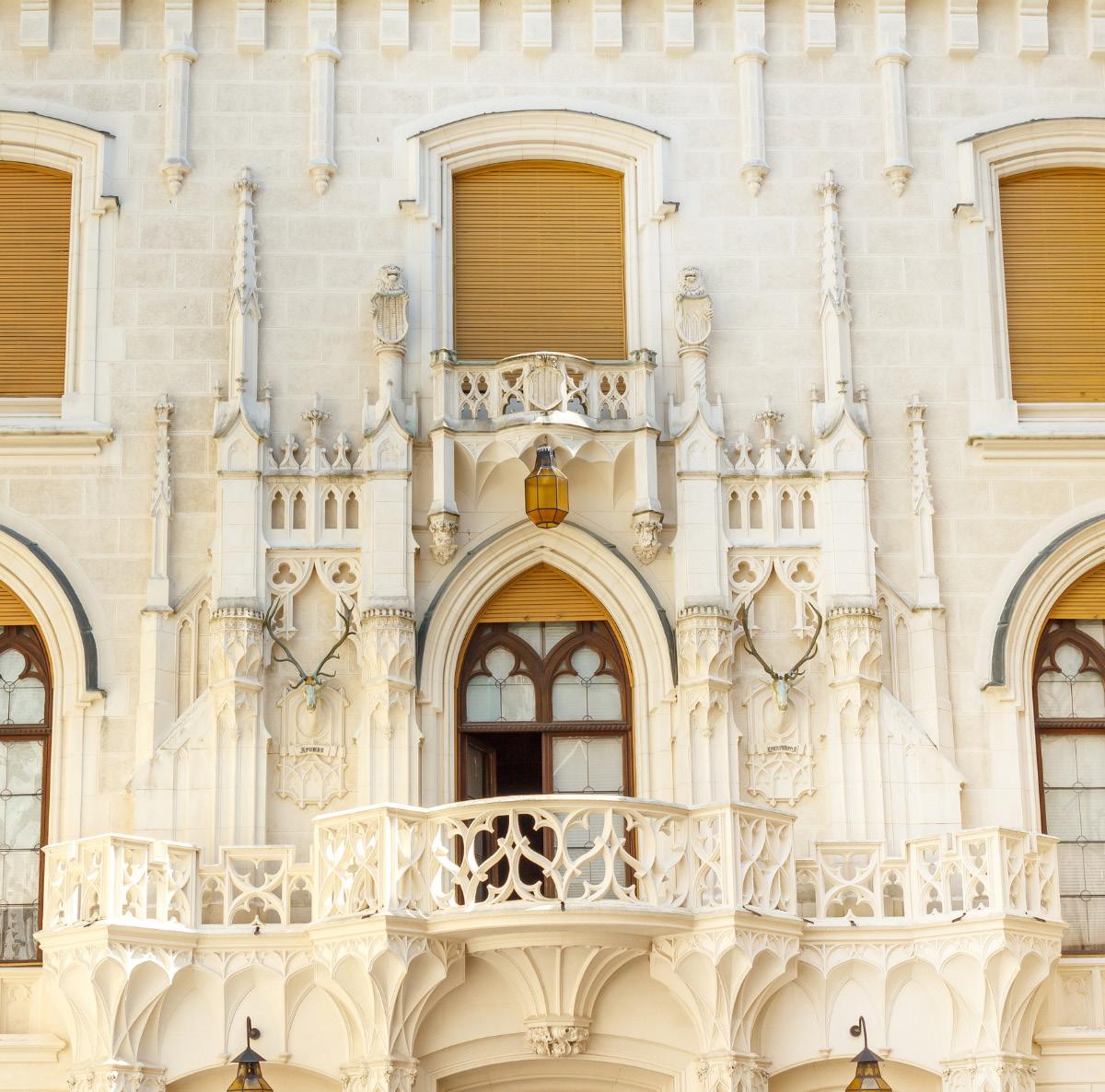
to its fairy-tale-like charm. Inside, the castle boasts lavish interiors with wood-paneled walls, elaborate ceilings, and a remarkable collection of paintings, tapestries, and antique furniture. Its library and armory are particularly noteworthy, showcasing the wealth and power of the Schwarzenberg family. Today, Hluboká Castle is a popular tourist destination, offering guided tours that delve into its rich history and stunning art collection. It also hosts various cultural events and exhibitions throughout the year. The castle’s picturesque location overlooking the Vltava River and its proximity to other historic towns, such as Český Krumlov, makes it a significant cultural landmark in the Czech Republic and an example of European aristocratic splendor.
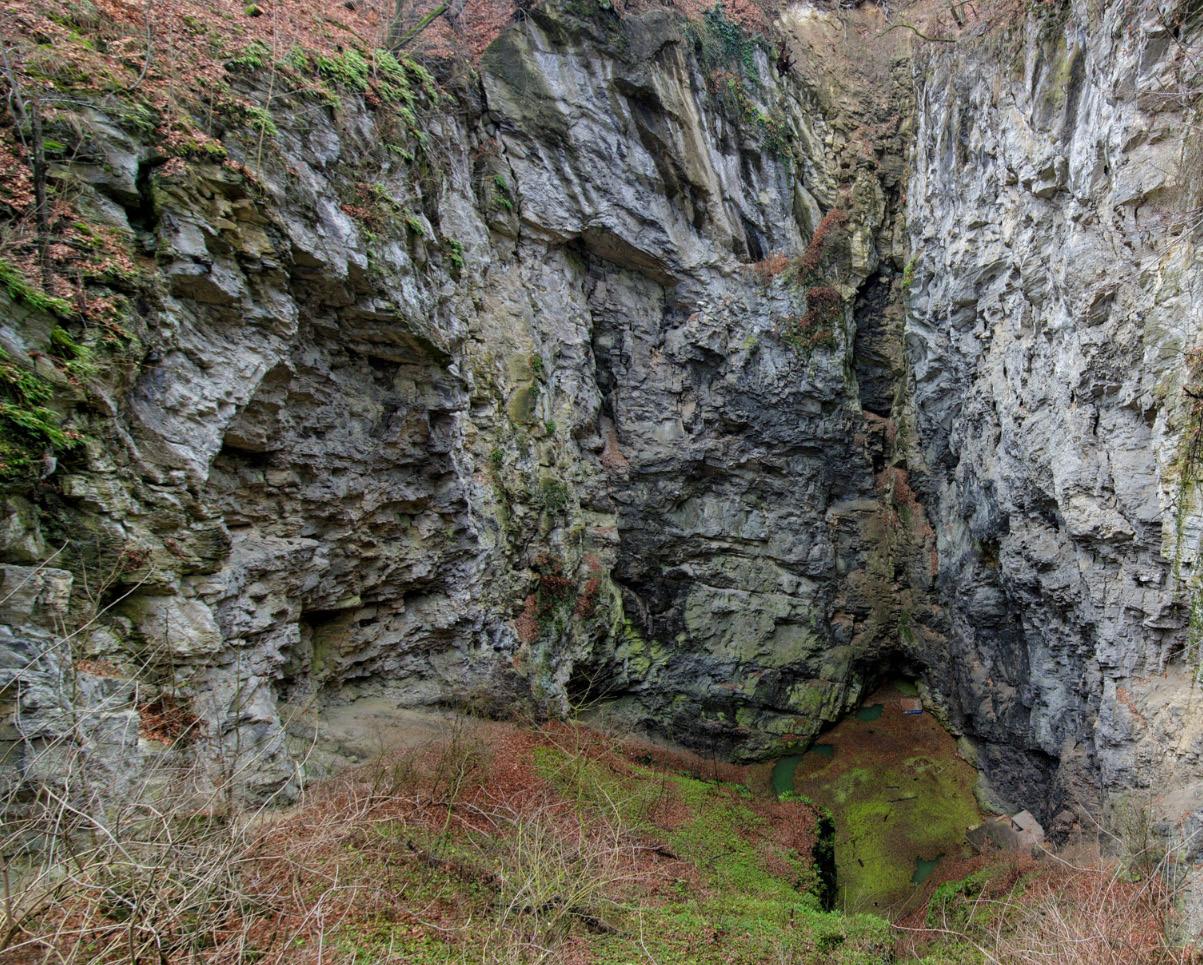
The **Hranice Abyss** (Hranická Propast) is the world’s deepest known freshwater cave, located near the town of Hranice in the Czech Republic. Situated within the Hranice Karst region, the abyss plunges to an astonishing depth of over **1,000 meters** (3,280 feet), with approximately 450 meters confirmed as submerged underwater. In 2016, a remotely operated underwater vehicle (ROV) descended to a depth of 404 meters in the water-filled section, but it was unable to reach the bottom, indicating the potential for even greater depths. Further exploration in 2022 confirmed a depth of around 450 meters. The abyss was formed through the process of karstification, where slightly acidic water dissolves limestone and other soluble rocks, gradually enlarging cracks and fissures. This geological process has resulted
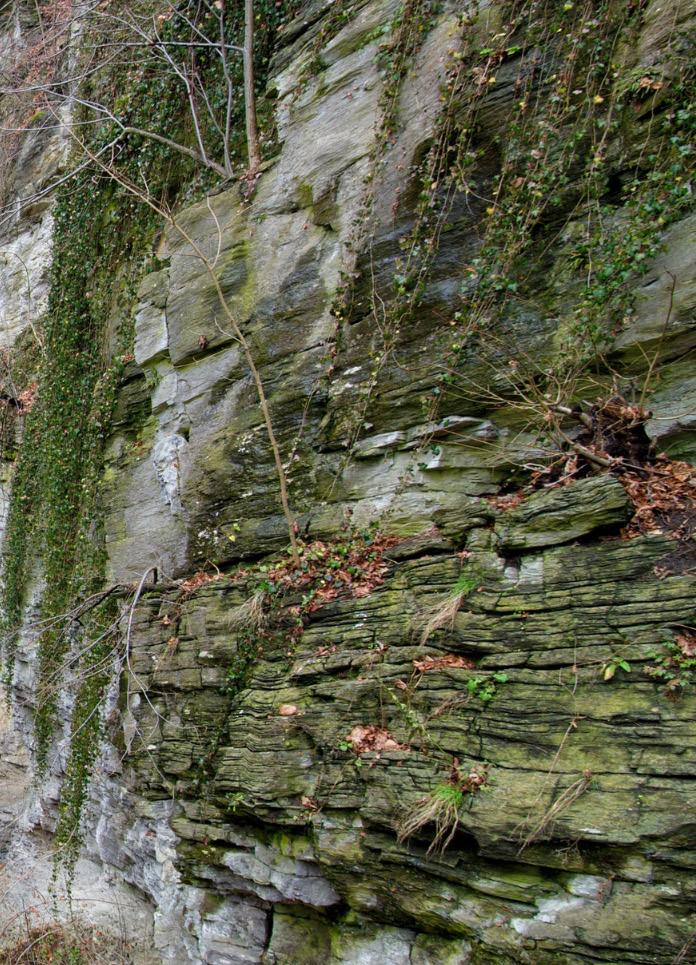
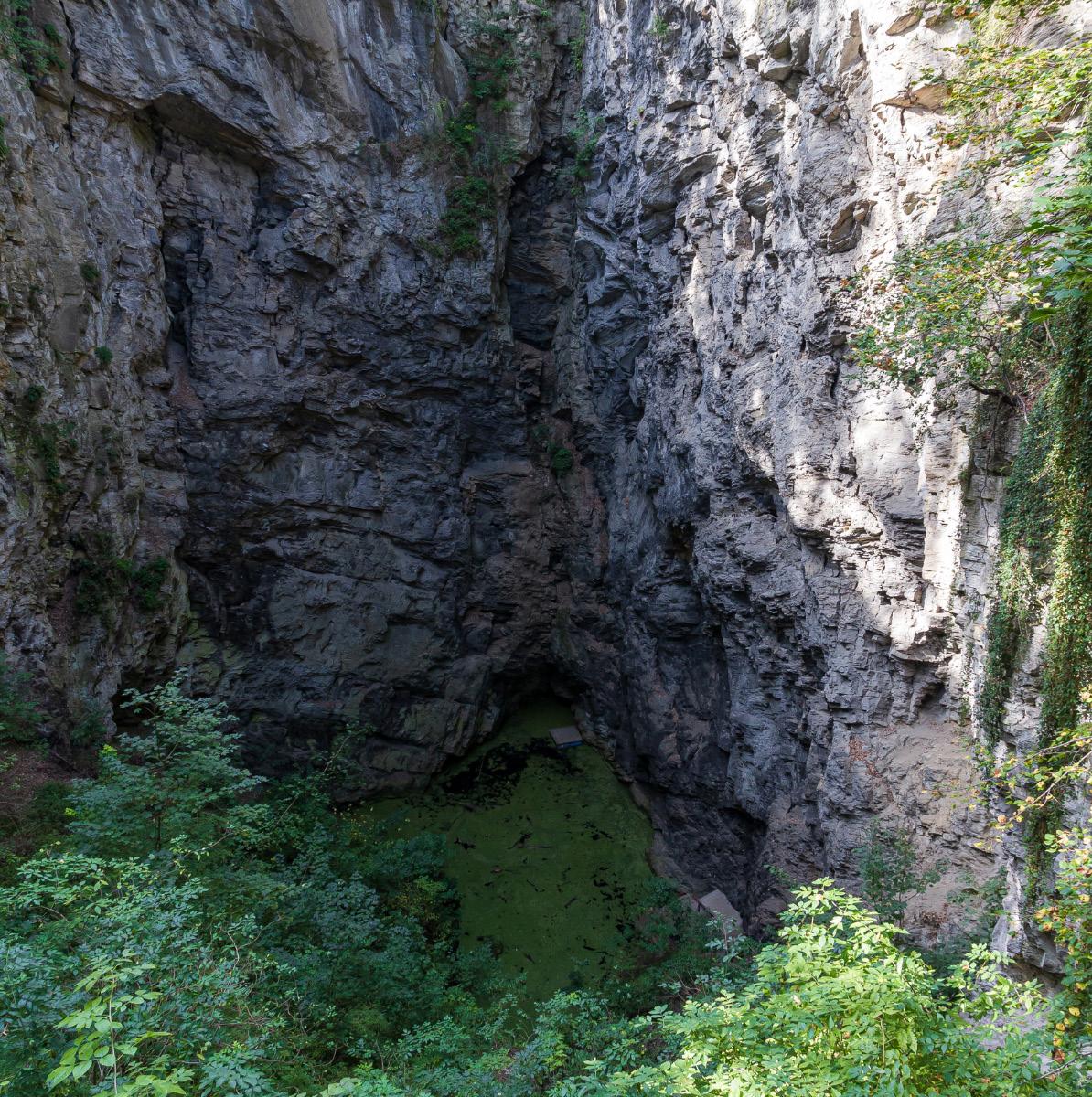
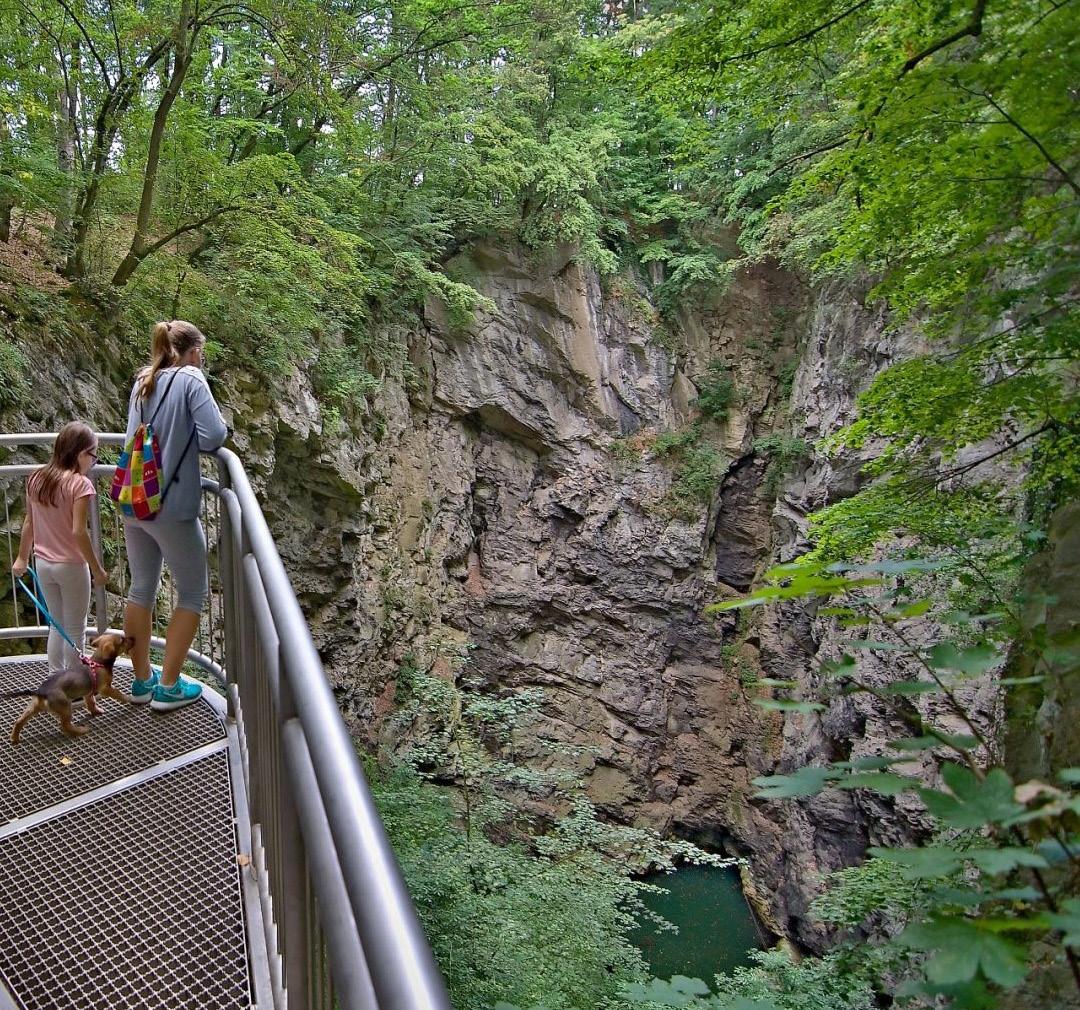
in an underwater cave system of immense size and complexity. The waters of the Hranice Abyss are rich in dissolved carbon dioxide, contributing to its aggressive erosive power. Exploration of the Hranice Abyss has been particularly challenging due to the dangerous conditions, including cold water, narrow passages, and the limits of current underwater technology. Researchers and cave divers continue to study the site to better understand its formation and full extent. The abyss has become a focal point for scientific interest, offering insights into subterranean ecosystems and the geomorphology of deep karst systems. The ongoing exploration of Hranice Abyss may reveal further mysteries of this natural wonder, making it a subject of fascination for geologists and adventurers alike.
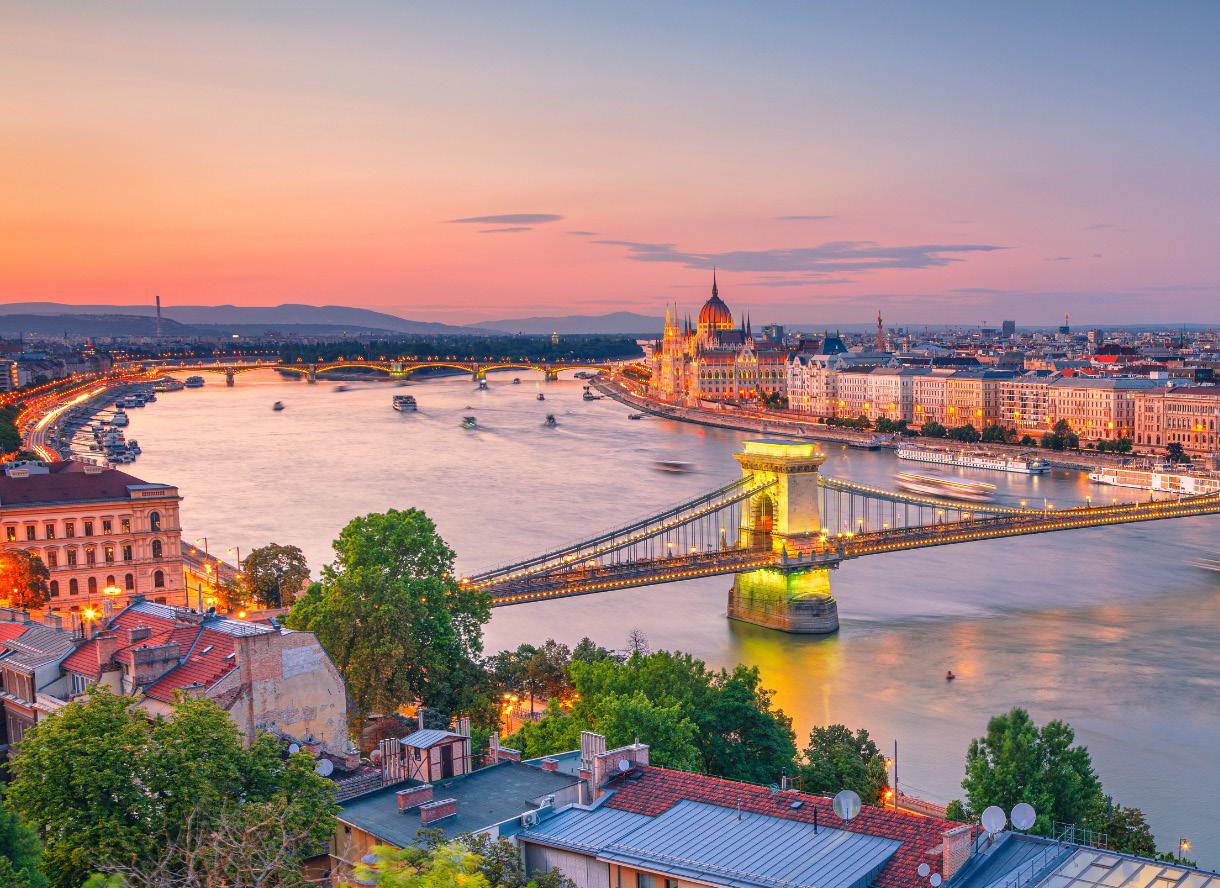
Hungary is a country where history, culture, and natural beauty meet, offering travelers an unforgettable experience in the heart of Europe. Its capital, Budapest, is often called the “Pearl of the Danube,” with the river splitting the city into two distinct halves: hilly (Buda) and bustling (Pest). Visitors are captivated by the stunning Hungarian Parliament Building, the fairytale-like Fisherman’s Bastion, and the Chain Bridge, which glows beautifully at night. Budapest is also famous for its thermal baths—like Széchenyi and Gellért—where centuries-old spa traditions meet modern relaxation. Beyond the capital, Hungary reveals charming towns, vast plains, and wine regions waiting to be explored. Lake Balaton, Central Europe’s largest freshwater lake, draws visitors for summer swimming, sailing, and the scenic Tihany
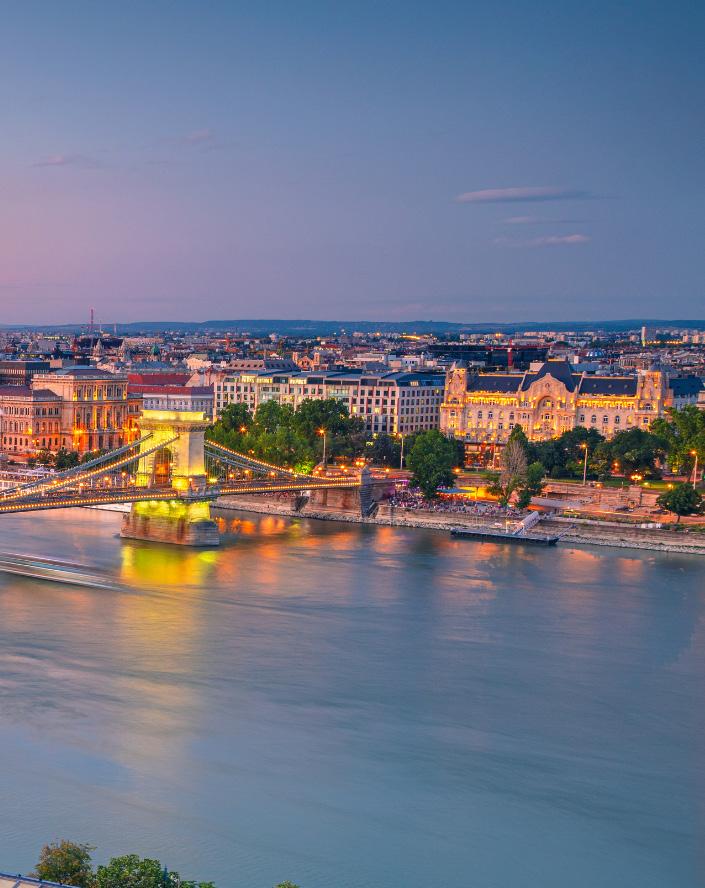
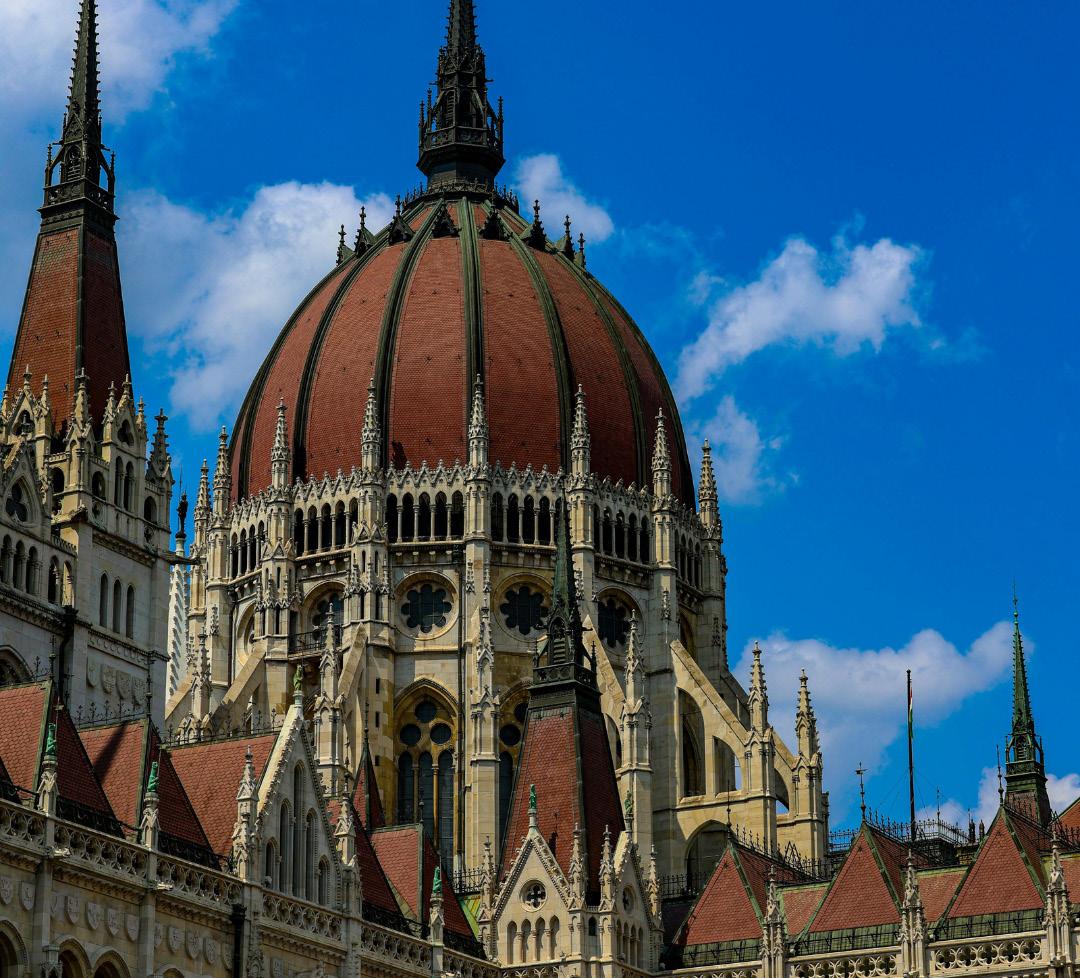
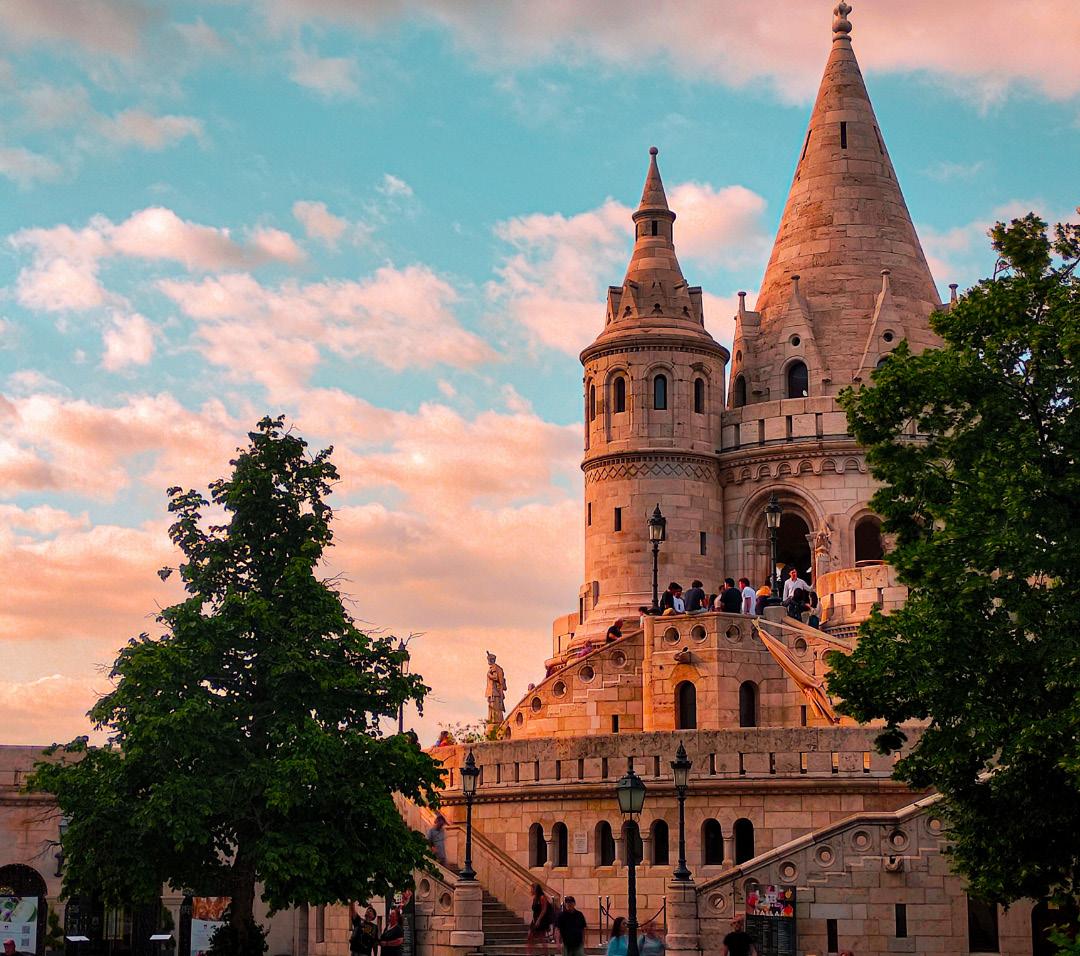
Peninsula. Hungary’s history is woven into every corner, from medieval castles and Baroque churches to poignant memorials. Towns like Eger and Pécs showcase this blend of heritage and culture, with cobblestone streets, ancient fortresses, and vibrant art scenes. No trip is complete without tasting Hungarian cuisine—goulash, lángos, and sweet kürtőskalács (chimney cake) offer a flavorful introduction to local traditions. Whether you’re strolling through Budapest’s lively ruin pubs, relaxing in a thermal pool, or sipping Tokaji wine in the countryside, Hungary invites you to slow down and savor its treasures. This is a country that celebrates its past while embracing the present—a place where every traveler can find something to love.
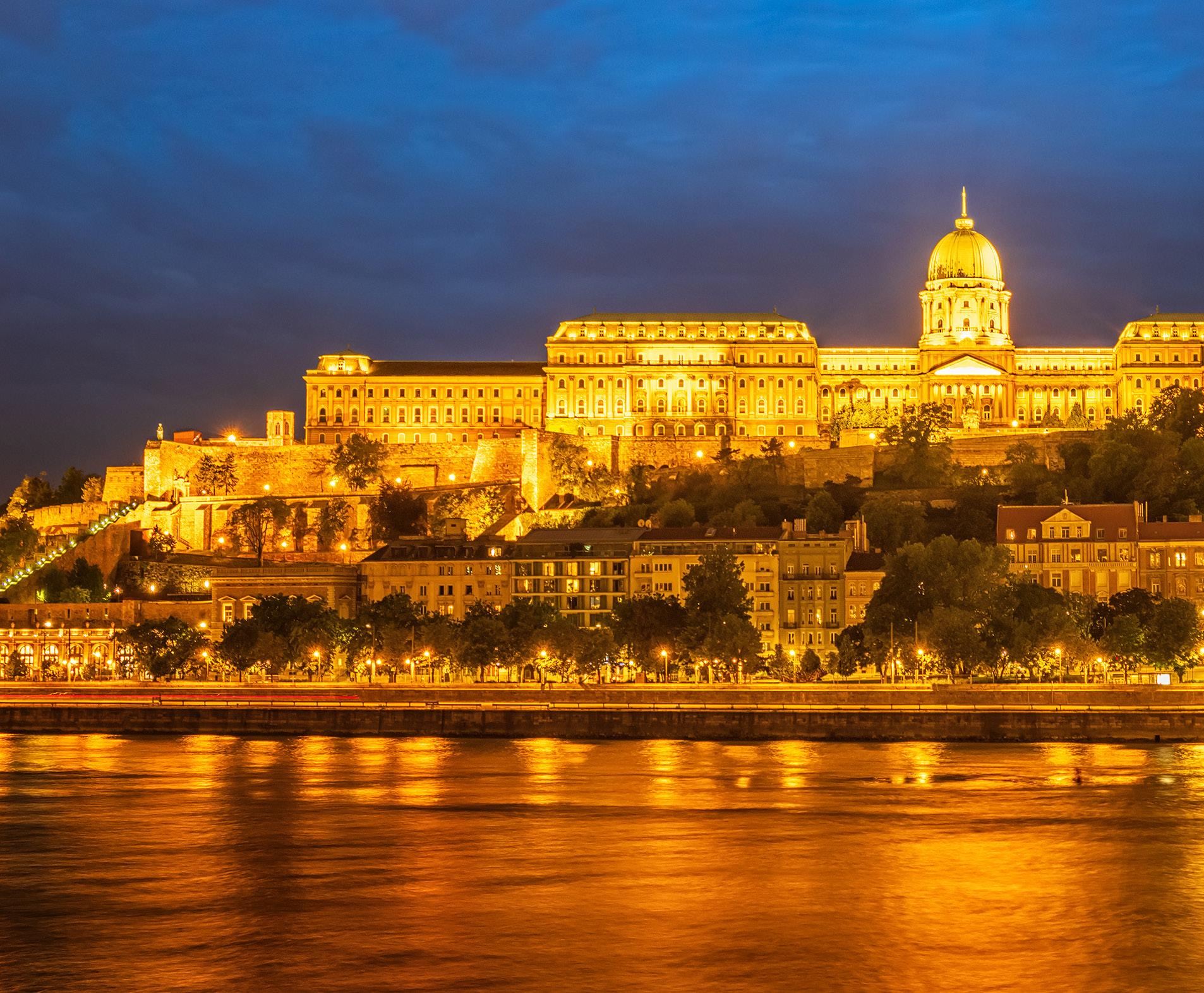
Buda Castle, perched majestically on Castle Hill overlooking the Danube River, is one of Hungary’s most iconic landmarks and a symbol of Budapest’s rich history. Originally built in the 13th century after the Mongol invasion, the castle has undergone countless reconstructions, expansions, and restorations, reflecting the turbulent history of Hungary itself. Over the centuries, it evolved from a medieval fortress into an opulent royal palace, serving as the residence of Hungarian kings for hundreds of years. The current Baroque-style structure, largely rebuilt in the 18th century by the Habsburgs, replaced earlier Gothic and Renaissance elements destroyed during wars and sieges. Its grand façade, expansive courtyards, and panoramic terraces offer
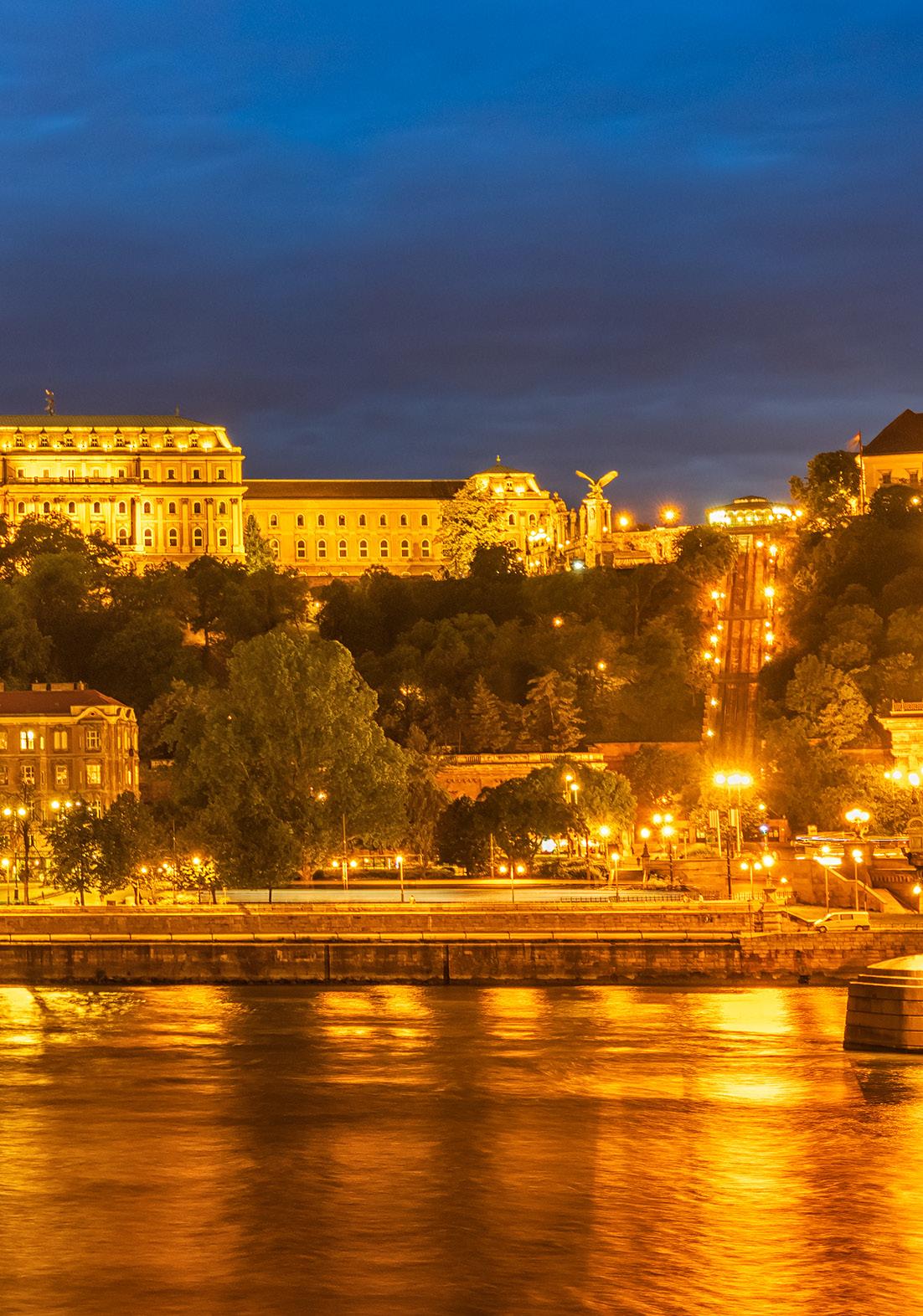
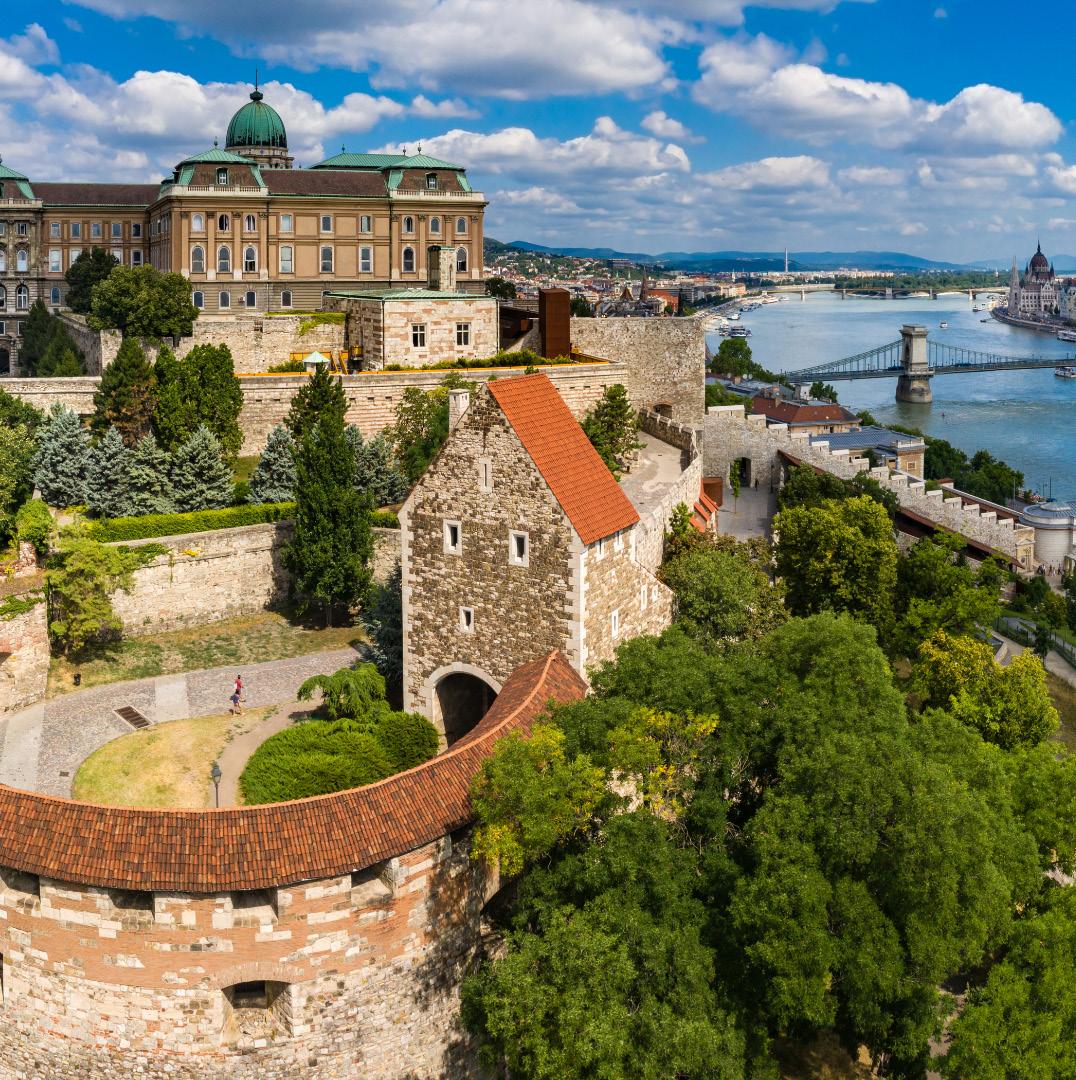
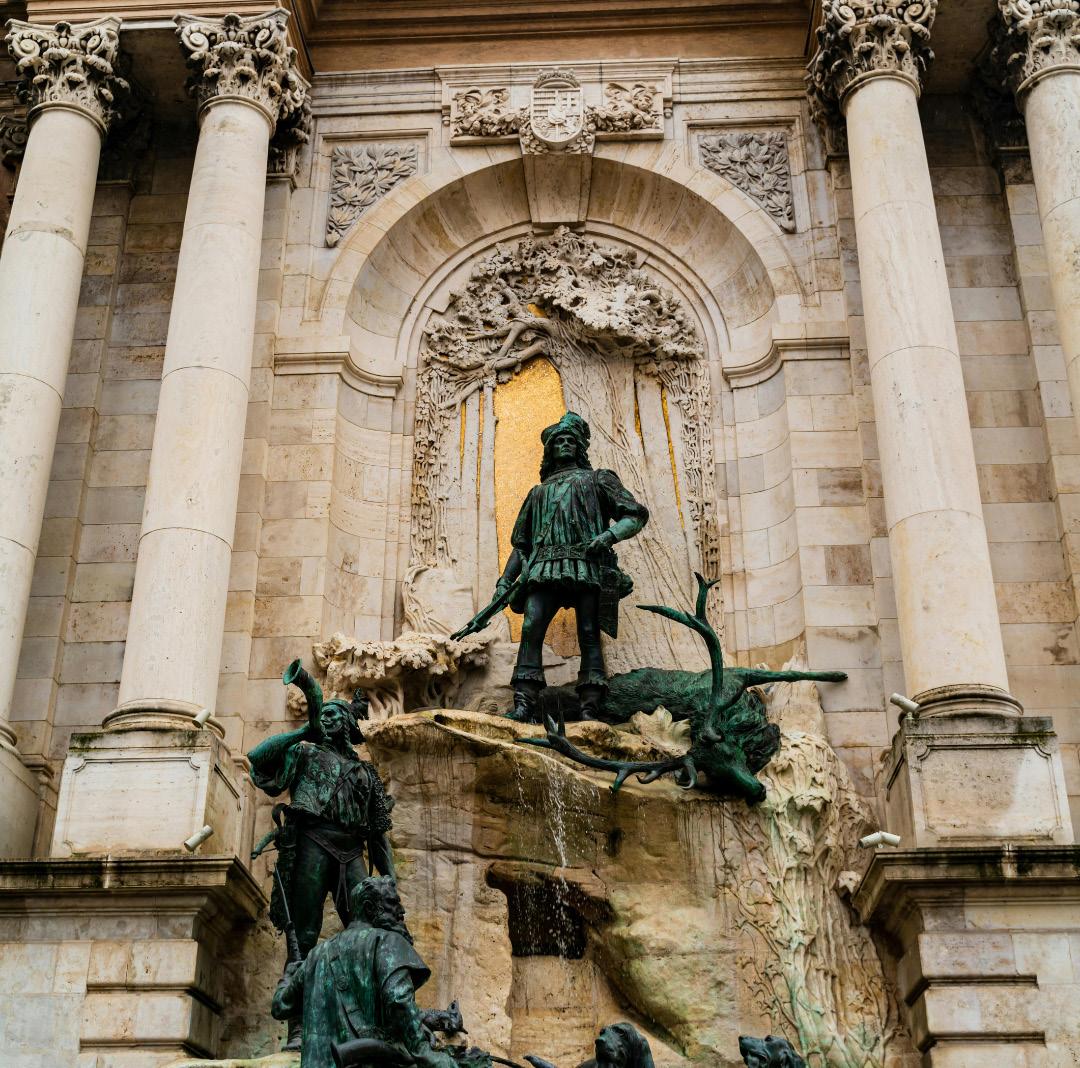
breathtaking views of the Danube, the Chain Bridge, and the Pest side of the city. Today, Buda Castle is not just a monument to Hungary’s royal past—it’s a vibrant cultural hub. The palace complex houses several major institutions, including the Hungarian National Gallery, showcasing centuries of Hungarian art, and the Budapest History Museum, which tells the story of the city from its Roman roots to modern times. The Castle District around it, with cobbled streets and historic buildings, enhances the sense of stepping back in time.A UNESCO World Heritage Site, Buda Castle is also a focal point for events and festivals, from classical concerts to the annual Wine Festival. Visiting Buda Castle offers more than sightseeing—it’s an immersion into the layered history, resilience, and artistry that define Budapest and Hungary as a whole.
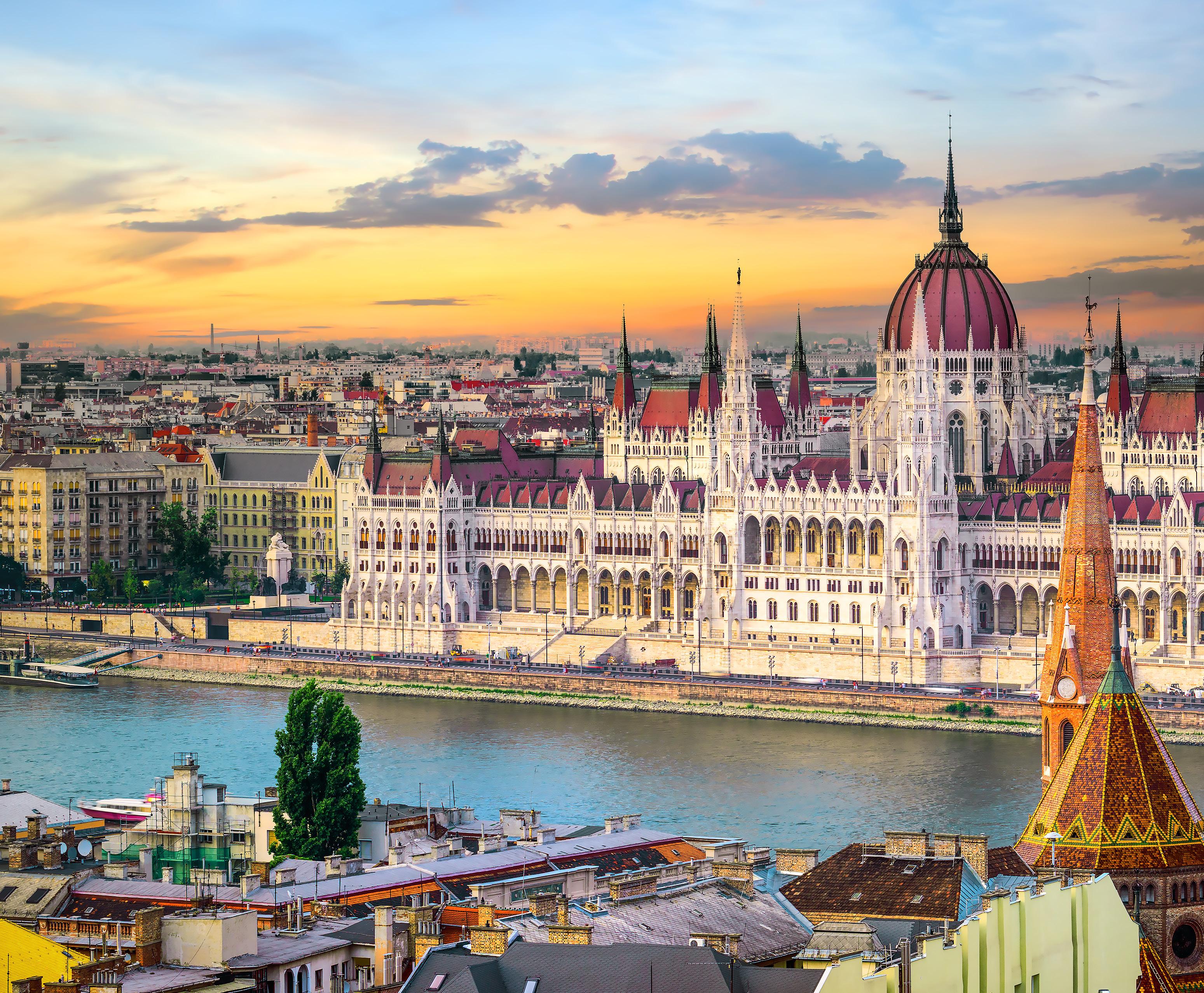
The Hungarian Parliament Building, located on the banks of the Danube River in Budapest, is one of Europe’s most iconic landmarks and a symbol of Hungary’s national pride. Completed in 1904 after nearly two decades of construction, this architectural masterpiece was designed by Imre Steindl in a stunning Neo-Gothic style, with Renaissance and Baroque influences. Its symmetrical façade, soaring spires, and elaborate stone carvings make it one of the largest and most beautiful legislative buildings in the world. The building spans over 268 meters and contains more than 690 rooms, including the National Assembly Hall and grand staircases adorned with gilded details. At its heart lies the central dome, standing 96 meters
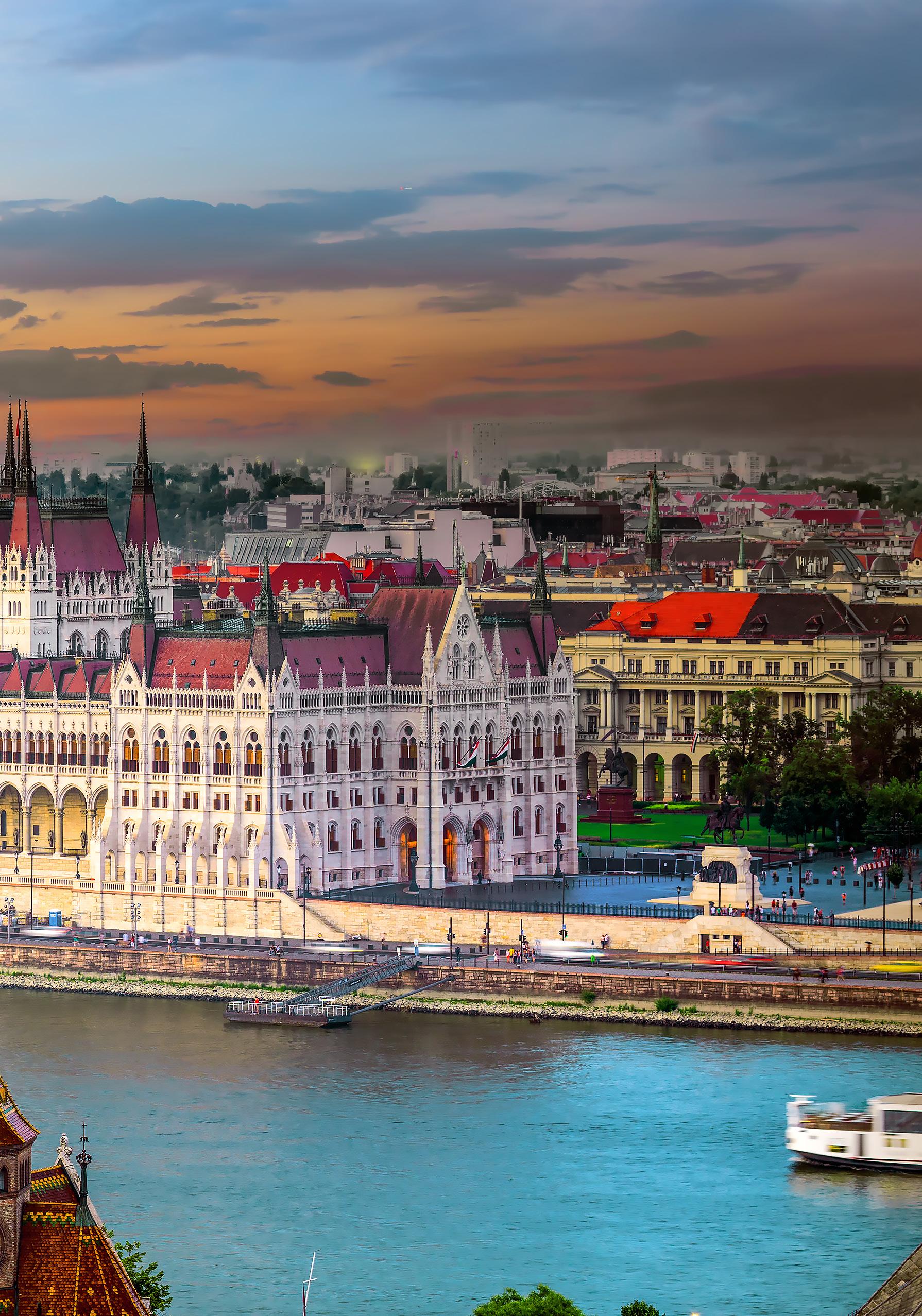
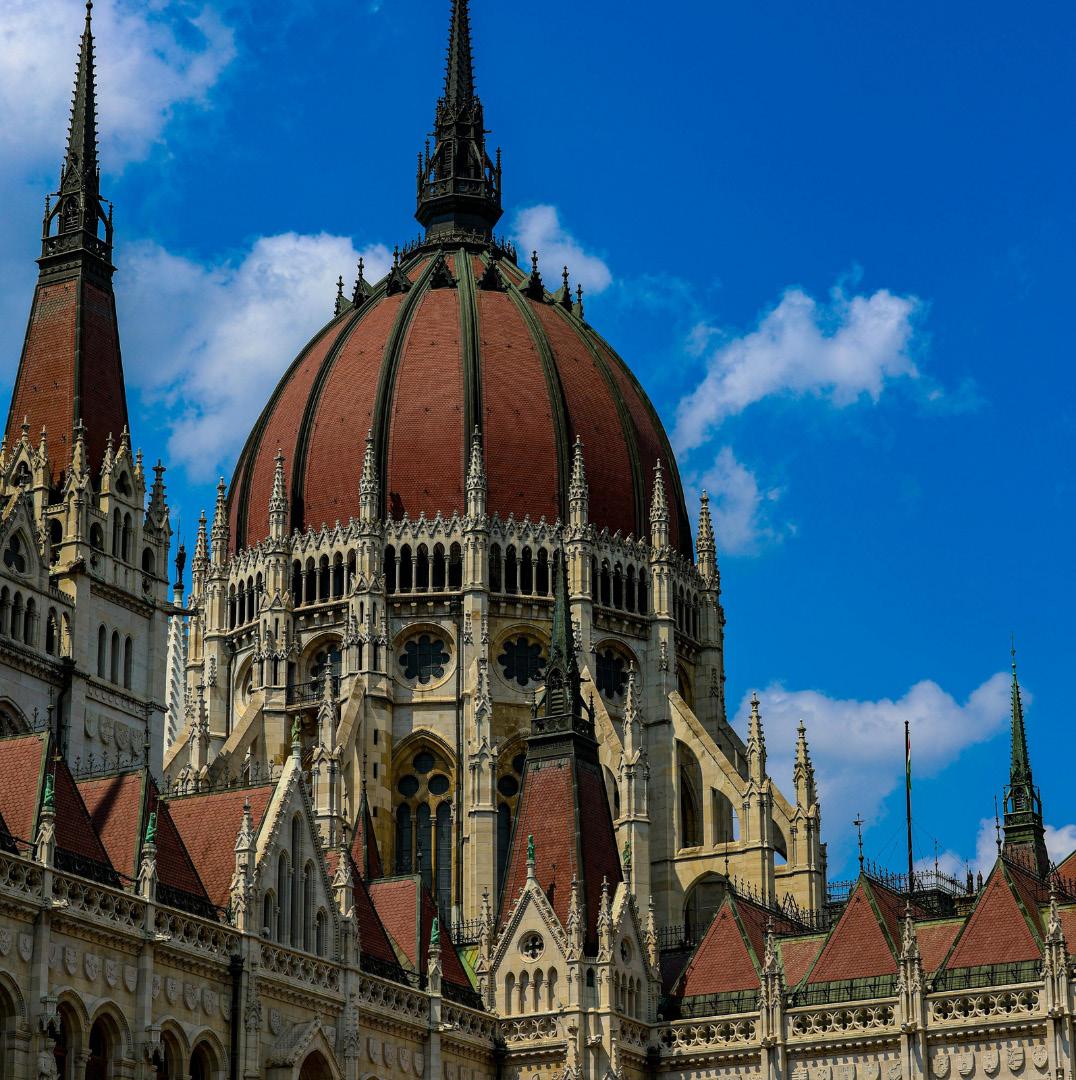
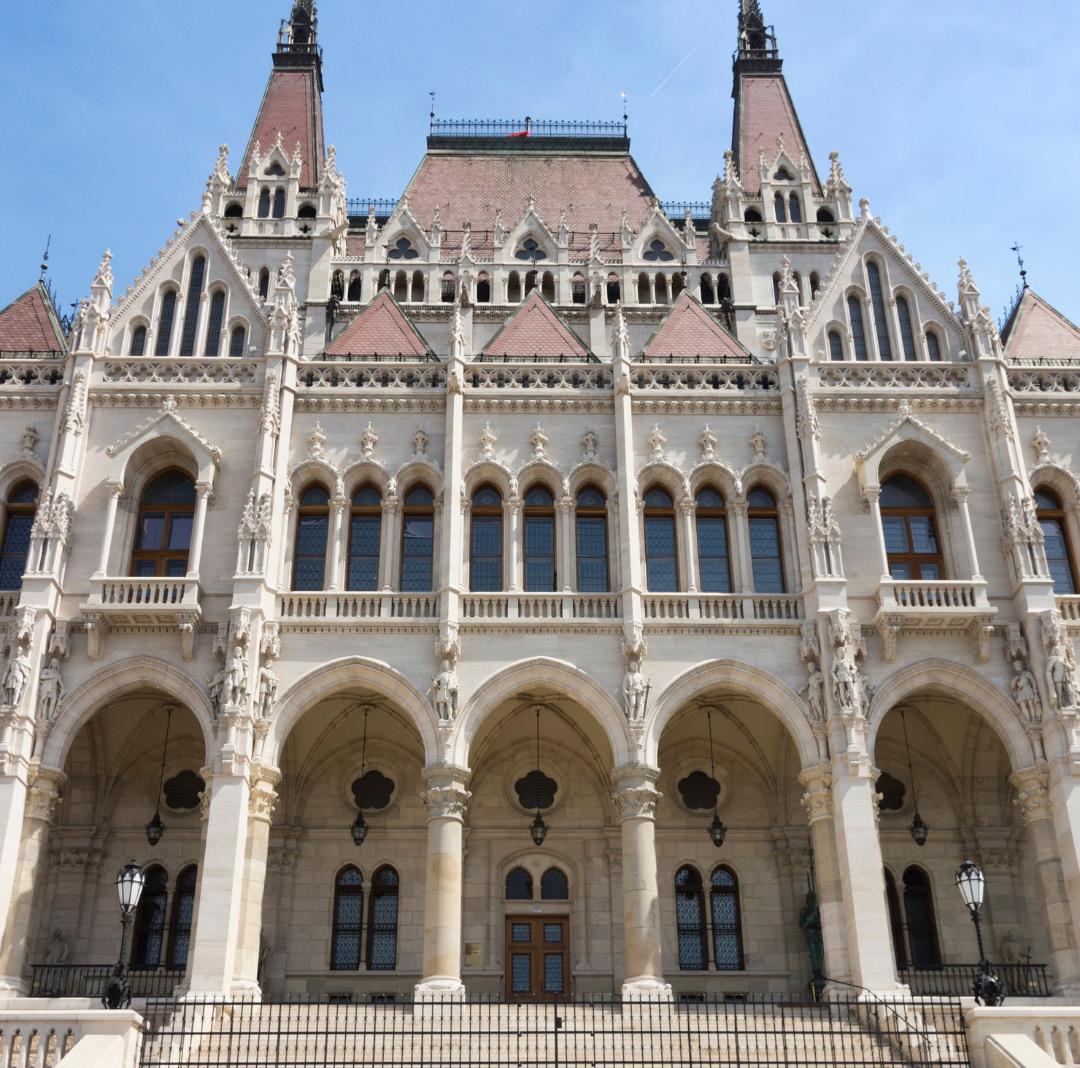
tall—a reference to the year 896, when the Magyars settled in the Carpathian Basin. Beneath the dome rests the Hungarian Holy Crown, a revered symbol of the nation’s sovereignty. Visitors can explore the Parliament through guided tours, which reveal opulent chambers, intricate stained glass windows, and a breathtaking view of the Danube. At night, the Parliament is illuminated, casting a golden reflection on the river and creating one of Budapest’s most photographed scenes. Beyond its beauty, the Parliament remains the seat of Hungary’s National Assembly, serving as a living institution of governance. It has endured through wars, revolutions, and political changes, standing as a testament to the resilience of the Hungarian people. Today, it is not only a political hub but also a must-see cultural and historical treasure for travelers worldwide.
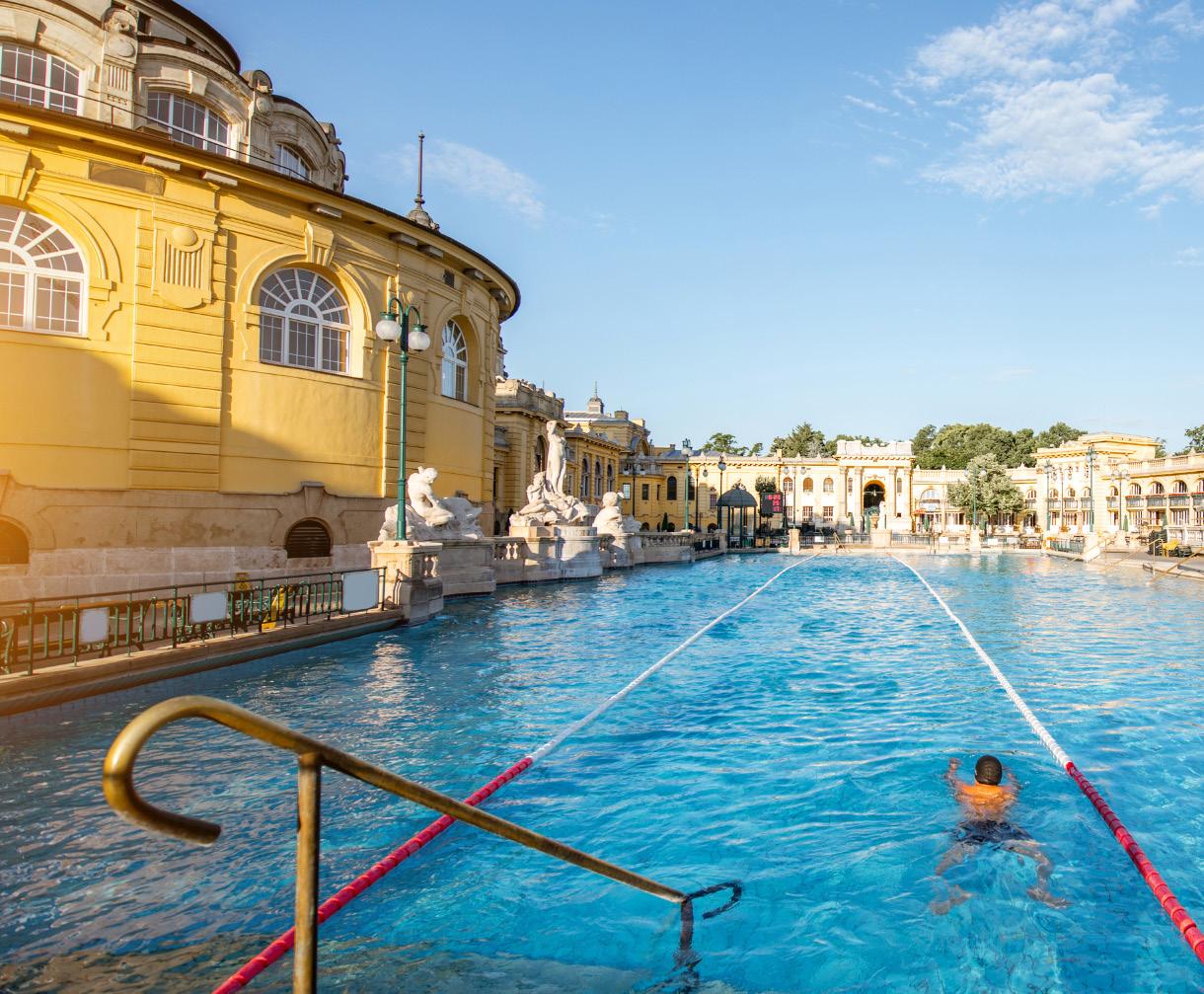
Széchenyi Thermal Bath, located in Budapest’s City Park, is one of Europe’s largest and most iconic spa complexes. Built in 1913 in a grand Neo-Baroque style, the bath is not only an architectural marvel but also a symbol of Hungary’s centuries-old bathing culture. Fed by two natural thermal springs, its waters are rich in minerals such as calcium, magnesium, and sulfate, reputed to aid joint problems, arthritis, and circulation issues. The complex features 18 pools, including indoor medicinal baths, saunas, and steam rooms, but its outdoor pools are its true highlight. Even in winter, locals and tourists alike soak in steaming waters surrounded by ornate yellow façades, often playing chess on floating boards—an image that has become synonymous with
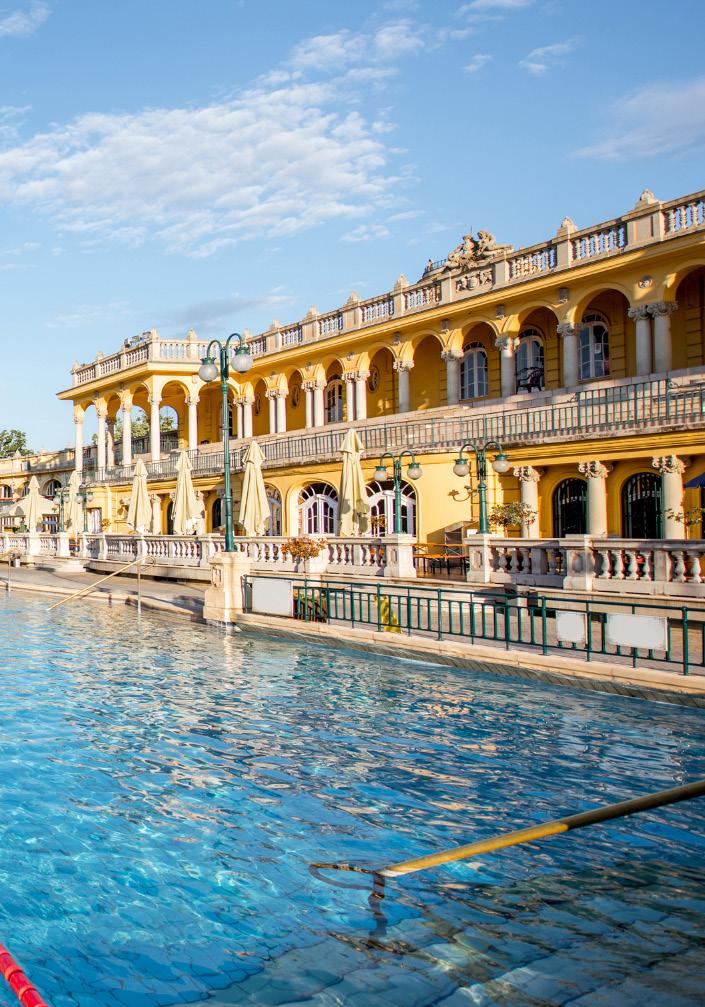
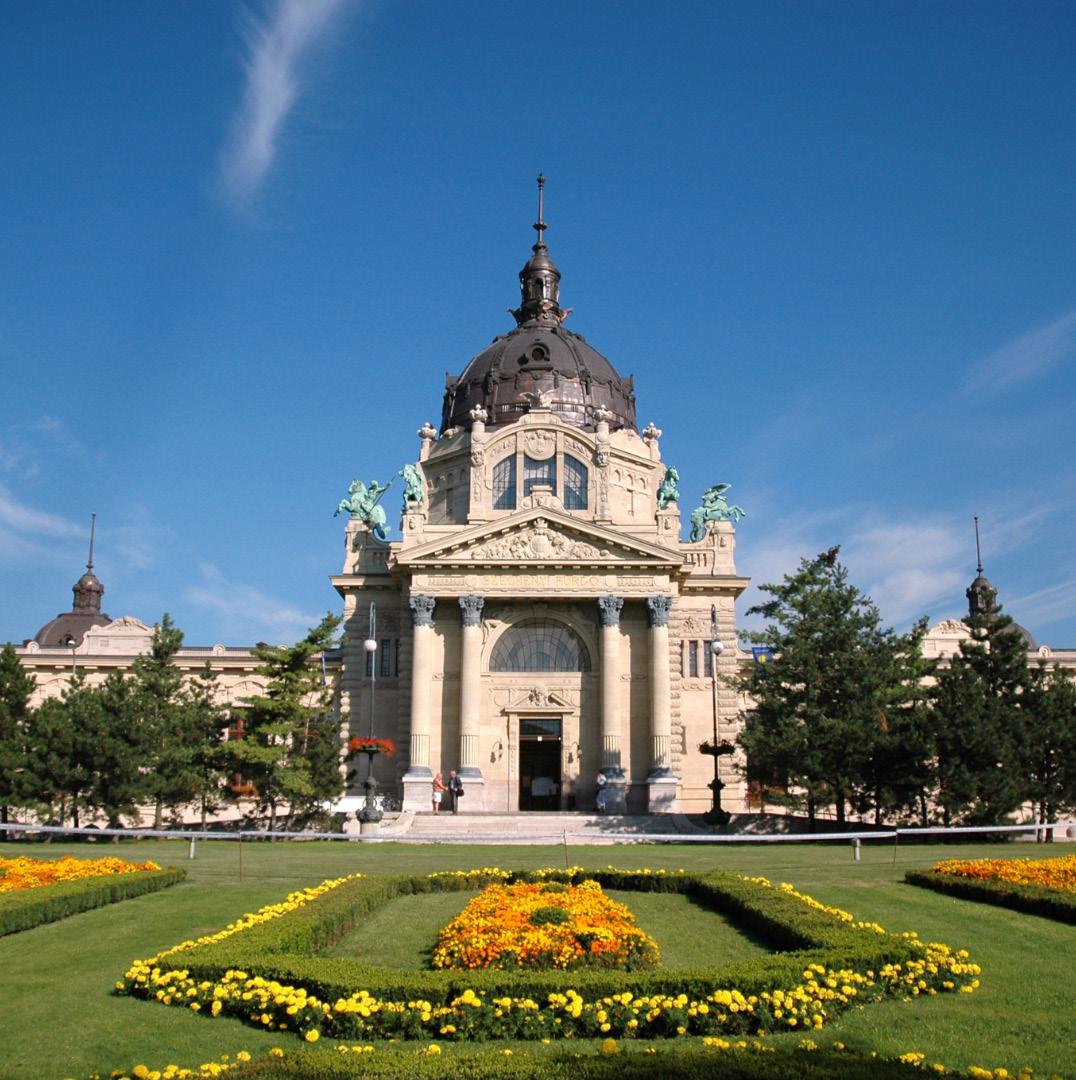
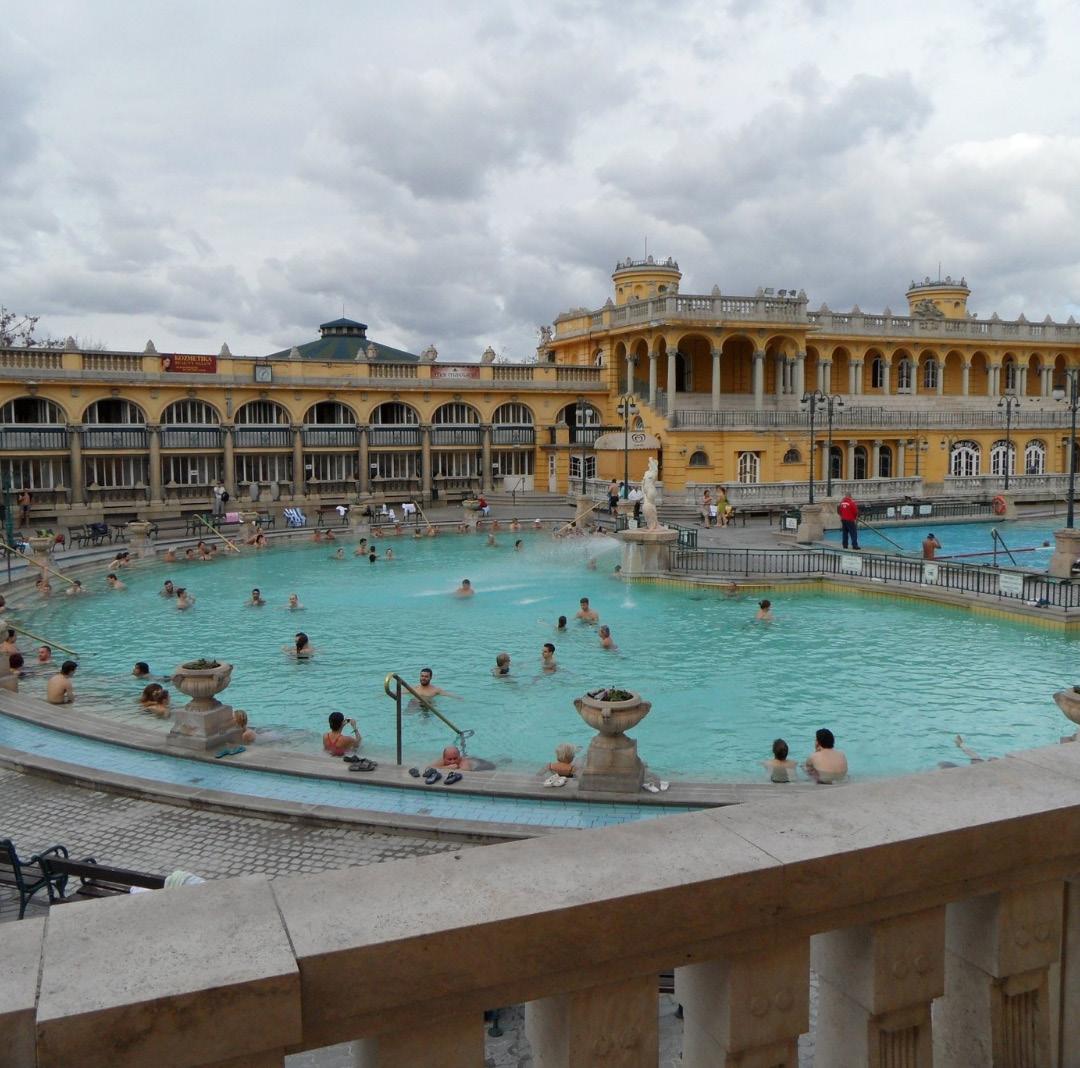
Budapest. Széchenyi offers more than relaxation; it’s a cultural experience. The baths are a meeting point for generations of Hungarians and an essential stop for visitors exploring the city’s spa heritage. Guests can book massages, enjoy aqua fitness, or simply unwind in the warm waters while admiring the stunning surroundings. Throughout the year, Széchenyi also hosts events such as “Sparty” nights, where DJs and light shows transform the historic spa into a lively party venue. Easily accessible by Budapest’s historic M1 metro line, Széchenyi Thermal Bath remains one of Hungary’s top attractions, blending health, leisure, and history. Whether for wellness, culture, or simply the novelty of soaking in thermal waters under the stars, a visit to Széchenyi is an unforgettable Budapest experience.
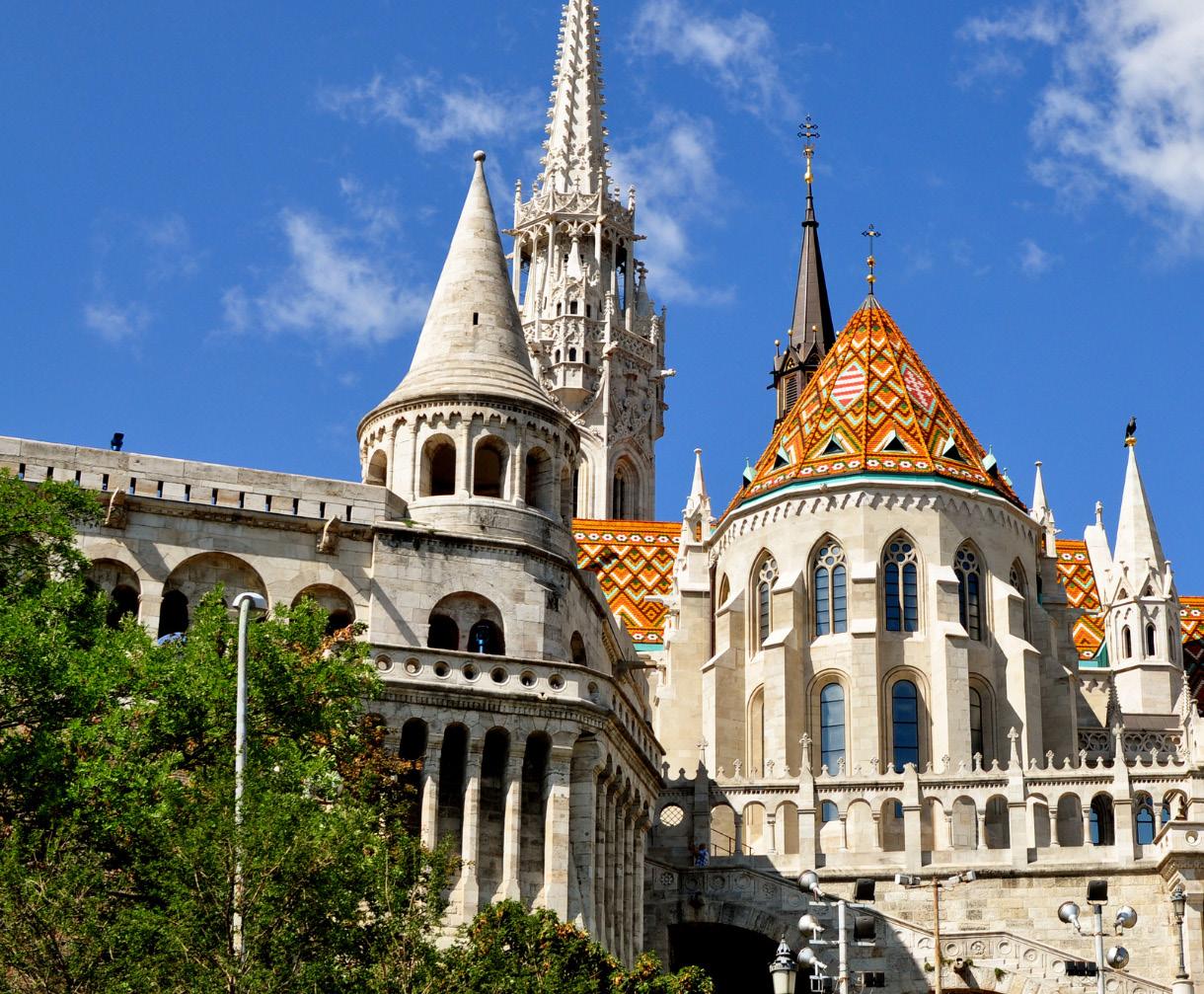
Fisherman’s Bastion (Halászbástya) is one of Budapest’s most iconic landmarks, perched high on Castle Hill in the Buda district, offering sweeping views over the Danube River and the Pest skyline. Built between 1895 and 1902, the structure was designed by architect Frigyes Schulek in a romantic, Neo-Romanesque style, featuring fairytale-like towers, turrets, and colonnades that make it look almost like something out of a storybook. The bastion was named in honor of the guild of fishermen who, according to tradition, were responsible for defending this section of the medieval city walls. Although it was never intended for military use, its design evokes the fortifications that once protected Buda. Its seven towers symbolize the seven Magyar
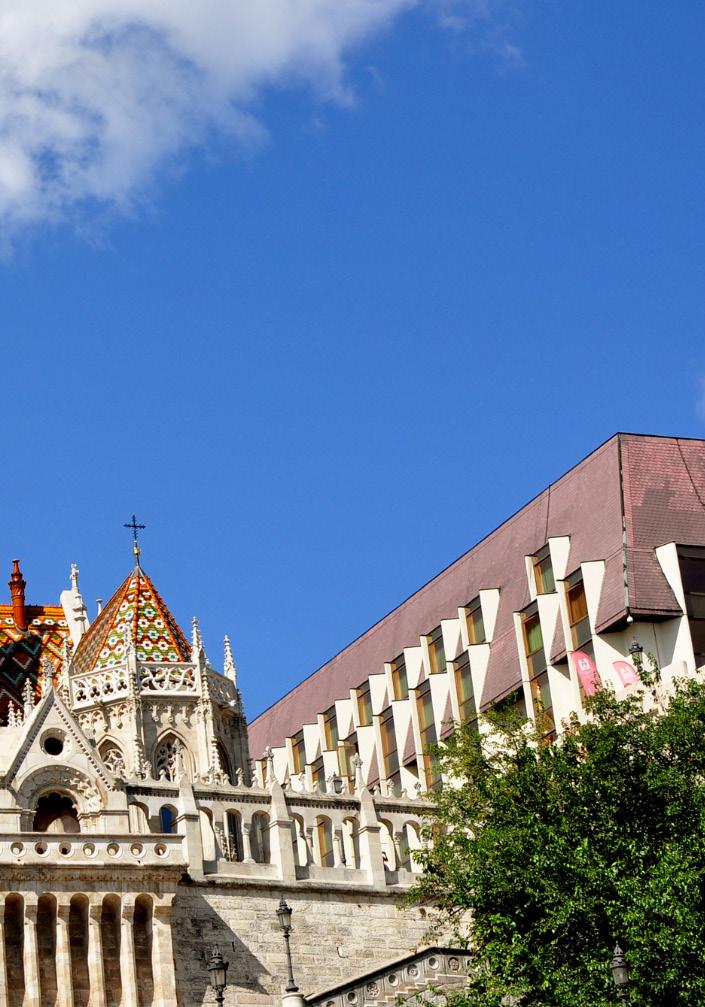
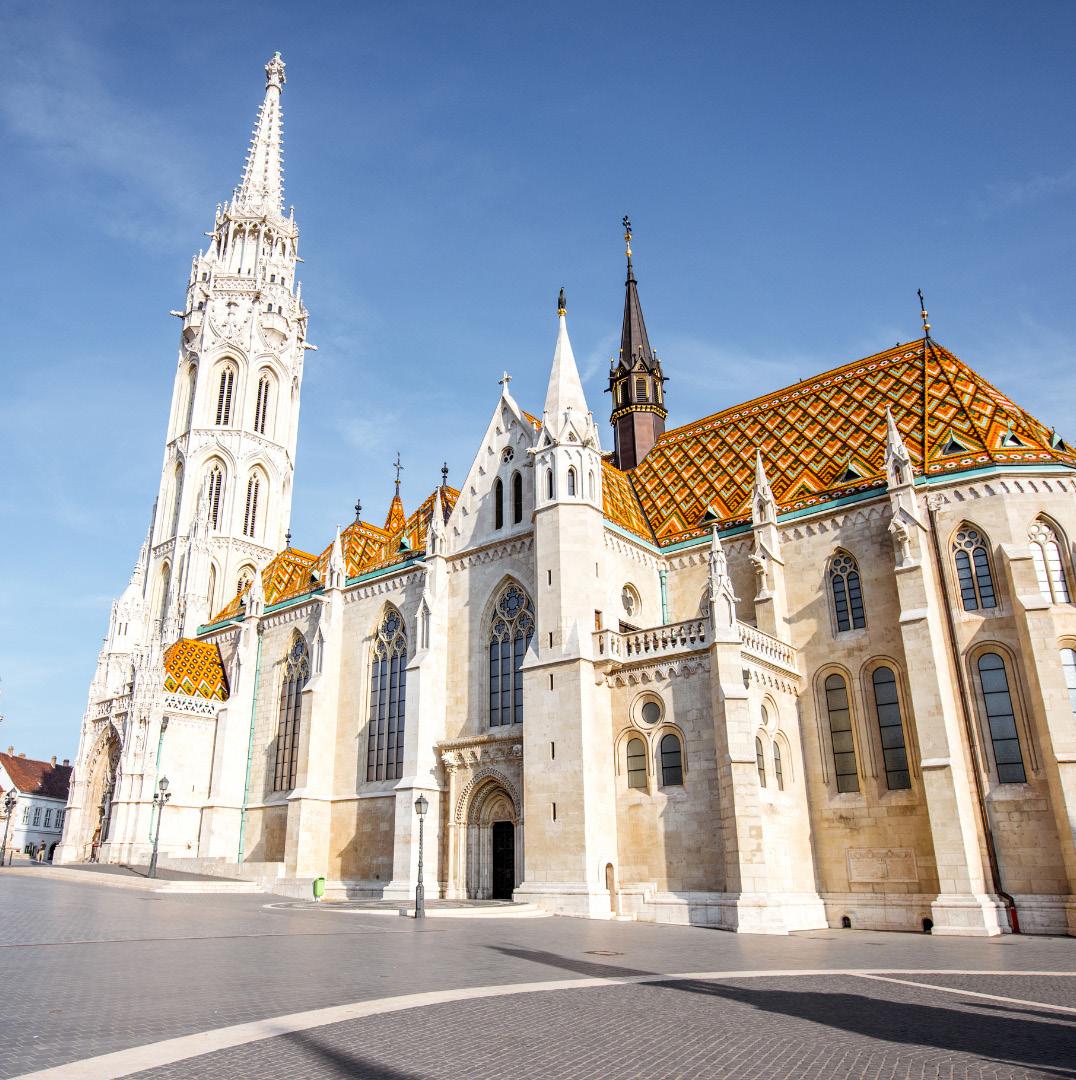
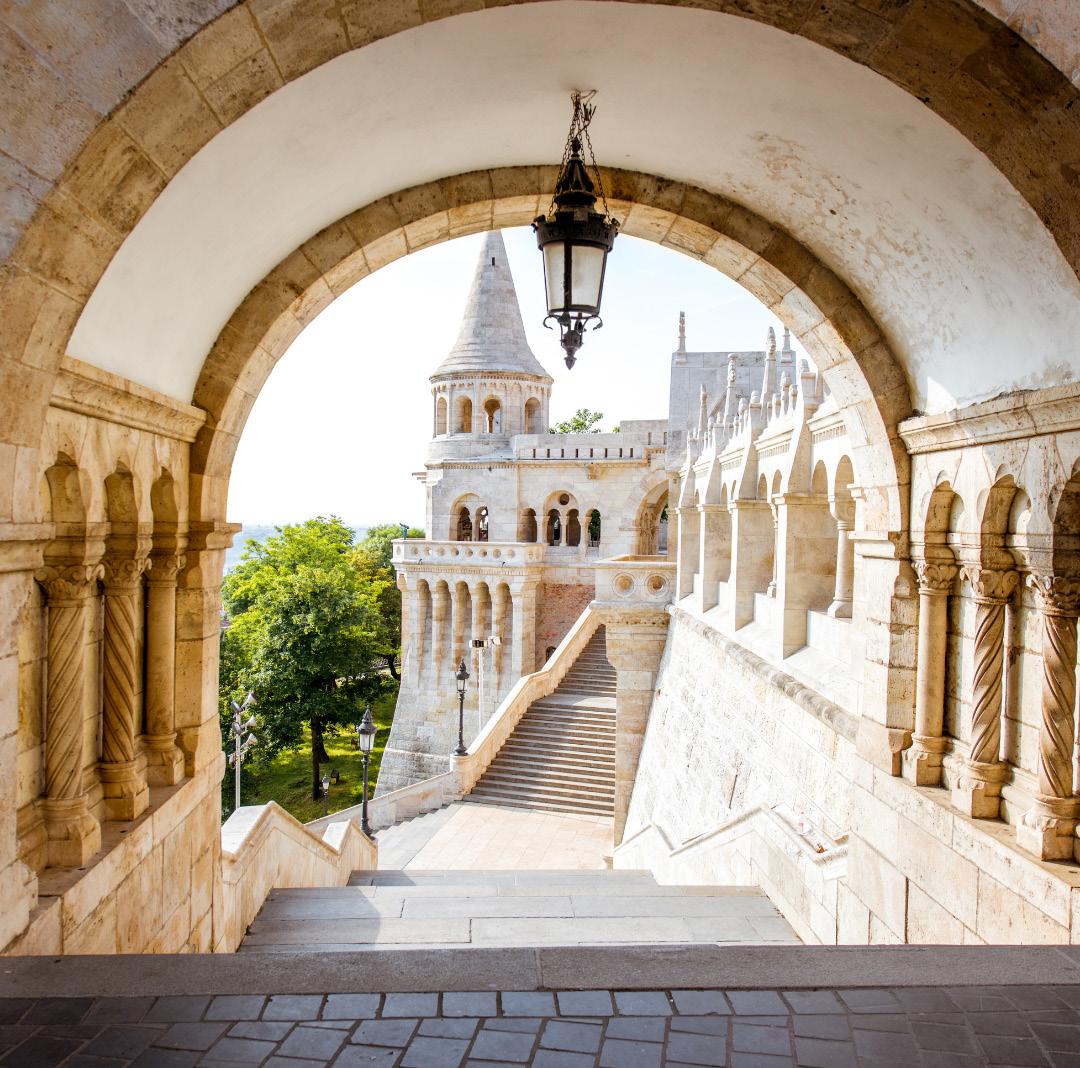
tribes that settled in the Carpathian Basin in 895, forming the foundation of modern Hungary. Today, Fisherman’s Bastion is one of Budapest’s most visited attractions, drawing tourists for both its architecture and panoramic views. From its terraces, visitors can admire the Hungarian Parliament Building, Margaret Island, and the sweeping curves of the Danube. Just beside the bastion stands the equally famous Matthias Church, a stunning Gothic structure that adds to the area’s historic charm. Entrance to the lower terraces is free, while a small fee applies to access the upper levels during peak tourist seasons. Whether you visit at sunrise for soft golden light or at night when the bastion is beautifully illuminated, Fisherman’s Bastion offers an unforgettable experience — a perfect blend of history, legend, and breathtaking scenery.
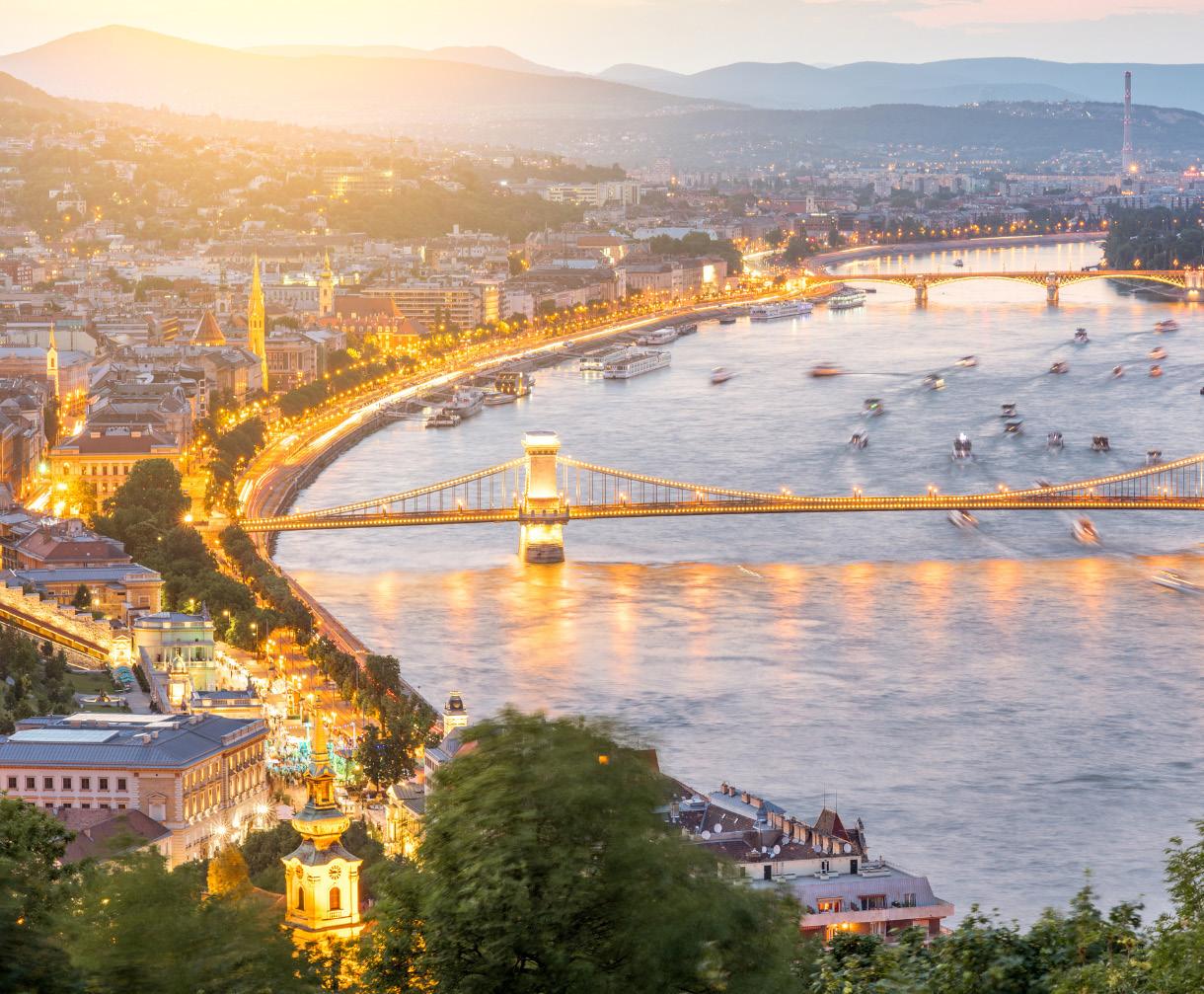
The **Danube River** is the heart and soul of Budapest, dividing the city into two distinct halves: historic Buda on the west bank and vibrant Pest on the east. Flowing through ten countries, the Danube is Europe’s second-longest river, but it is in Budapest that it reveals some of its most iconic views. From its banks, visitors can see grand landmarks such as the Hungarian Parliament Building, Buda Castle, and Gellért Hill, all beautifully illuminated at night, making a Danube river cruise one of the city’s most popular experiences. Spanning this legendary river is the **Széchenyi Chain Bridge**, one of Budapest’s most cherished symbols. Completed in 1849, it was the first permanent bridge to connect Buda and Pest, transforming the city’s development
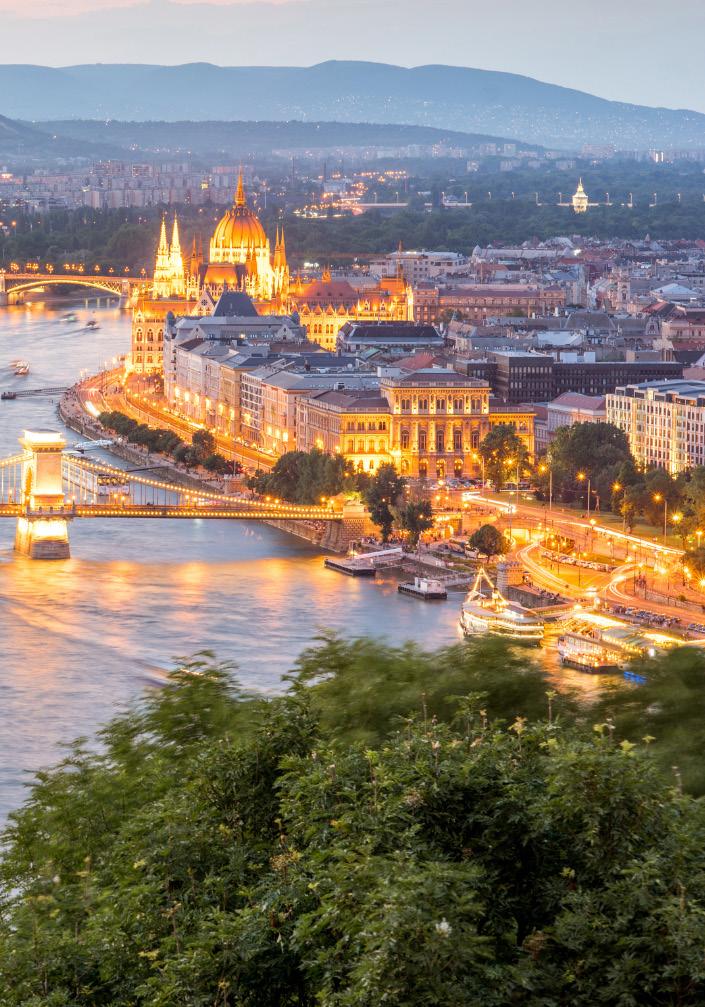
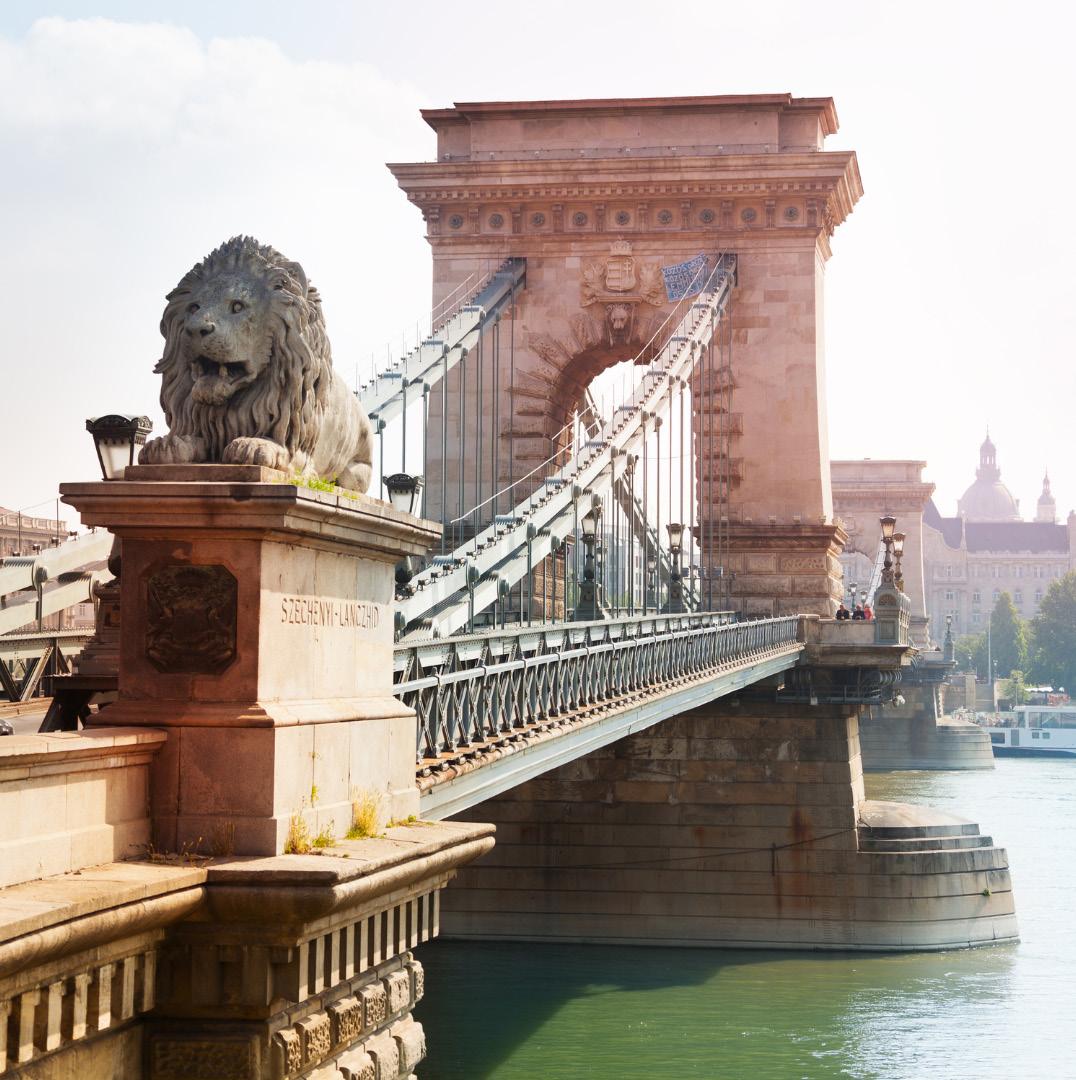
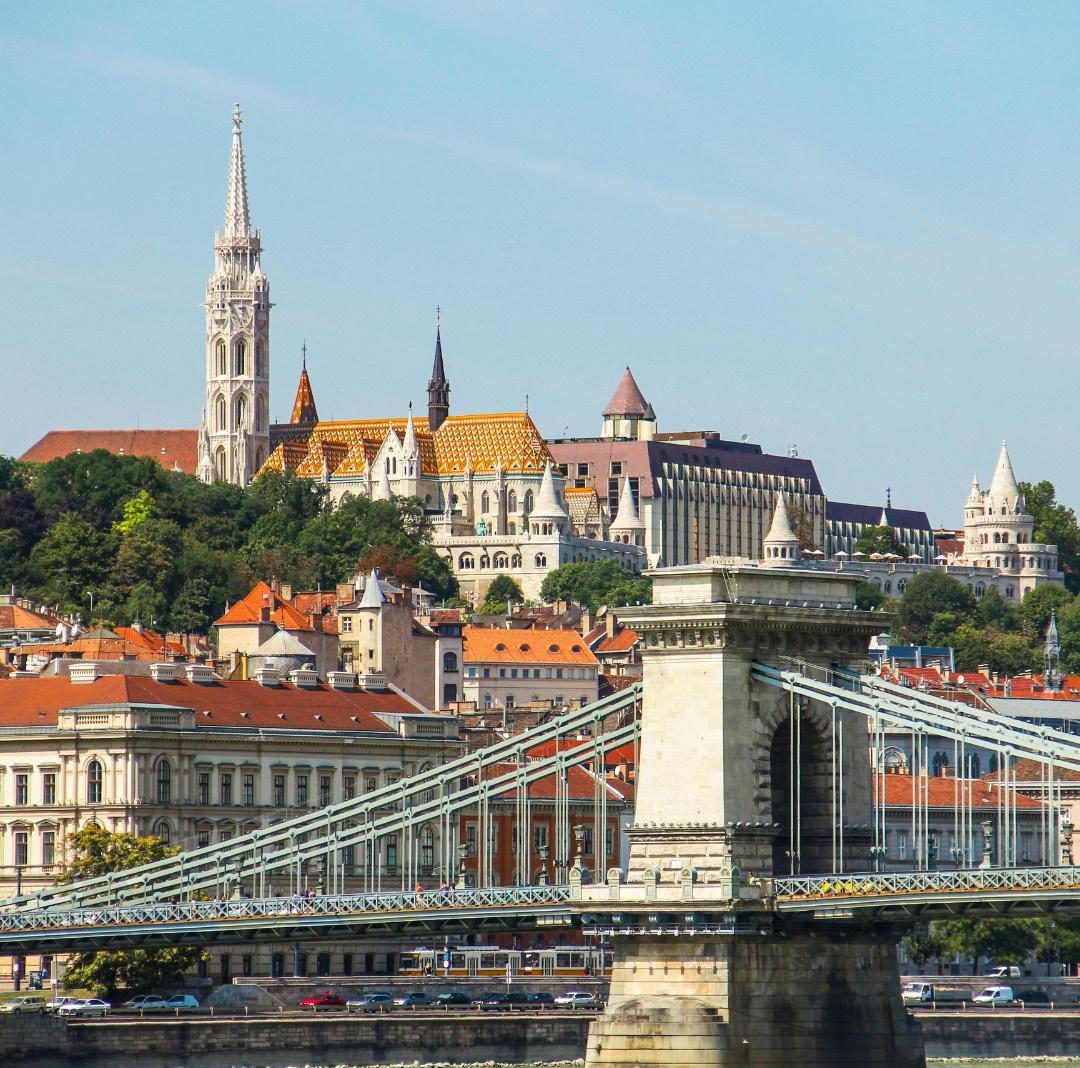
and unifying its identity. Designed by English engineer William Tierney Clark and constructed by Scottish engineer Adam Clark, the suspension bridge was a marvel of 19th-century engineering. Its massive stone lions, guarding each end, have become iconic in their own right. The Chain Bridge is more than just a practical crossing; it’s a cultural emblem that has witnessed revolutions, wars, and reconstructions. Severely damaged during World War II, it was rebuilt and reopened in 1949, exactly 100 years after its original completion. Today, it’s a favorite spot for photographers, offering stunning vistas along the Danube, especially at sunrise and sunset. Together, the Danube River and the Chain Bridge capture the essence of Budapest—a city where history, beauty, and resilience converge.
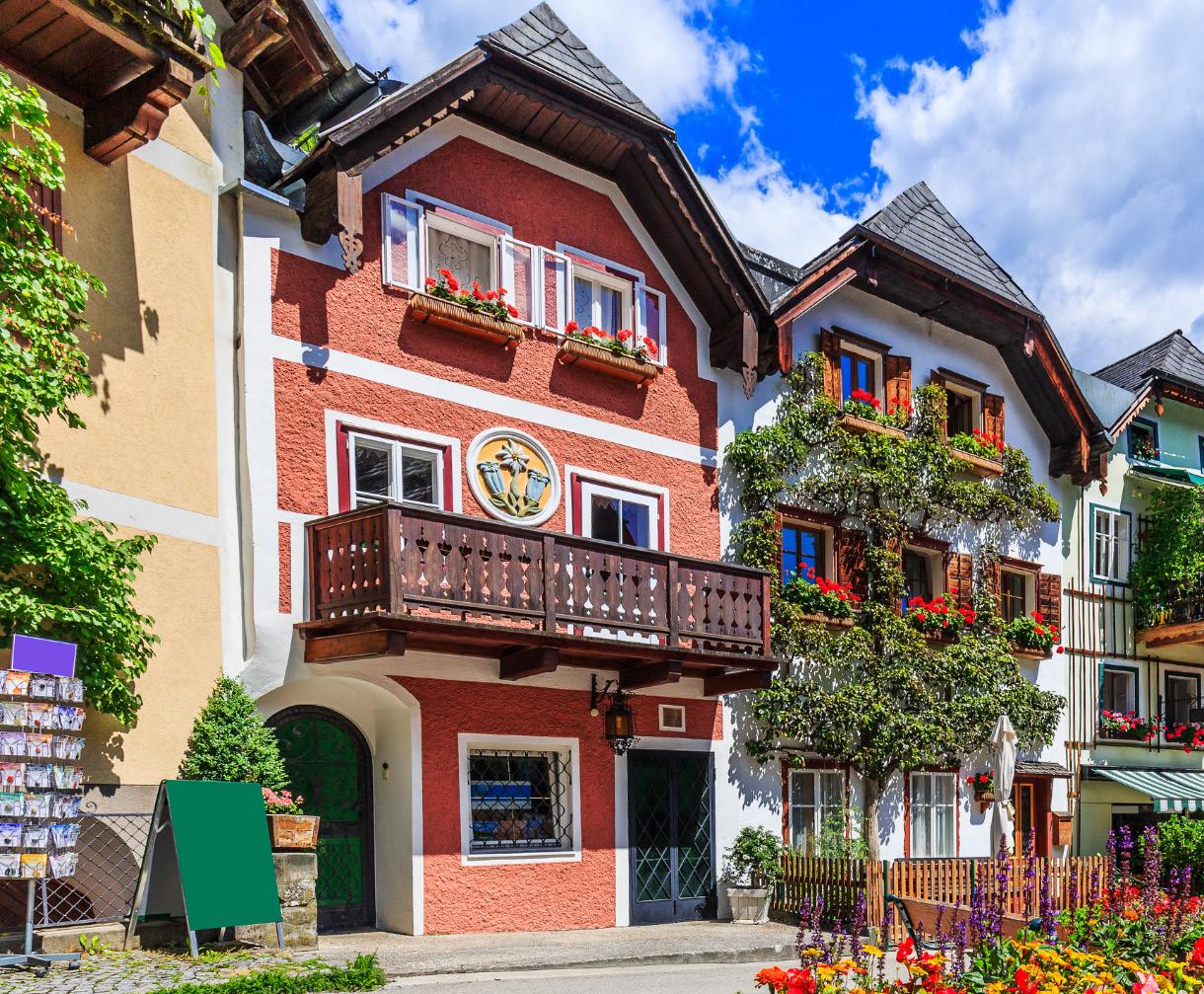
Austria is a captivating destination for travelers seeking a blend of history, culture, and natural splendor. Nestled in the heart of Europe, this landlocked country is famed for its majestic Alpine scenery, charming cities, and rich traditions. Visitors are often drawn to Vienna, the elegant capital, where imperial grandeur meets vibrant modern life. The city’s opulent palaces, such as Schönbrunn and the Hofburg, reflect centuries of Habsburg rule, while landmarks like St. Stephen’s Cathedral and the Vienna State Opera showcase its enduring artistic heritage. Beyond Vienna, Salzburg enchants with its baroque architecture, cobblestone streets, and ties to Wolfgang Amadeus Mozart. Fans of *The Sound of Music* will recognize many filming locations, adding a whimsical touch to their explorations. Austria’s smaller towns, such as Hallstatt, look
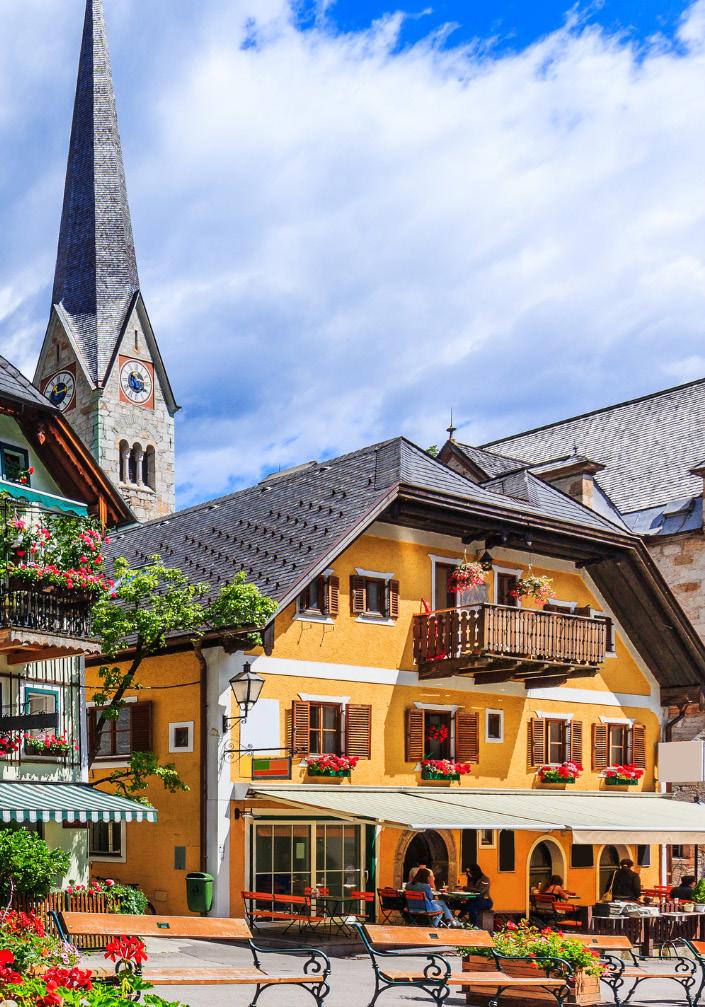
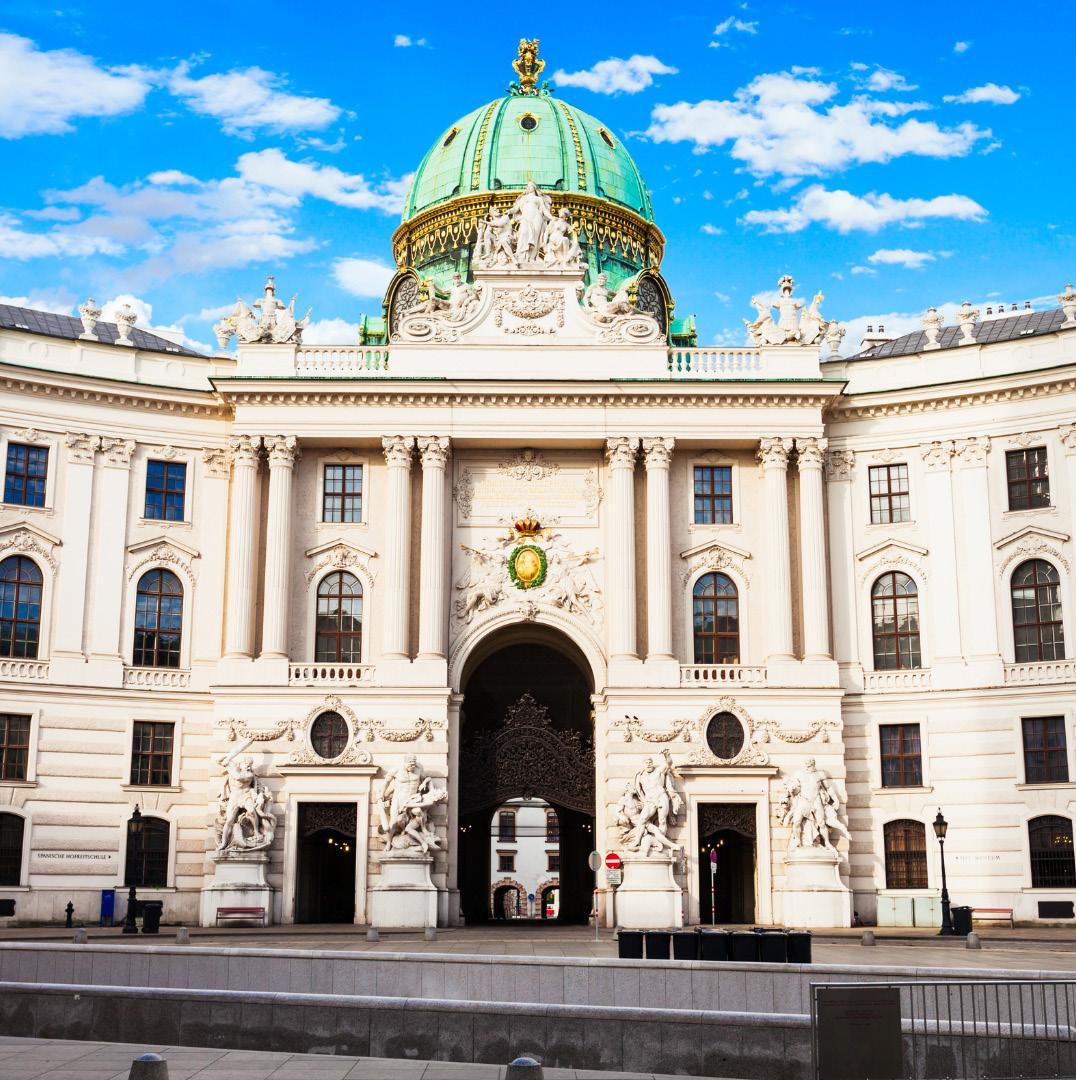
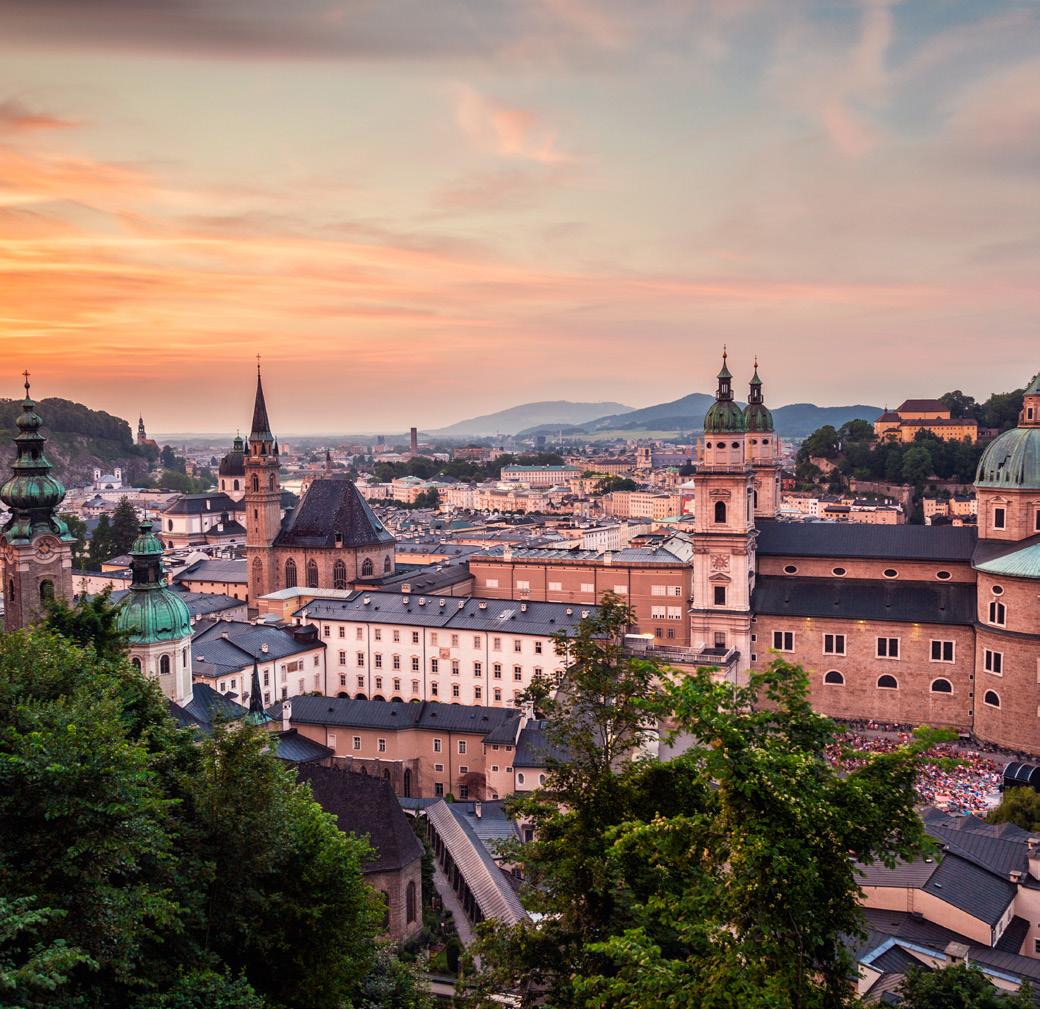
like storybook villages, perched on lakesides with dramatic mountain backdrops, offering some of the most photographed views in the world. For outdoor enthusiasts, Austria’s landscapes are a paradise. The Austrian Alps provide world-class skiing in winter and hiking, cycling, and climbing in summer. Lakes like Wolfgangsee and Zell am See offer serene escapes, while scenic routes like the Grossglockner High Alpine Road reveal breathtaking panoramas. Austria’s culture is equally enticing, with traditions rooted in classical music, coffeehouse gatherings, and hearty cuisine. Savoring dishes like schnitzel or apple strudel feels like an experience in itself. Whether you’re seeking history, natural beauty, or cultural immersion, Austria delivers an unforgettable journey that captures the essence of Europe at its most elegant.
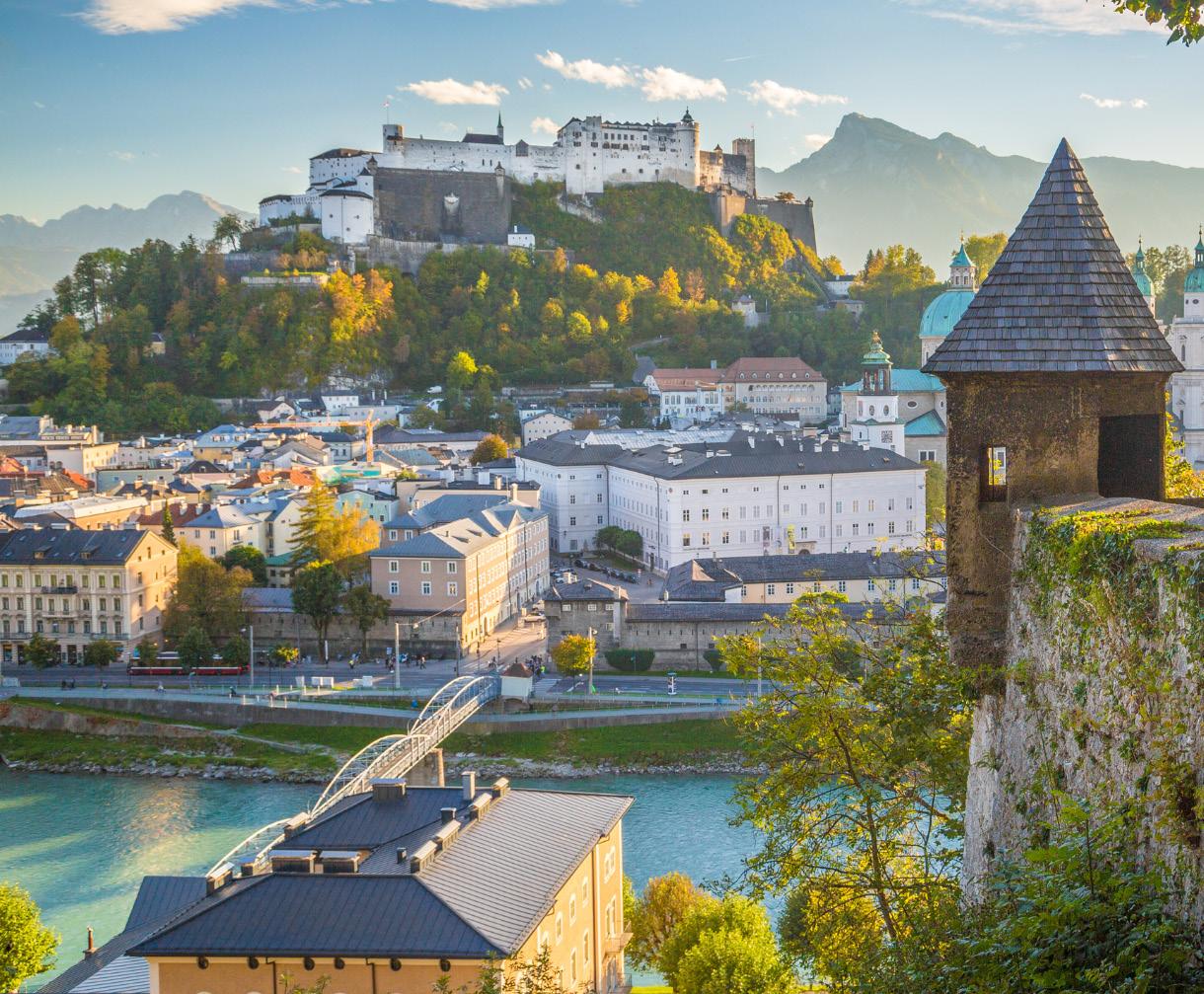
Salzburg’s Altstadt (Old Town) and the Hohensalzburg Fortress together form one of Europe’s most enchanting cultural destinations, blending baroque beauty, medieval history, and musical heritage. The Altstadt a UNESCO World Heritage Site, is a maze of narrow, cobbled streets lined with pastel-colored townhouses, ornate churches, and charming squares. Visitors can stroll along Getreidegasse Salzburg’s most famous shopping street, known for its wrought-iron guild signs and as the birthplace of Wolfgang Amadeus Mozart. The Old Town is dotted with landmarks like the Salzburg Cathedral a stunning baroque masterpiece, and Residenzplatz, where fountains and archways frame the square’s lively atmosphere. Cafés invite you to linger over coffee and a slice of Sachertorte while traditional markets showcase local
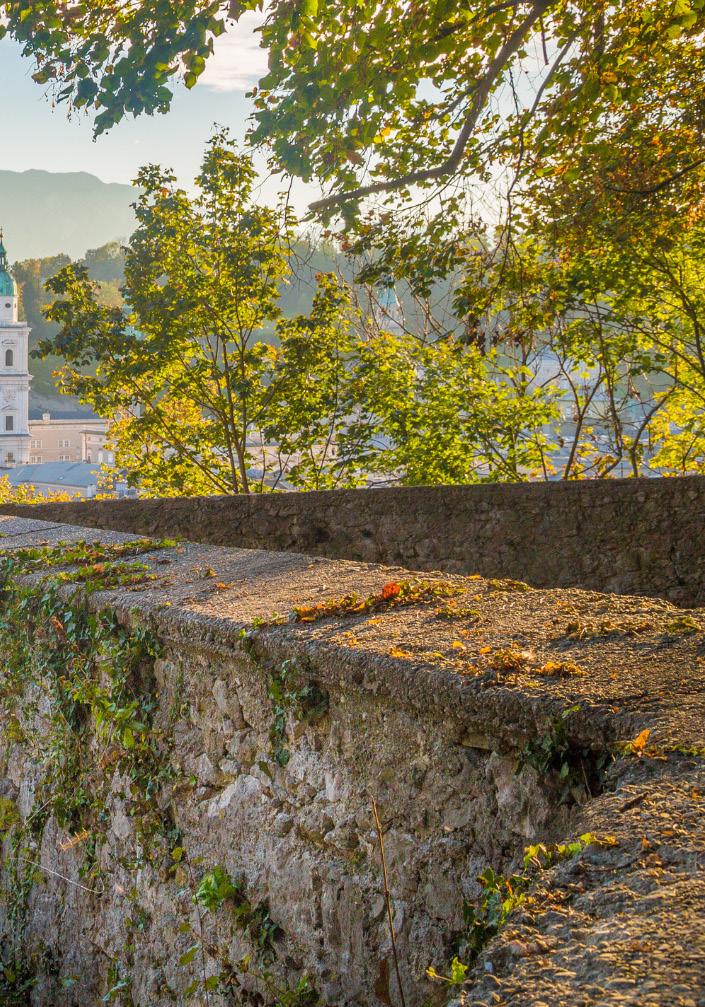
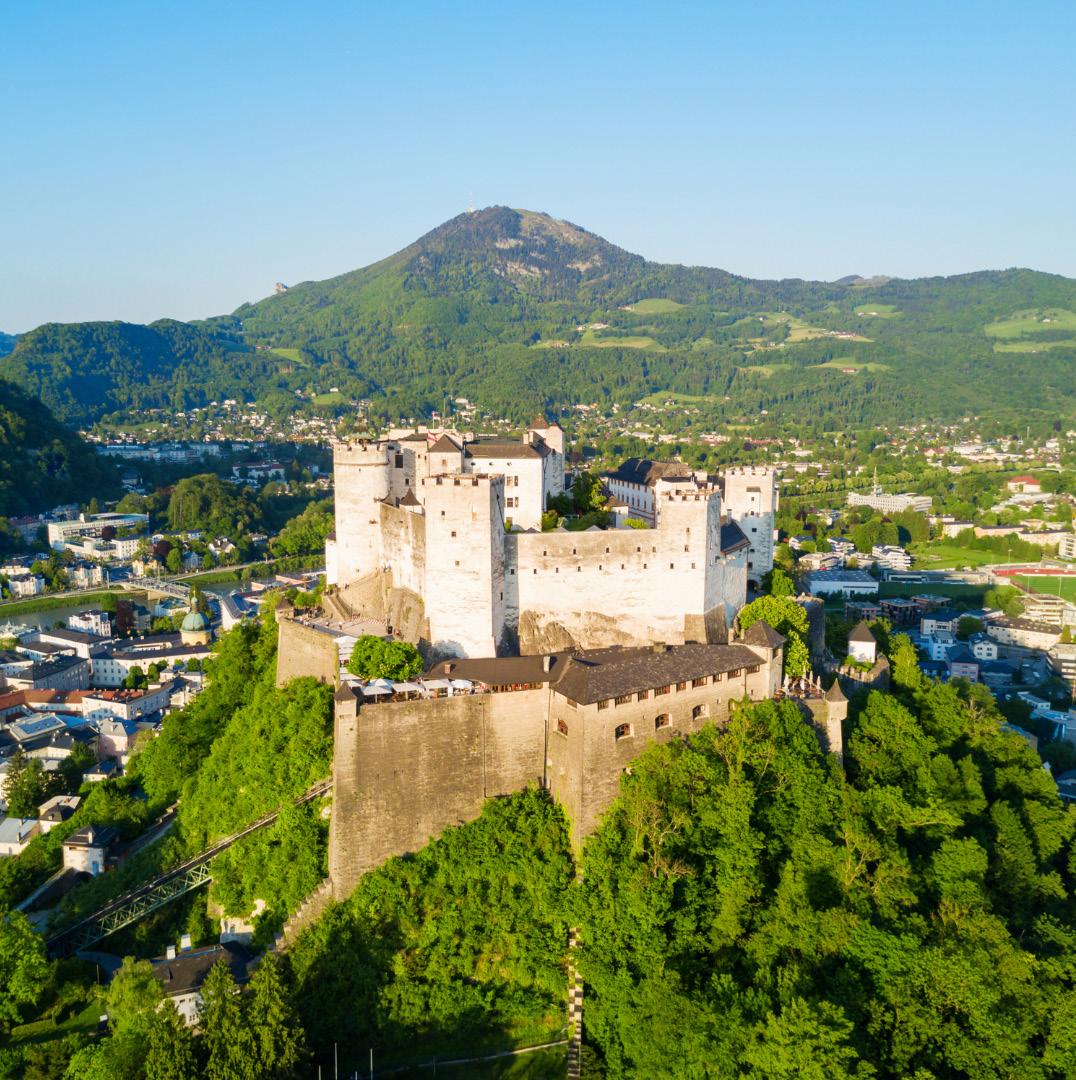
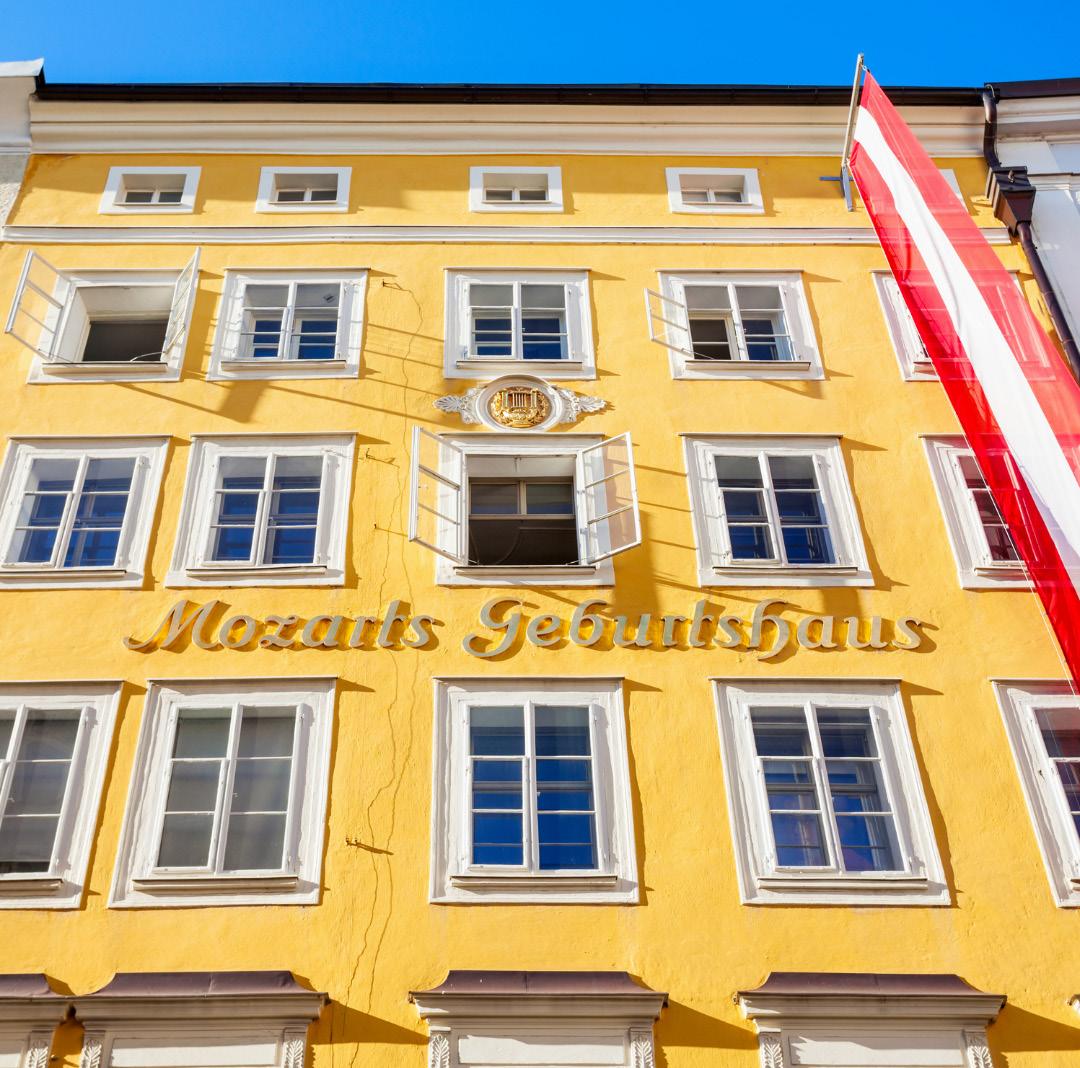
crafts and produce. Towering above the city is the Hohensalzburg Fortress, one of Europe’s largest and best-preserved medieval castles. Built in 1077 and expanded over centuries, it dominates Salzburg’s skyline and offers breathtaking panoramic views of the city, river, and Alps. Visitors can explore its grand courtyards, Gothic chapels, and the Fortress Museum, which reveals stories of Salzburg’s archbishops and the fortress’s role in defending the region. Together, the Altstadt and Hohensalzburg Fortress offer a vivid journey through time, from Salzburg’s baroque splendor to its medieval might. Whether you’re drawn by Mozart’s legacy, the atmospheric streets, or the commanding castle on the hill, this area captures the essence of Salzburg and remains one of Austria’s most unforgettable destinations for travelers.
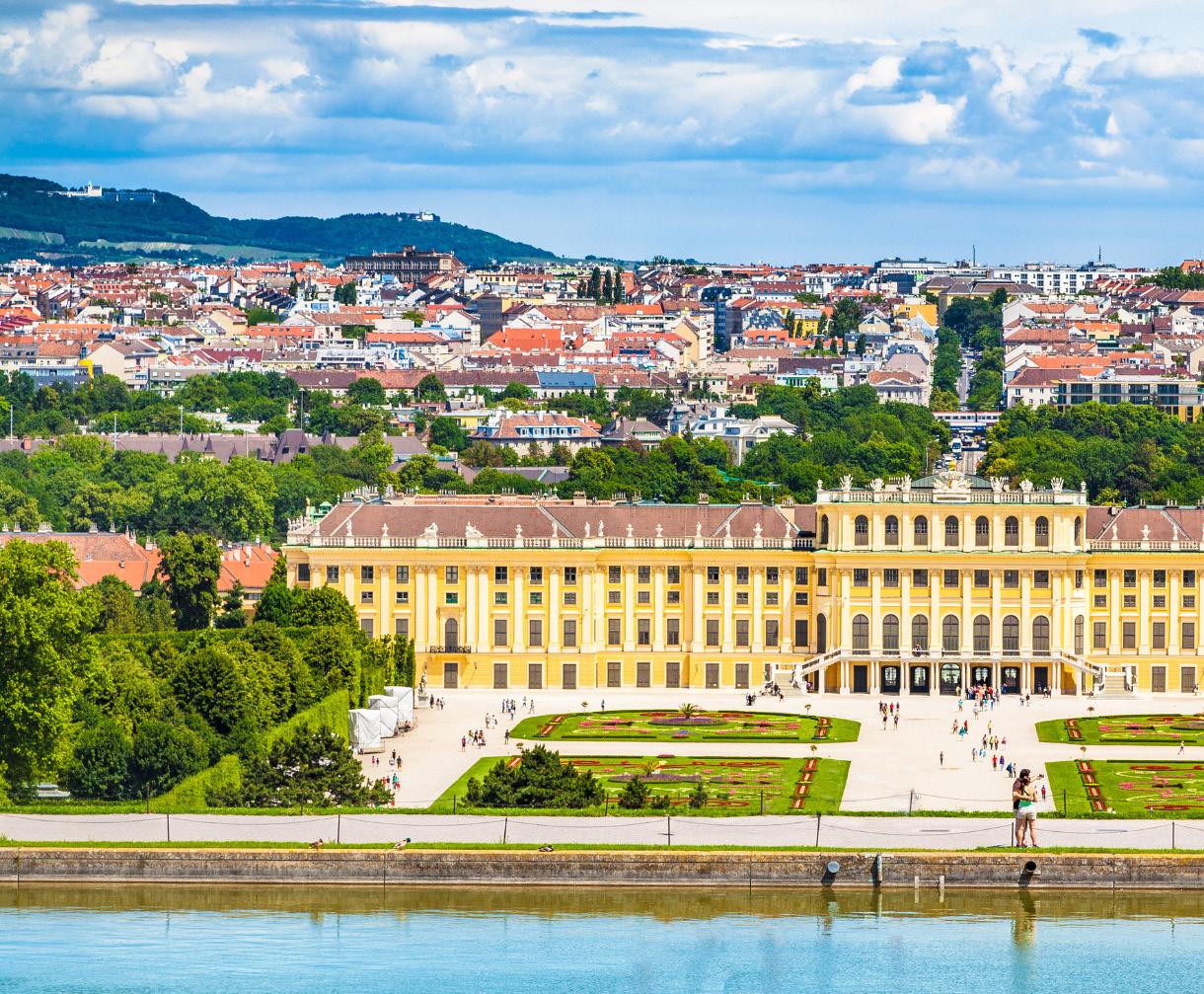
Schönbrunn Palace, located in Vienna, Austria, is one of Europe’s most stunning and historically significant landmarks. A UNESCO World Heritage Site, it was the summer residence of the powerful Habsburg dynasty for over 300 years. Built in the Baroque style, the palace boasts more than 1,400 rooms, though only a select few are open to the public. These include the opulent Great Gallery, where imperial banquets and balls once took place, and the intimate rooms of Empress Maria Theresa, one of Austria’s most influential rulers. Beyond its lavish interiors, Schönbrunn is renowned for its expansive gardens, which stretch across 435 acres. Visitors can wander through perfectly manicured lawns, ornate fountains, and winding pathways, or climb the hill to the Gloriette, a grand structure offering panoramic views over Vienna. The palace
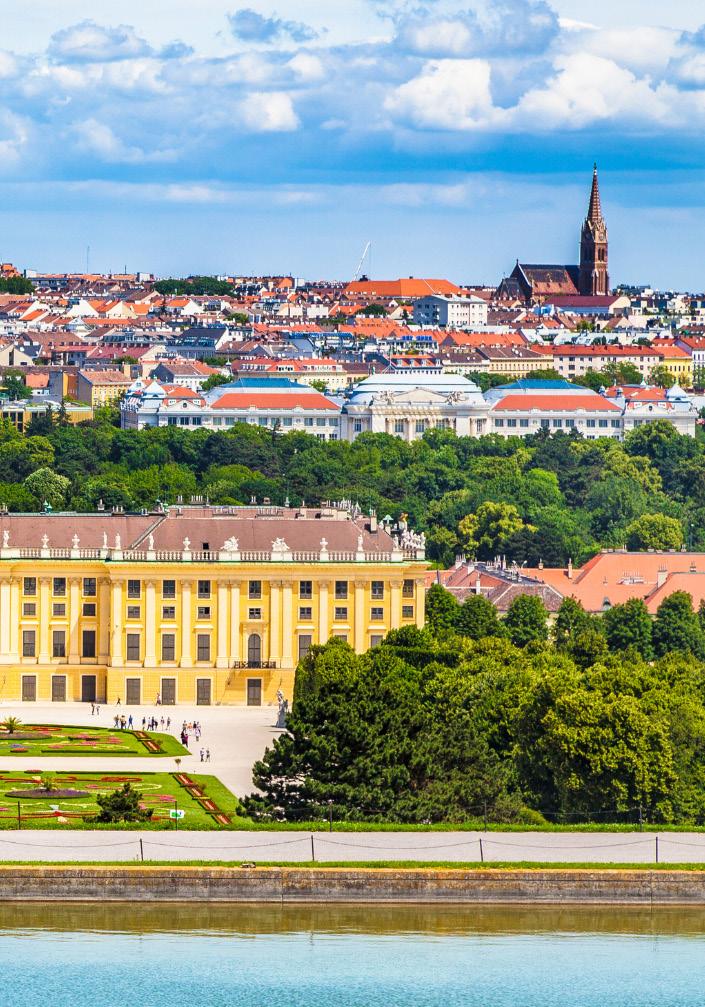
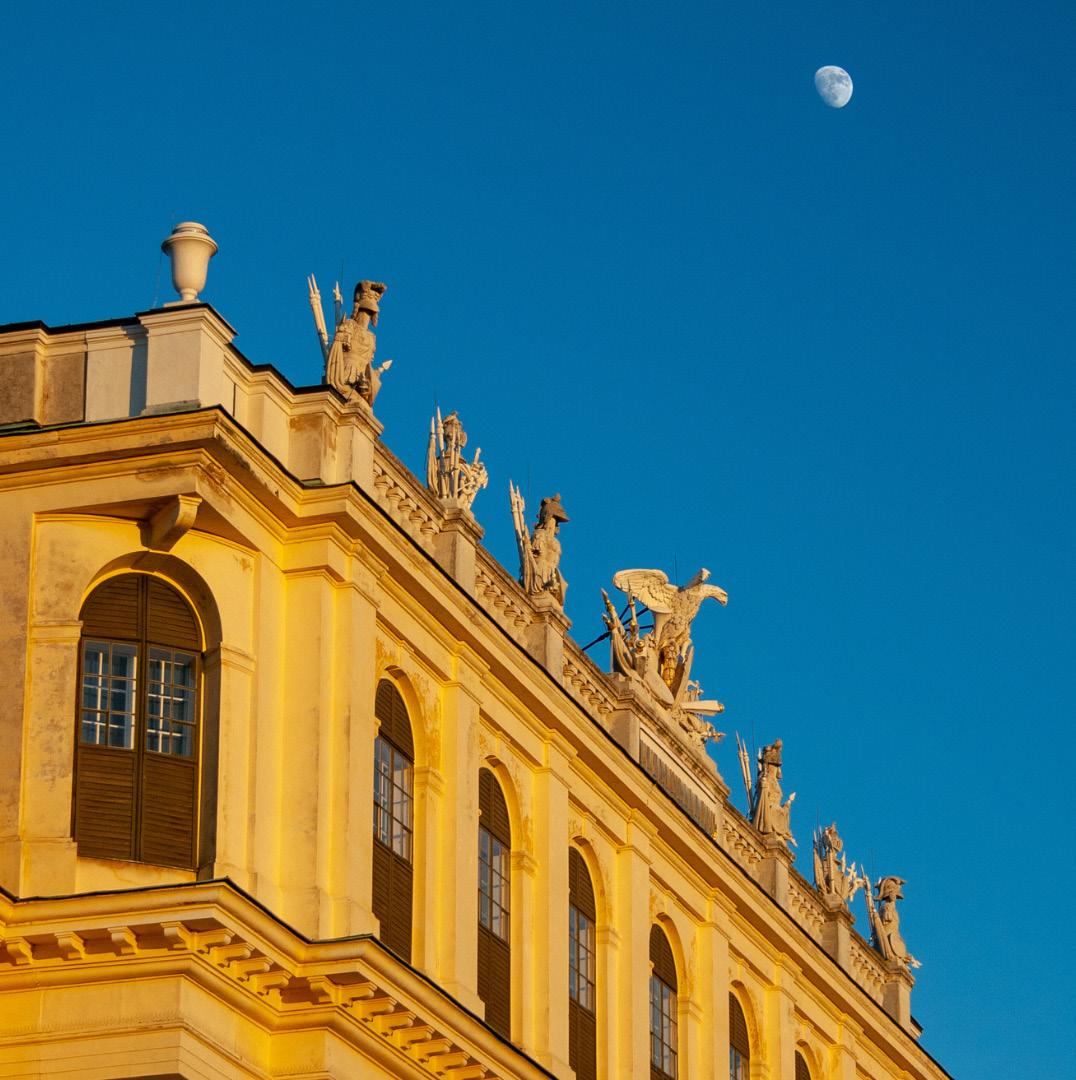
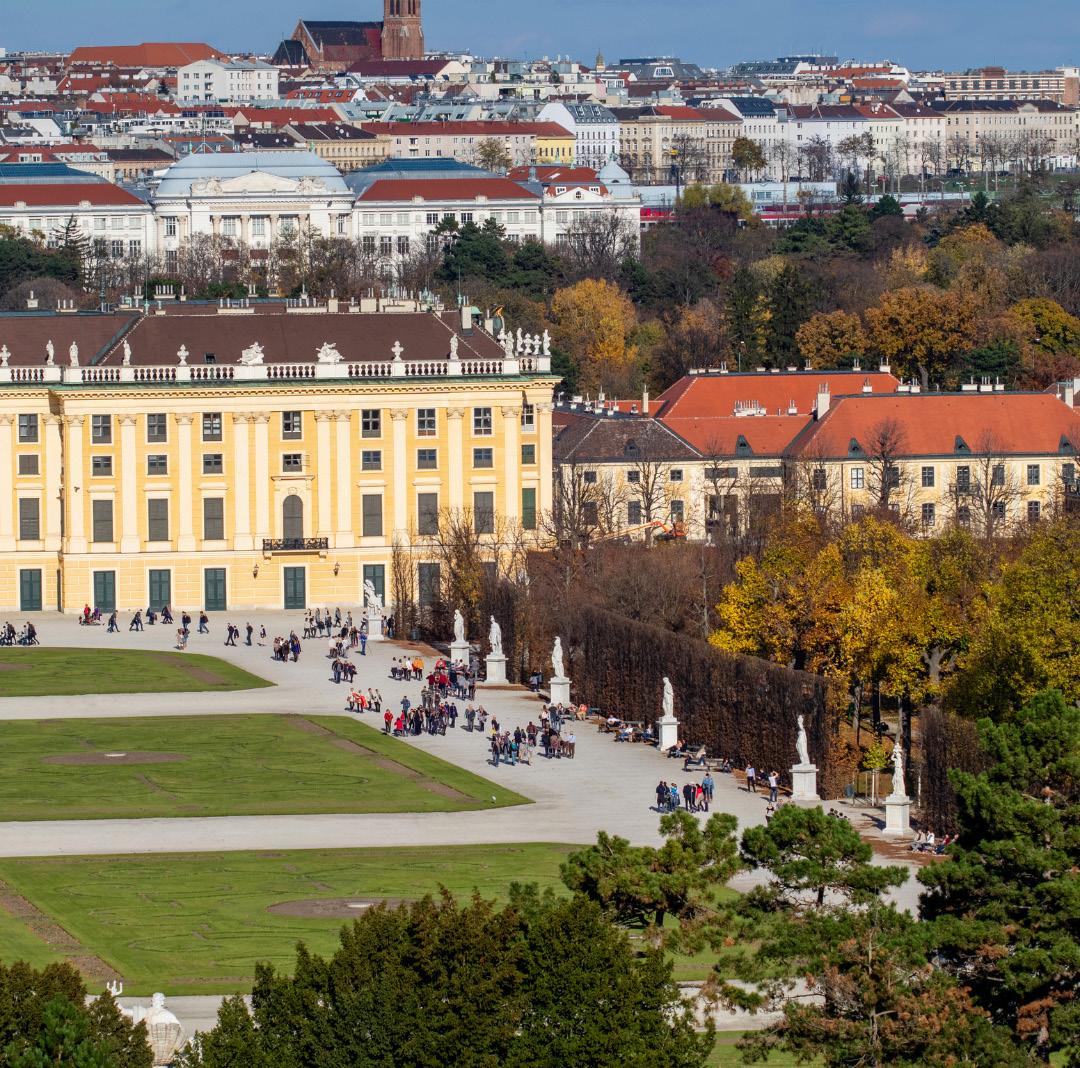
grounds are also home to the world’s oldest zoo, Tiergarten Schönbrunn, founded in 1752, making it an attraction in its own right. Schönbrunn is not just a historical site but a living window into Austria’s imperial past. Walking its halls evokes stories of royal life, from formal court ceremonies to private family moments of the Habsburgs. The palace also hosts concerts and cultural events, ensuring it remains vibrant and relevant today. Whether you’re drawn by its architecture, its history, or the beauty of its gardens, Schönbrunn Palace offers an unforgettable experience that captures the elegance and power of Austria’s imperial heritage—making it a must-see for anyone visiting Vienna.
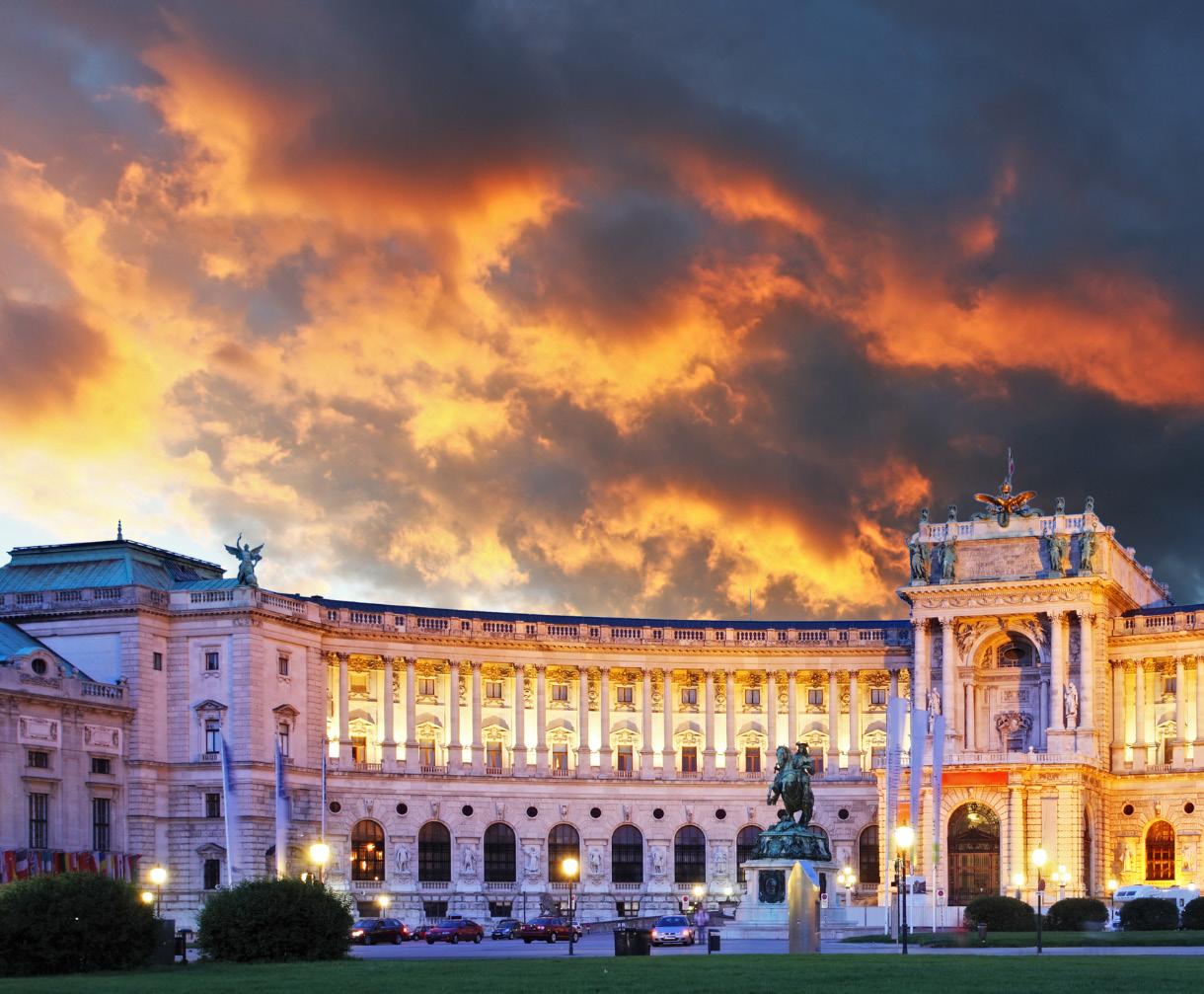
The Hofburg Palace in Vienna is one of Austria’s most iconic landmarks and a mustvisit for travelers interested in imperial history and grandeur. Once the political and cultural heart of the Habsburg Empire, the palace complex has been the seat of power for more than 700 years. Today, it serves as the official residence and workplace of the President of Austria, while welcoming millions of visitors eager to step into the country’s royal past. The Hofburg is not a single building, but a sprawling ensemble of wings, courtyards, and squares, reflecting architectural styles from Gothic to Renaissance, Baroque, and Neoclassical. Its opulent halls and chambers reveal the luxury of Habsburg life, most famously through the Imperial Apartments, where visitors can explore lavishly decorated rooms once used by Emperor Franz Joseph
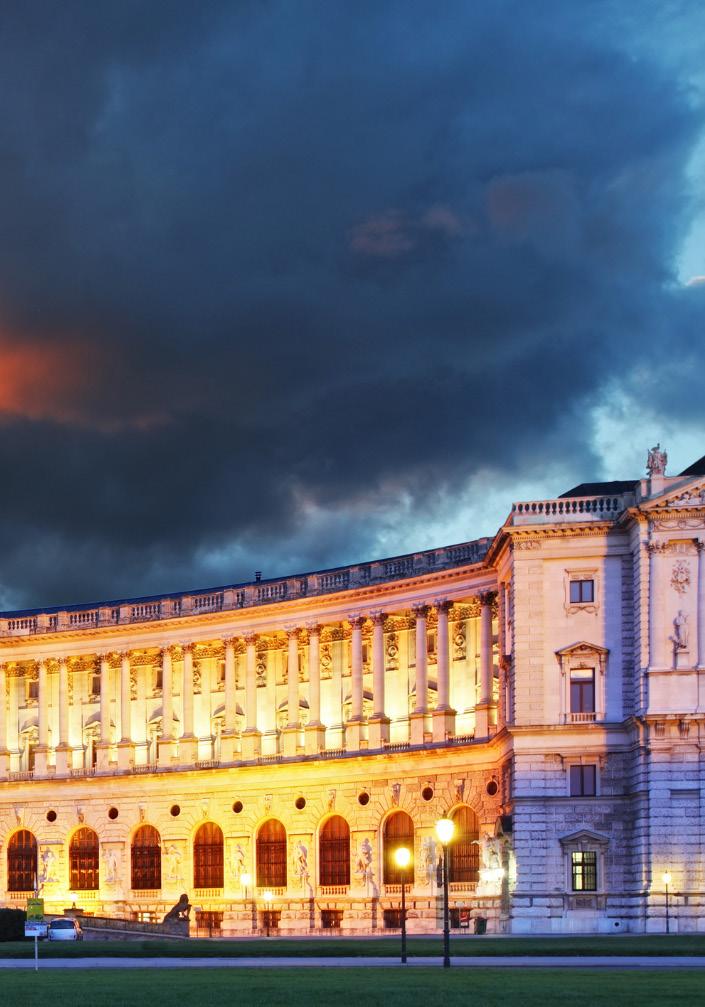
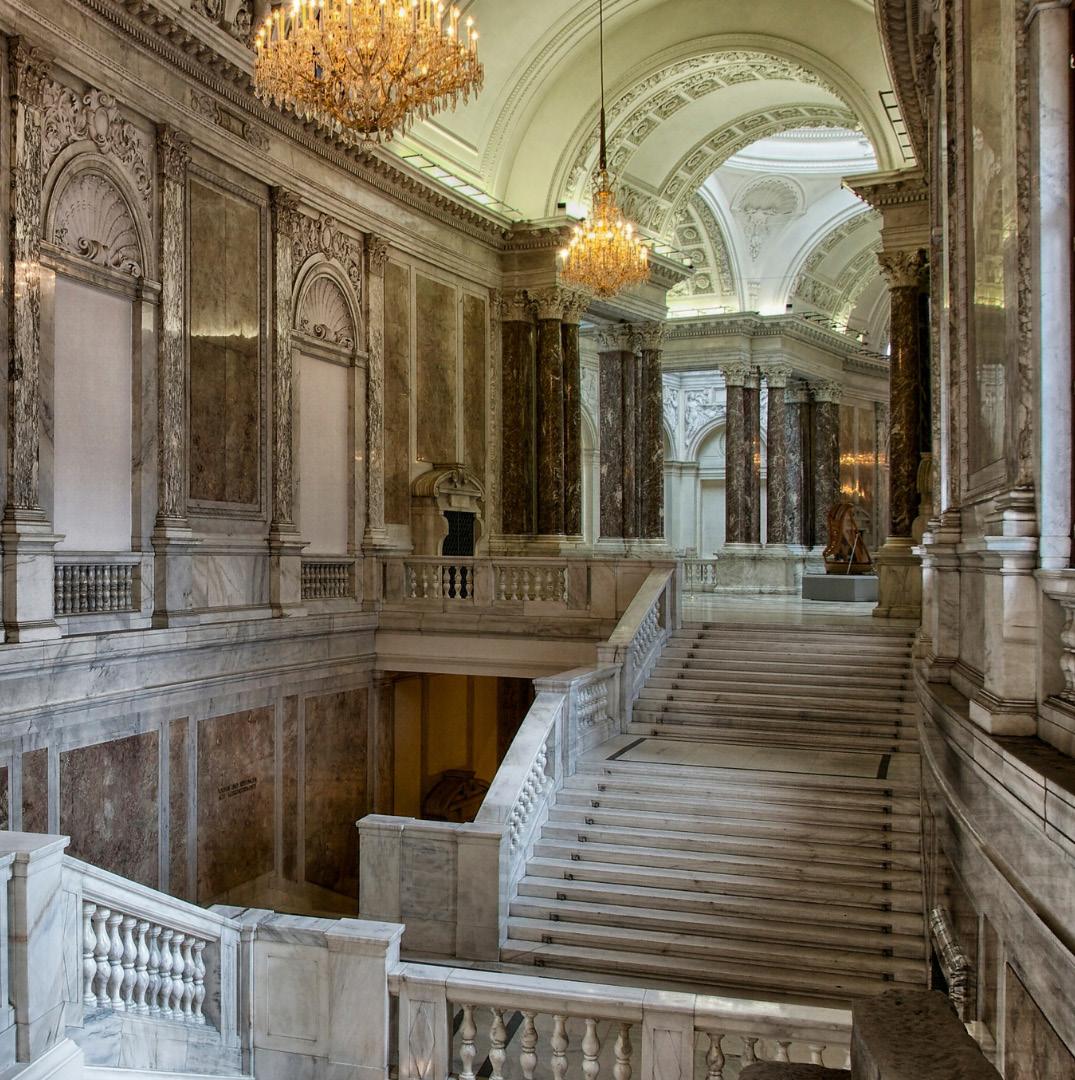
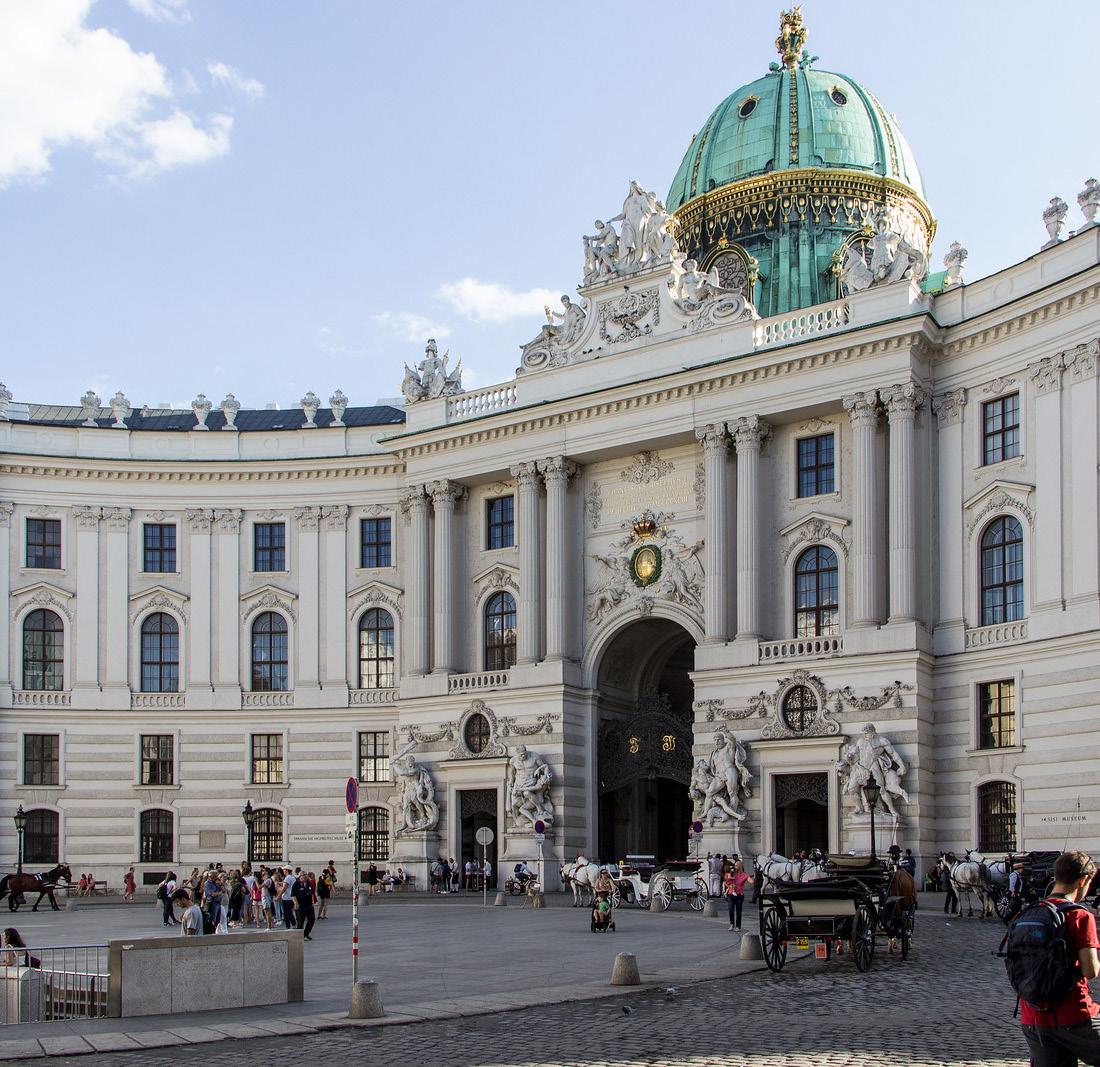
and Empress Elisabeth, known as “Sisi.” The Sisi Museum offers an intimate look at the empress’s life, displaying personal items and shedding light on her complex legacy. Another highlight is the Imperial Silver Collection, showcasing exquisite dining services and ceremonial tableware used during imperial banquets. Beyond its museums, the Hofburg houses the Spanish Riding School, where the worldrenowned Lipizzaner stallions perform elegant dressage, and the Austrian National Library, a Baroque masterpiece in its own right. Located in Vienna’s historic center, the Hofburg Palace isn’t just a monument—it’s a living symbol of Austria’s history, artistry, and cultural heritage. Visiting it offers a journey through centuries of imperial power, elegance, and tradition, making it an unmissable stop on any trip to Austria.
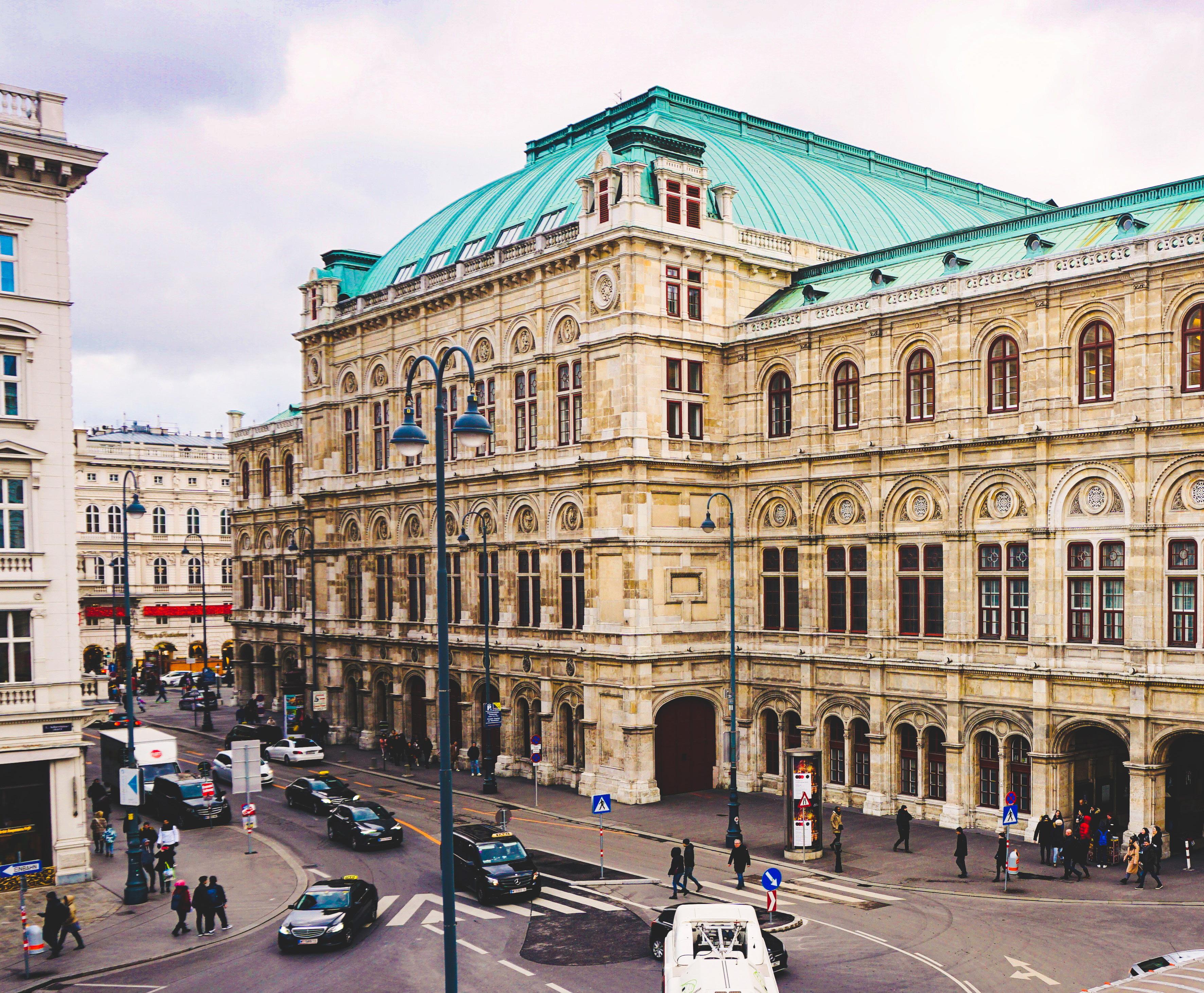
The Vienna State Opera House, or **Wiener Staatsoper**, is one of the world’s most prestigious and iconic opera venues, drawing music lovers and travelers alike. Opened in 1869 with a performance of Mozart’s *Don Giovanni*, the opera house quickly became a cornerstone of Vienna’s reputation as a global capital of classical music. Its elegant Neo-Renaissance façade, adorned with arches, statues, and intricate detailing, stands as a symbol of the city’s cultural grandeur. Inside, visitors are greeted by opulent interiors featuring marble staircases, chandeliers, and richly decorated foyers that reflect the artistic spirit of imperial Vienna. The main auditorium, with its perfect acoustics and seating for over 1,700 people, has hosted legendary performances by some of the greatest composers, conductors, and singers
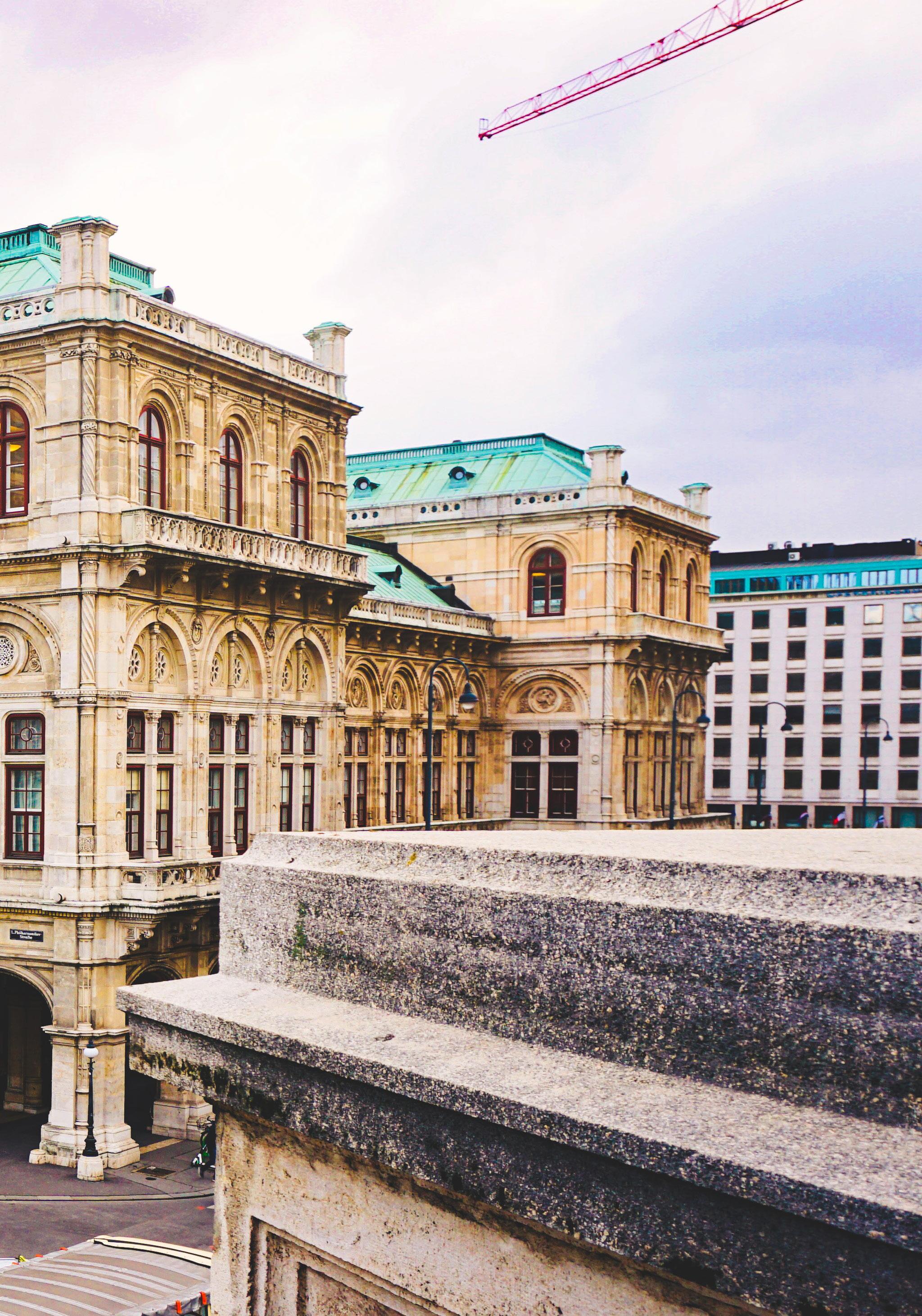
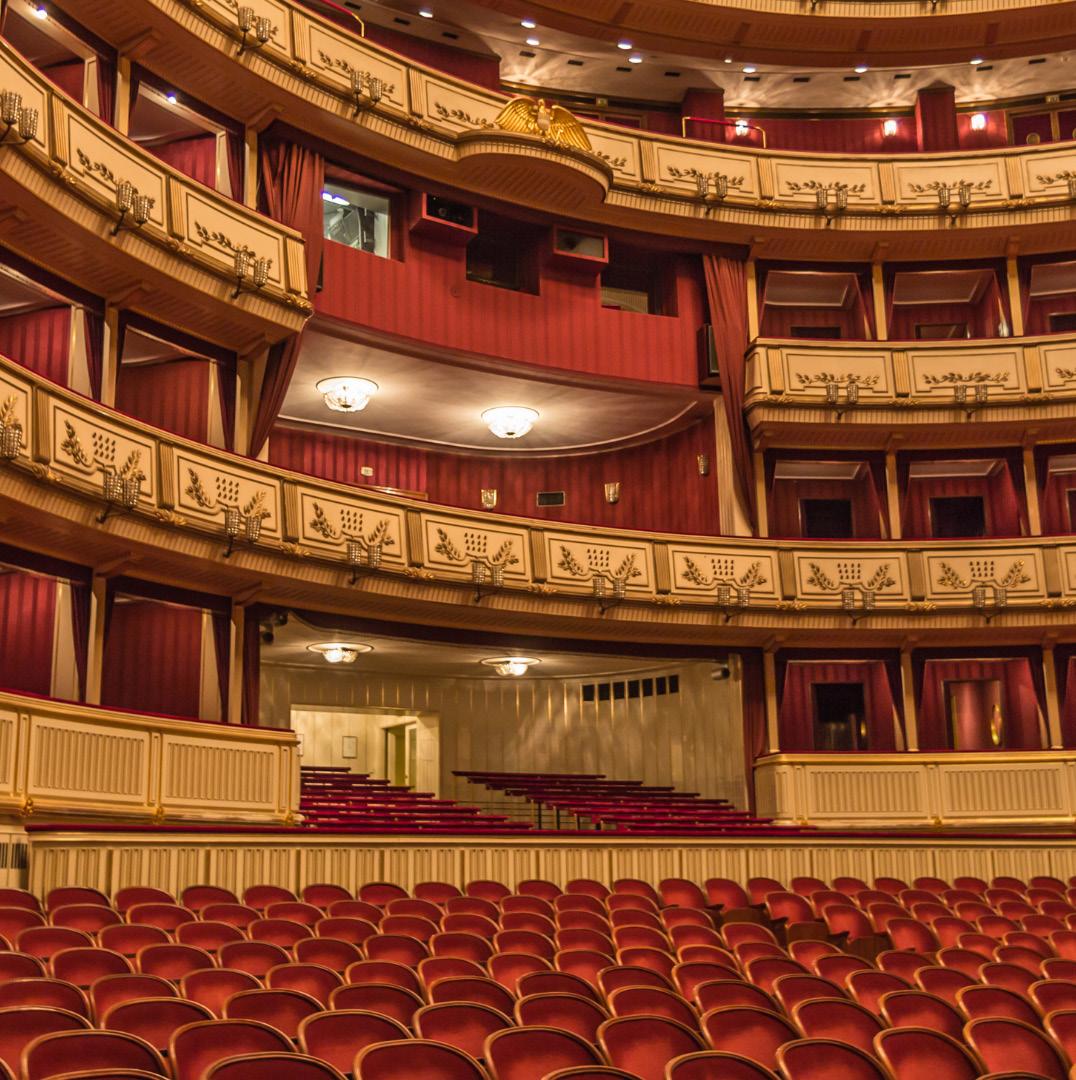
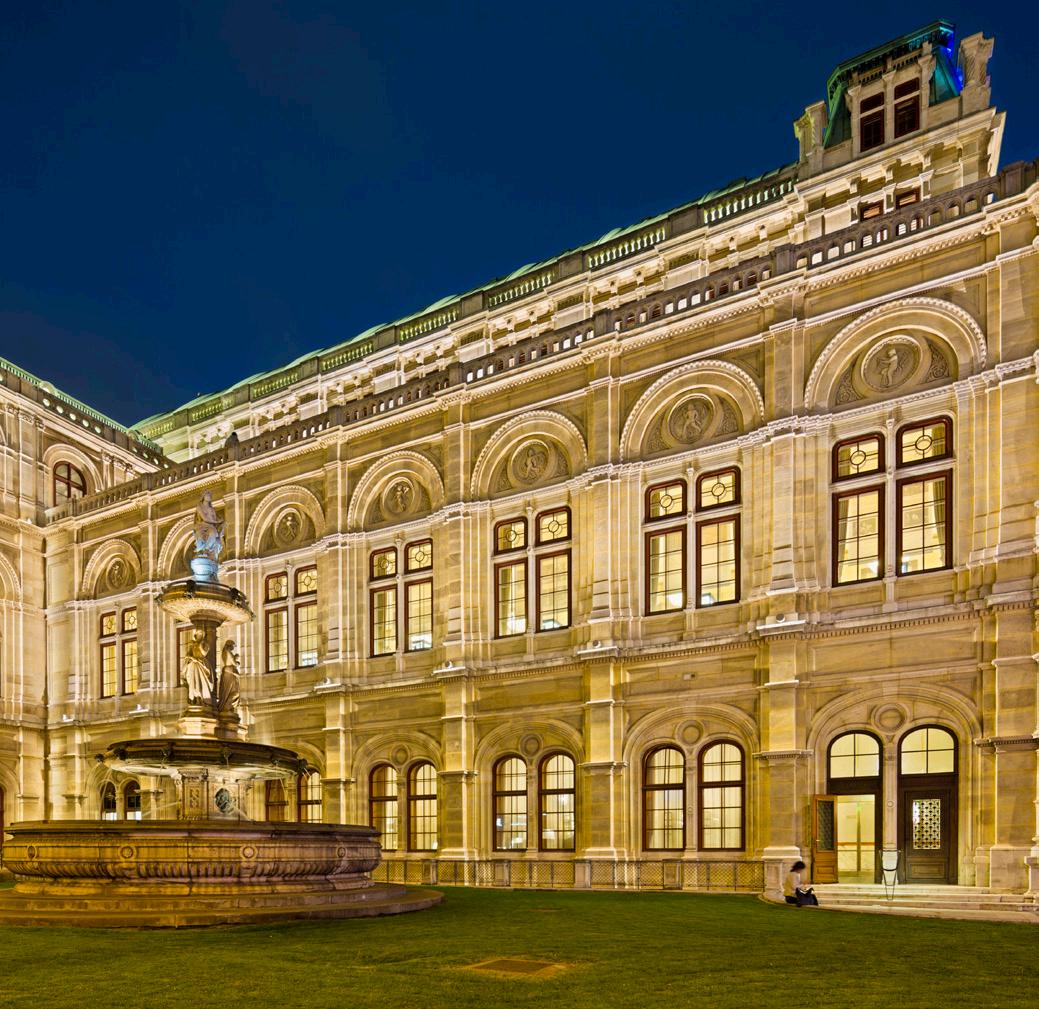
in history. The Vienna State Opera is not only a venue for timeless operas but also a living institution, staging around 350 performances annually—from Mozart and Verdi to modern works—making it one of the busiest opera houses in the world. For those unable to secure tickets to an evening show, daily guided tours offer behindthe-scenes access, revealing rehearsal spaces, historical anecdotes, and architectural secrets. Equally famous is the annual Vienna Opera Ball, a glittering event that transforms the opera house into a ballroom, attracting dignitaries and celebrities from around the globe. Whether attending a performance, touring the building, or simply admiring it from the bustling Ringstrasse, the Vienna State Opera embodies the soul of Vienna’s artistic legacy and its enduring passion for music.
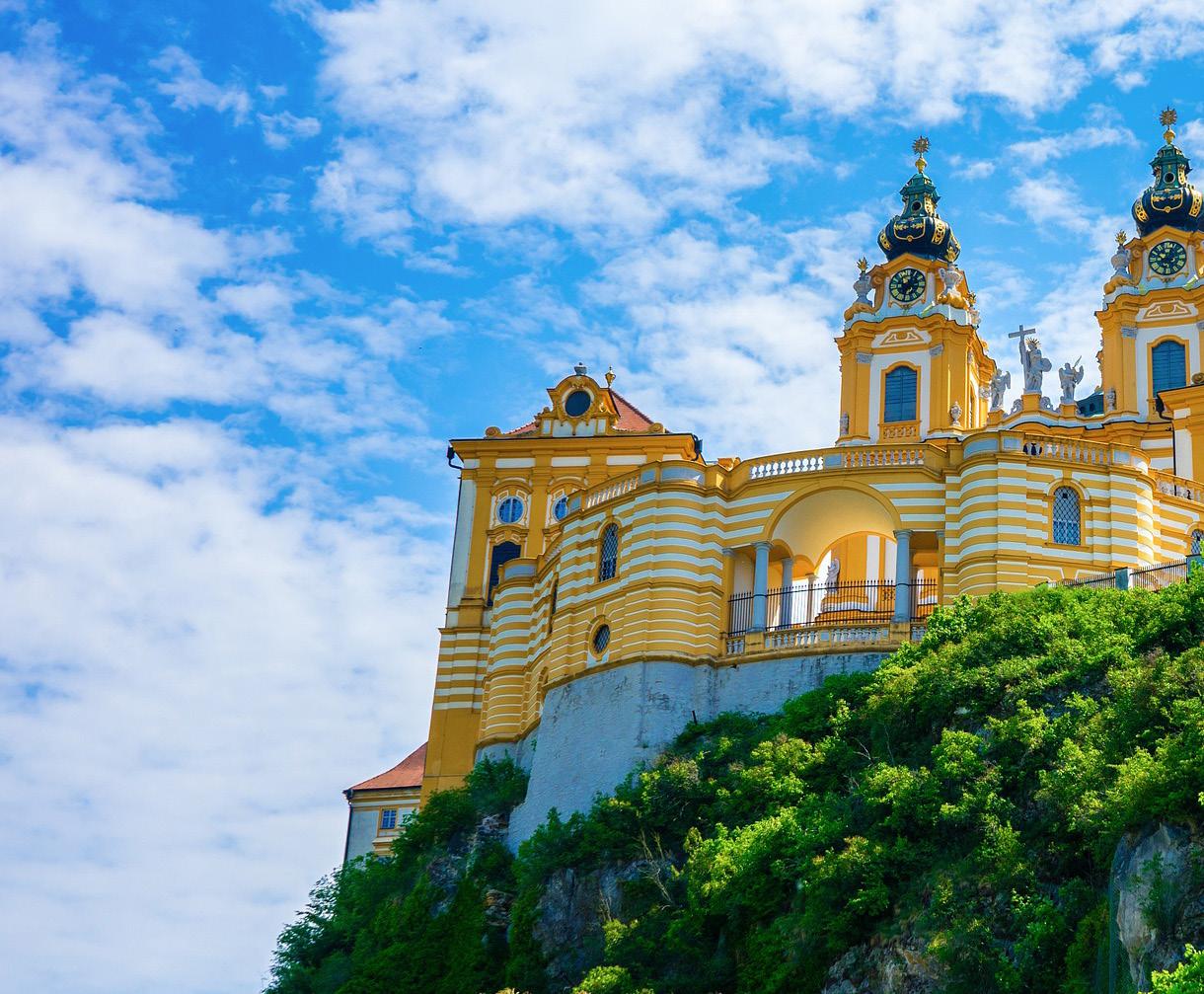
Melk Abbey, perched high on a rocky bluff overlooking the Danube River in Lower Austria, is one of Europe’s most magnificent Baroque masterpieces. Founded as a Benedictine monastery in 1089, it has been a center of learning, culture, and faith for more than 900 years. Today, the abbey remains an active monastery and one of Austria’s most visited landmarks, drawing travelers from around the world. The current Baroque complex, constructed between 1702 and 1736, dazzles visitors with its grandeur. The ornate façade, crowned by twin towers, leads to interiors rich in gold, marble, and intricate frescoes. The Abbey Church, often described as one of the finest Baroque churches in the world, captivates with its soaring ceilings, gilded altar, and vivid frescoes by Johann Michael Rottmayr and Paul Troger. Equally
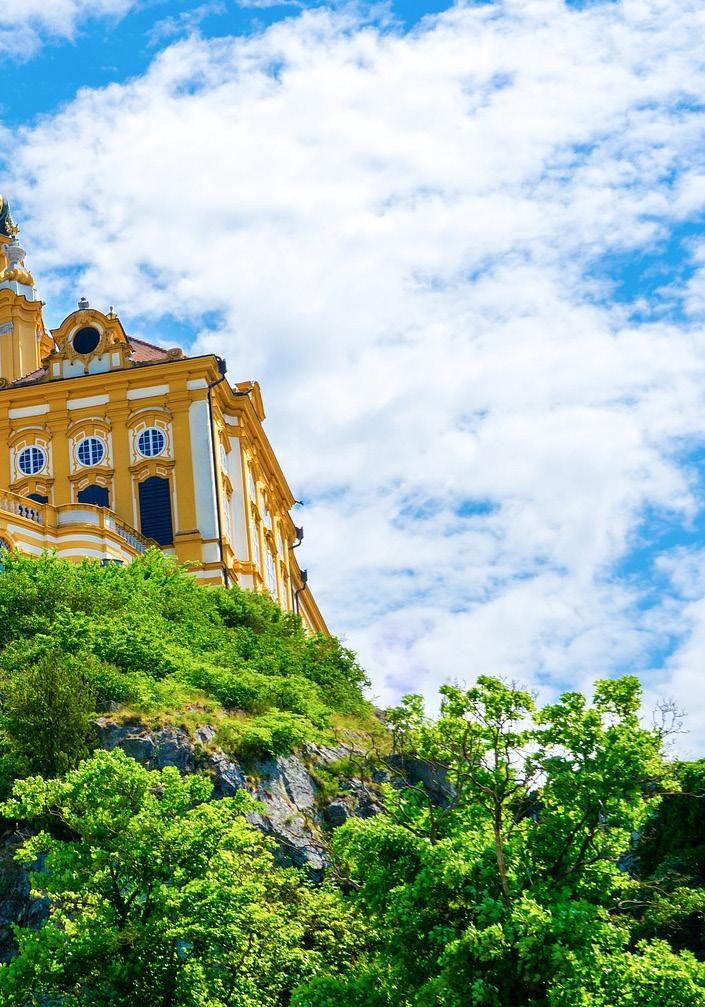
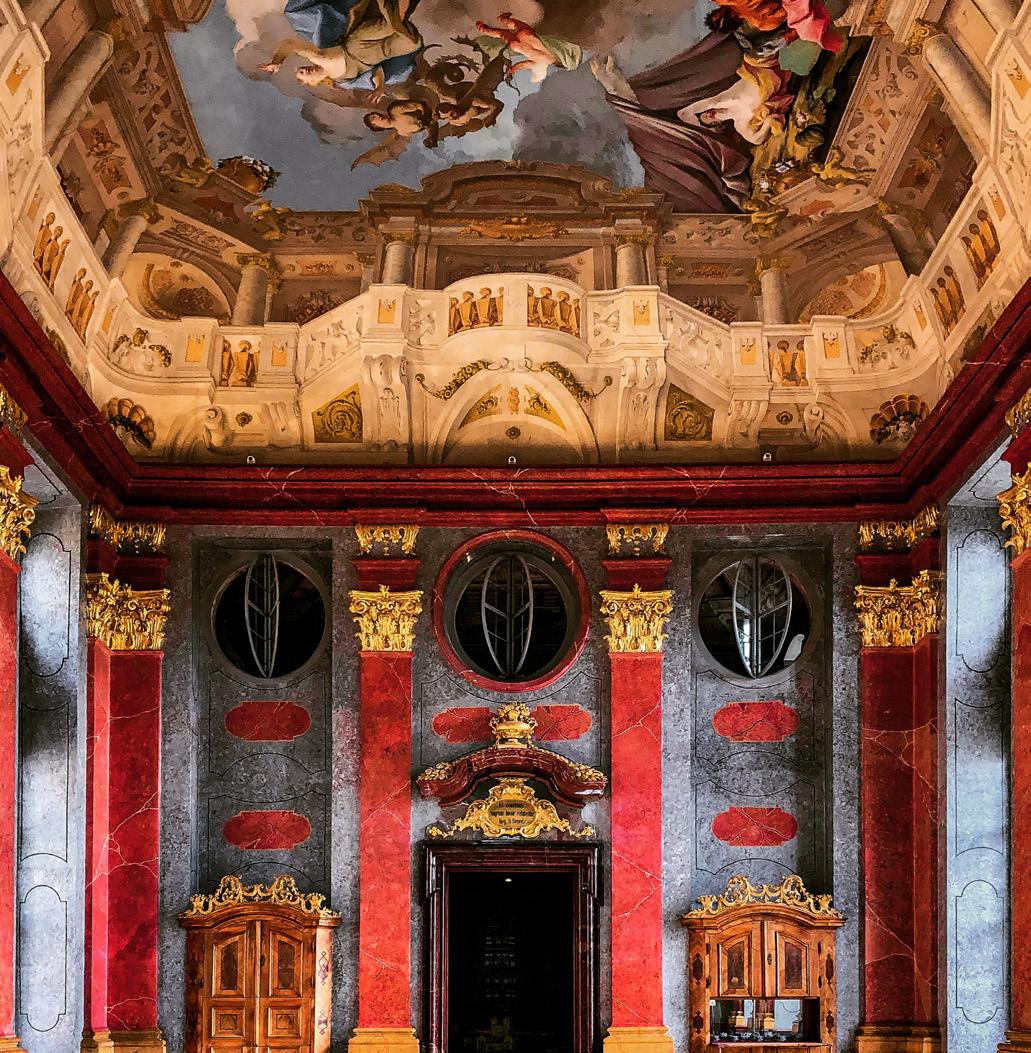
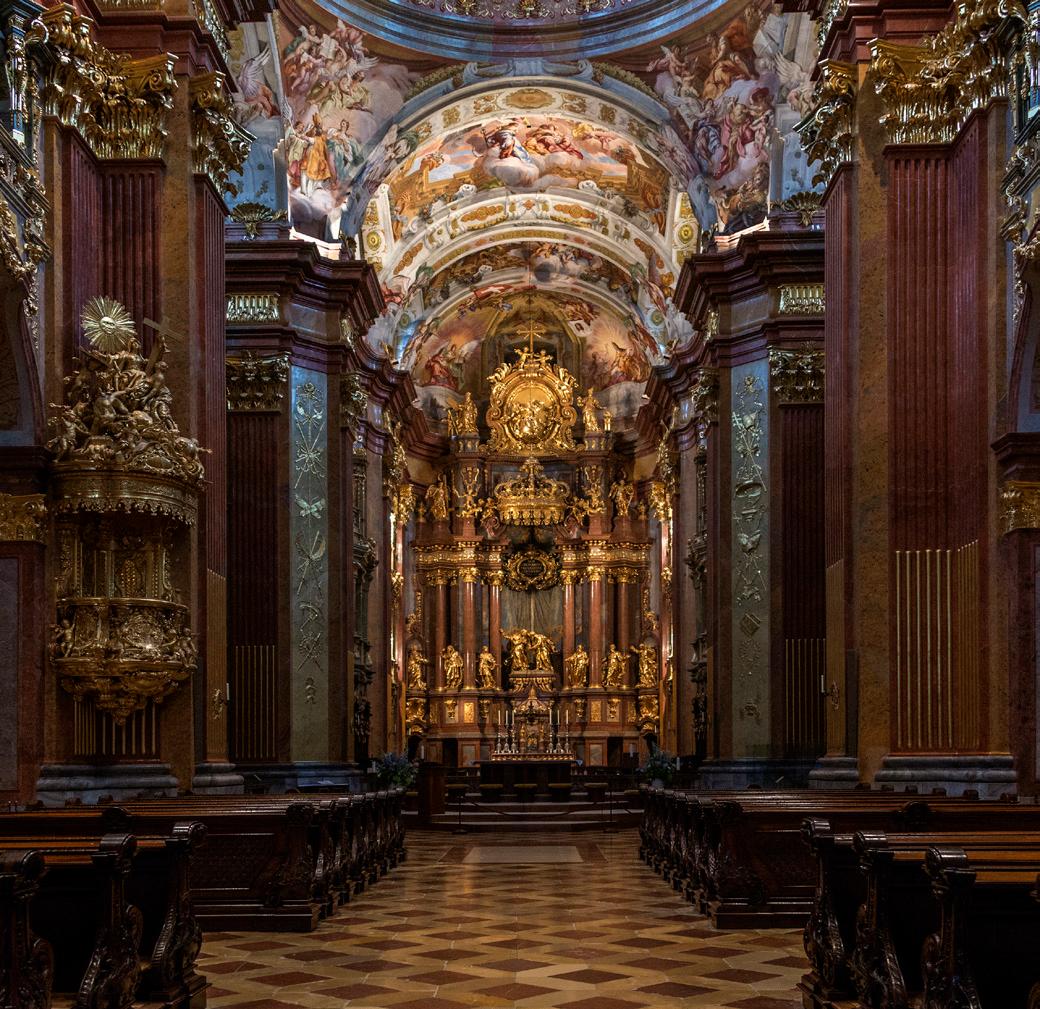
fascinating is the Melk Abbey Library, a treasure trove of over 100,000 volumes, including medieval manuscripts and early printed books. Its ceiling fresco celebrates the pursuit of knowledge as a divine calling, a testament to the Benedictine tradition of scholarship. Outside, terraced gardens and panoramic viewpoints offer sweeping vistas of the Wachau Valley, a UNESCO World Heritage Site famed for its vineyards and river scenery. Visitors often combine a tour of the abbey with Danube cruises or bike rides along the valley. Whether admired for its art, history, or spiritual legacy, Melk Abbey stands as a stunning symbol of Austria’s cultural richness, offering an unforgettable experience for travelers seeking beauty and inspiration.
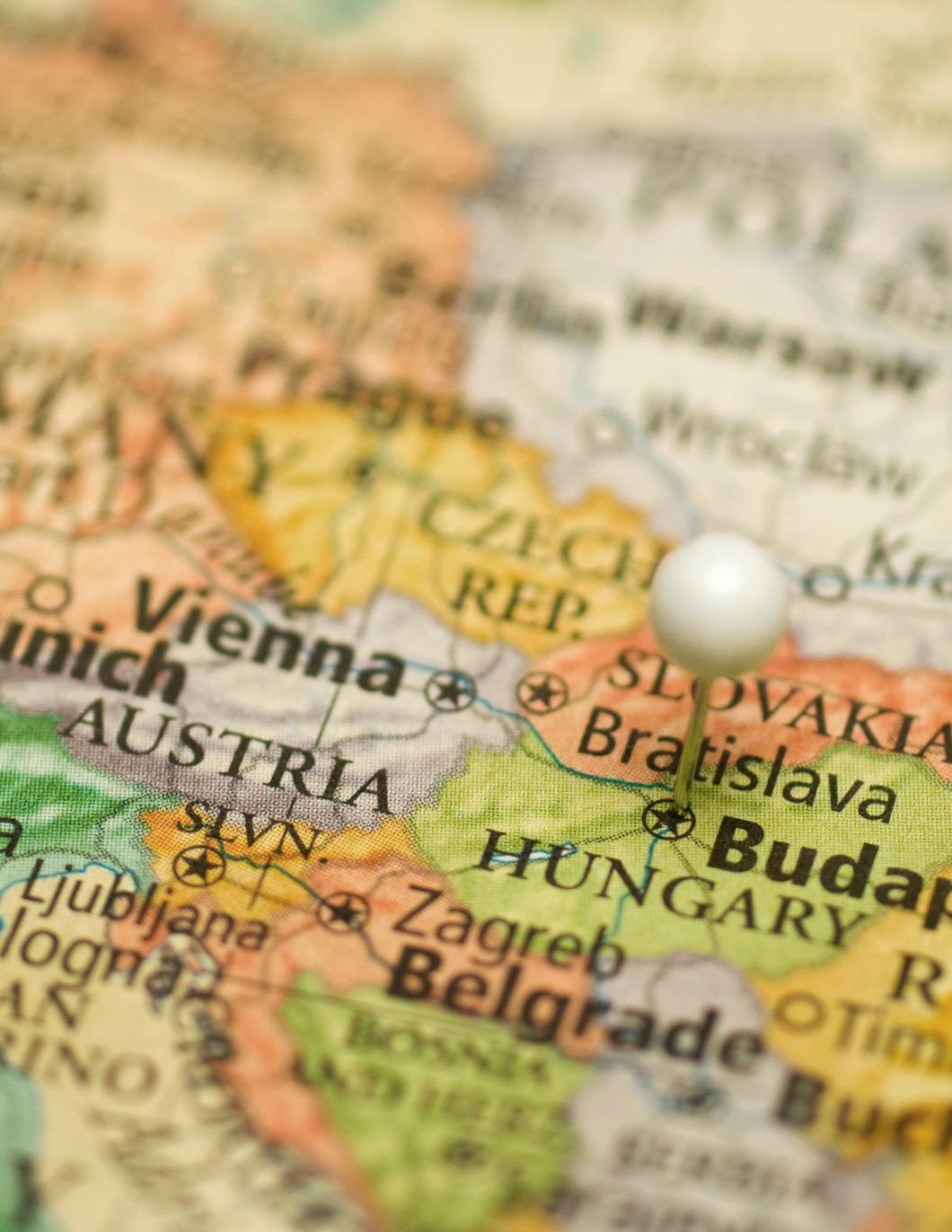
May your pilgrimage to Central Europe be filled with blessings, discovery, and moments of deep reflection. As you journey through sacred sites, historic churches, and landscapes rich with centuries of faith and tradition, may you find inspiration in the beauty of the region and peace in its quiet corners. May each step bring you closer to the heart of your spiritual path, each encounter offer kindness and connection, and each sunrise remind you of the grace guiding your way. Safe travels, and may this pilgrimage leave you renewed in spirit and enriched in soul.
Safe travels and enjoy every moment!

